- Search Please fill out this field.
- Newsletters
- Destinations

Jagannath Temple in Puri: Essential Visitor Guide
What to Know When Visiting Odisha's Jagannath Temple
:max_bytes(150000):strip_icc():format(webp)/10947453_10153084623948270_8191342691038933499_o-591d1e8d3df78cf5fa731909.jpg)
Sharell Cook.
The Jagannath temple in Puri, Odisha , is one of the holy char dham abodes of God that are considered to be extremely auspicious for Hindus to visit (the others are Badrinath , Dwarka, and Rameshwaram). If you don't let money-hungry Hindu priests (locally known as pandas ) mar your experience, you'll find that this massive temple complex is a remarkable place. However, only Hindus are allowed inside.
Puri is just under two hours south of Bhubaneshwar , Odisha's capital city. The nearest airport is situated in Bhubaneshwar. There are frequent buses and trains from Bhubaneshwar to Puri. Puri's railway station also receives long distance trains from all over India.
Temple History and Deities
Construction of the Jagannath temple dates back to the 12th century. It was initiated by Kalinga ruler Anantavarman Chodaganga Dev and later completed, in its current form, by King Ananga Bhima Deva.
The temple is home to three deities -- Lord Jagannath, his elder brother Balabhadra, and sister Subhadra -- whose substantially sized wooden idols sit on a throne. Balabhadra is six feet tall, Jagannatha is five feet, and Subhadra is four feet tall.
Puri is regarded by Hindus as one of the four holy Char Dham — sacred abodes associated with Lord Vishnu (the Hindu god of preservation) in India. Lord Jagannath is considered to be a form of Lord Vishnu, who has descended to earth to provide protection during the current Kali Yuga (dark age). He's the presiding deity of Odisha and is integrally worshiped by most households in the state. The culture of Jagannath worship is a unifying one that promotes tolerance, communal harmony, and peace.
Based on the C har Dham , Lord Vishnu dines at Puri (he bathes at Rameswaram, gets dressed and anointed at Dwarka, and meditates at Badrinath). Hence, a great deal of significance is given to food at the temple. Referred to as mahaprasad , Lord Jagannath permits his devotees to partake in eating the 56 items that are offered to him, as a means of redemption and spiritual advancement.
Important Features of the Temple
The Jagannath temple has four entry gates, each facing a different direction. The main gate on the eastern side of the temple, known as Lion Gate, is guarded by two stone lions. An unmissable towering pillar known as Aruna Stambha stands about 11 meters high outside it. The pillar represents the charioteer of the Sun God and used to be part of the Sun Temple in Konark . However, it was relocated in the 18th century after the temple was abandoned, in order to save it from invaders.
The temple's inner courtyard is reached by climbing 22 steps (called Baisi Pahacha) from the main gate. There are approximately 30 smaller temples surrounding the main temple, and ideally, they should all be visited before seeing the deities in the main temple. However, devotees who are short on time can make do with just visiting the three most important smaller temples beforehand. These are the Ganesh temple, Vimala temple, and Laxmi temple.
Other notable features inside the 10-acre Jagannath temple complex include:
- an ancient Kalpavata banyan tree, which is said to fulfill devotees' wishes.
- the world's largest kitchen where the mahaprasad is cooked in clay pots. Apparently, the kitchen produces enough food to feed 100,000 people each day!
- Anand Bazaar where the mahaprasad is sold to devotees in various sized pots. It's available throughout the day but fresh dishes are provided after 2-3 p.m. Anand Bazaar can be directly accessed by taking the north gate exit.
- a small museum called Niladri Vihar near the western gate, dedicated to Lord Jagannath and the 12 incarnations of Lord Vishnu.
- Koili Baikuntha, where Lord Krishna was believed to have been cremated after being accidentally killed by hunter Jara Savara. It's in the northwest corner of the temple, between the inner and outer compound wall. During the Nabakalebar ritual, new idols of Lord Jagannath are carved out of wood and the old ones are buried there.
More than 20 different rituals are performed at the temple daily. The rituals reflect those carried out in everyday life, such as bathing, brushing teeth, getting dressed, and eating.
In addition, the flags tied to the temple's Neela Chakra are changed every day at sunset in a ritual that's been going on for 800 years. Two members of the Chola family, which was given exclusive rights to hoist the flag by the king who built the temple, perform the fearless feat of climbing 165 feet without any support to affix new flags. The old flags are sold to a few lucky devotees.
How to Visit the Temple
The Jagannath temple is open from 5 a.m. to midnight. To avoid the crowds, the best time to go is early in the morning around 7 a.m. after the first aarti ritual, or after 9 p.m. The ambiance is evocative at night, when lamps are lit and the temple is illuminated.
Vehicles, with the exception of cycle rickshaws, are not permitted near the temple complex. You'll need to take one or walk from the car park. The temple's main Lion Gate is located on Grand Road. Entry to the temple compound is free. You'll find guides at the entrance, who will take you around the temple complex for a negotiable fee (about 200 rupees). It's not compulsory to hire one though.
Due to government restrictions, it's no longer possible to go inside the inner sanctum of the temple where the deities are kept. Instead, the deities can be viewed from a distance, depending on how crowded it is. A new ticketed darshan (viewing) system is proposed but yet to be fully implemented.
There is also a ticket system in place for viewing the temple's famous kitchen. Tickets cost 5 rupees each. Don't miss it! The food is prepared in the same manner as it was centuries ago, with traditional methods and implements. About 15,000 new clay pots are transported to the temple every day for cooking in, as the pots are never reused.
Allow a couple of hours to completely explore the temple complex.
What to Keep in Mind
There are unfortunately many reports of greedy pandas forcefully demanding excessive amounts of money from devotees. Recent intervention and monitoring by the police has greatly curbed this problem. The pandas are known to be experts at extracting money from people though, particularly at the smaller temples within the complex.
If you are approached by any pandas , it's strongly recommended that you ignore them. If you do wish to avail of any of their services, make sure you negotiate the price beforehand and do not give any more than agreed. Most hotels have in-house pandas and you may be pushed to use their services. Be aware that you will pay a premium if you choose to.
If you wish to donate money to the temple, do so only at the official donation counter and obtain a receipt. Don't hand over money to the pandas or anyone else.
Barricades have been placed inside the temple to ensure the orderly flow of devotees and reduce harassment by pandas. There's a rush towards the inner sanctum though.
Note that you're not permitted to carry any belongings inside the temple, including cell phones, shoes, socks, cameras, and umbrellas. All leather items are banned as well. There is a facility near the main entrance where you can deposit your items for safekeeping.
Why Can't Everyone Go Inside the Temple?
The rules of entry into the Jagannath temple have caused considerable controversy. Only those who are born Hindu are allowed inside the temple. However, there have been instances of famous Hindus being denied entry. These include Indira Gandhi (the third Prime Minister of India) because she had married a non-Hindu, Saint Kabir because he had dressed like a Muslim, Rabindrinath Tagore since he followed Brahmo Samaj (a reform movement within Hinduism), and Mahatma Gandhi because he came with dalits (untouchables, people without a caste).
There are no restrictions as to who can enter other Jagannath temples, so what's the issue at Puri?
Numerous explanations are given, with one of the most popular ones being that people who do not follow the traditional Hindu way of life are unclean. Since the temple is considered to be the holy seat of Lord Jagannath, it has special importance. The temple caretakers also feel that the temple is not a sightseeing attraction. It's a place of worship for devotees to come and spend time with the god that they believe in. Past attacks on the temple by Muslims are sometimes mentioned as reasons too.
In 2018, the Supreme Court asked the temple to consider allowing all visitors inside, irrespective of their religion. This is yet to be decided though.
If you're not a Hindu, you'll have to be content with viewing the temple from the street or paying some money to view it from the roof of one of the nearby buildings (the old library opposite the main gate is a popular spot).
Ratha Yatra Festival
Once a year, in June or July, the idols are taken out of the temple in what is Odisha's biggest and most iconic festival. The Ratha Yatra festival sees the gods being transported around on towering chariots, which have been made to resemble temples. The construction of the chariots commences earlier in the year and is an intensive, detailed process.
What Else to Do Nearby
Local responsible tourism company Grass Routes Journeys offers an interesting and insightful three-hour guided tour of the Old City surrounding the Jagannath Temple (including the pottery area). This tour is highly recommended for foreigners who aren't permitted to go inside the temple but want to learn about it.
Raghurajpur handicraft village is about 15 minutes by car from Puri. There, artisans carry out their crafts while sitting in front of their prettily painted houses. Pattachitra paintings are a specialty.
Puri's carnival-like main beach is a huge attraction for Indian tourists. They flock there in droves to frolic in the water, and go for joy rides on horses and camels along the sand.
The magnificent 13th century Konark Sun Temple, a UNESCO World Heritage Site, is commonly visited as a side trip from Puri.
Related Articles
More related articles.
Best Time to Visit Jagannath Temple
The Jagannath Temple, located in Puri, Odisha, is one of the most revered Hindu temples in India. Devotees from all over the world visit this sacred shrine to seek the blessings of Lord Jagannath, Balabhadra, and Subhadra. The temple, known for its intricate architecture and rich religious history, is a must-visit destination for those interested in Hindu culture and spirituality.
While the temple holds a spiritual allure year-round, the best time to visit Jagannath Temple depends on a variety of factors, including weather, season, and temperature. In this comprehensive guide, we will explore the different seasons in Puri, their respective weather conditions, and the ideal time for a pilgrimage to ensure a comfortable and spiritually fulfilling visit.
Table of Contents
Understanding Puri’s Climate
Puri, a coastal city in Odisha, experiences a tropical monsoon climate. The city is known for its high humidity levels, which can make certain times of the year less comfortable for tourists. Understanding Puri’s climate is crucial when planning your visit to the Jagannath Temple.
- Also read : Jagannath Temple Timings and Rituals
Summer (March to June)
Summer in Puri is hot and humid. The temperature during this season often soars above 40°C (104°F). The scorching sun can make outdoor activities uncomfortable. Visiting the temple during this time can be challenging due to the oppressive heat. However, if you are planning your visit during this period, it’s advisable to visit the temple early in the morning or late in the evening to avoid the peak heat.
Monsoon (July to September)
Monsoon in Puri brings relief from the sweltering summer heat but introduces heavy rainfall and high humidity. While the lush green surroundings and cool breeze can be refreshing, visiting the temple during monsoon can be tricky due to the risk of rain. If you do choose to visit during this season, be prepared with rain gear and consider the reduced crowds as a silver lining.
Autumn (October to November)
Autumn is considered one of the best times to visit the Jagannath Temple. The weather during this season is pleasant, with clear skies and comfortable temperatures ranging from 20°C to 30°C (68°F to 86°F). The city comes alive with various cultural and religious festivals, making your visit even more enriching. This season also offers a beautiful view of the temple against a clear blue sky.
Winter (December to February)
Ideal Time to Visit Jagannath Temple
To determine the best time to visit Jagannath Temple, consider the following factors:
Spiritual Significance : For many devotees, the spiritual significance of a visit to the temple is paramount. Irrespective of the weather, you may choose to visit during an important religious festival, like the Rath Yatra, which occurs in June or July. This annual chariot festival is a major event and attracts thousands of pilgrims from all over the world.
Weather Comfort : If you prefer pleasant weather conditions and wish to explore the temple and its surroundings without discomfort, the autumn and winter months (October to February) are the best options. You can enjoy the temple’s serene atmosphere and breathtaking architecture in milder temperatures.
Crowd Avoidance : If you wish to avoid large crowds and long queues, plan your visit during the off-peak season, which typically occurs during the monsoon months (July to September). While the weather may be less favorable, you can have a more peaceful and intimate experience at the temple.
Photography Enthusiasts : If you’re keen on capturing the temple’s beauty through photography, consider visiting during the winter months. The clear skies and soft winter light provide excellent conditions for photography, allowing you to capture the temple’s intricate details and surroundings.
Important Festivals and Events
One of the key considerations when planning your visit to Jagannath Temple is the timing of important festivals and events. These occasions add an extra layer of spiritual and cultural significance to your pilgrimage. Here are some notable events to keep in mind:
Rath Yatra : The Rath Yatra, also known as the Chariot Festival, is a significant event in Puri. It usually occurs in June or July and involves the procession of idols on grand chariots. Witnessing this festival is a unique and spiritually enriching experience.
Makar Sankranti : Celebrated in mid-January, Makar Sankranti marks the arrival of spring. Pilgrims take a holy dip in the sea during this festival. The temple is beautifully decorated, and it’s a great time to witness the traditions and rituals.
Puri Beach Festival : If you are interested in experiencing the rich culture of Puri, plan your visit during the annual Puri Beach Festival. It usually takes place in November and showcases traditional dance, music, and art forms.
Practical Tips for a Temple Visit
Here are some practical tips to ensure a smooth and fulfilling visit to Jagannath Temple:
Dress Code : The temple has a strict dress code. Devotees are required to wear modest clothing that covers their shoulders and knees. It’s advisable to dress conservatively to respect the religious customs.
Footwear : Shoes are not allowed inside the temple premises. You can either leave your footwear in designated areas or carry them in a bag.
Queues and Timings : The temple can get crowded, so it’s a good idea to arrive early in the morning to avoid long queues. Check the temple’s opening and closing times, as they may vary.
Respectful Behavior : Maintain a respectful and quiet demeanor while inside the temple. Remember that this is a place of worship for many, and silence is often observed.
Photography : While photography is generally allowed, respect the rules and guidelines provided by the temple authorities. Ensure that you don’t disrupt the prayers and rituals.
The best time to visit Jagannath Temple depends on your personal preferences, whether they are based on weather, season, or the desire to witness important festivals. Each season in Puri has its unique charm and character, making it a suitable destination for spiritual seekers and cultural enthusiasts alike.
Ultimately, the best time for your visit will depend on your individual priorities. Whether you seek spiritual solace, pleasant weather, cultural experiences, or an opportunity to witness grand festivals, planning your visit to Jagannath Temple accordingly will ensure a memorable and spiritually enriching pilgrimage to this sacred destination.
3 thoughts on “Best Time to Visit Jagannath Temple”
How the rush will be in March 2week?how long we have to wait for darshan?
How is the rush in the temple in last week of September?
We, 11 persons(2Kids) coming darshan on April 15th Morning there. We need one Authorised Guide from Temple office. What we do? Please help us. Harikumar. V
Leave a Reply Cancel reply
Your email address will not be published. Required fields are marked *
Plan Your Trip Our expert will get in touch with you shortly
Mobile No *

How to Travel to Jagannath Puri: A Budget-Friendly Guide to Your Memorable Journey
To travel to Jagannath Puri, take a train from the well-connected railway junction. Puri has regular train services from major cities. The nearest airport is Biju Patnaik International Airport in Bhubaneswar, located 56 km away. Taxis are available from the airport, ensuring easy access to Puri for your visit.
Once you arrive, consider budget accommodations like guesthouses and hostels. These options offer comfort without a heavy price tag. Local eateries serve delicious Odia cuisine at reasonable rates. Savor traditional dishes like Dalma and Pakhala without overspending.
Exploring Puri is simple and cost-effective. Visit the iconic Jagannath Temple, which is free to enter. Participate in the vibrant local culture by attending festivals like Rath Yatra. These gatherings provide insight into the community’s traditions.
For activities, stroll along Puri Beach; it offers both relaxation and scenic beauty at no cost. Opt for shared auto-rickshaws or cycle rentals to navigate the town efficiently.
With these budget-friendly tips, you can enjoy a memorable journey to Jagannath Puri. Next, we will look into essential items to pack for your trip, ensuring you have everything needed for a fulfilling adventure.
Table of Contents
What Are the Best Ways to Travel to Jagannath Puri?
To travel to Jagannath Puri, the best ways include train, bus, air, and car travel.
- Train Travel
Traveling to Jagannath Puri involves various options that cater to different preferences and budgets. Each method has its unique advantages and can impact your overall experience significantly.
Train Travel : Train travel offers a convenient and economical way to reach Jagannath Puri. Indian Railways operates numerous trains from major cities. Puri Railway Station is just 2.5 kilometers from the temple. According to a report from Indian Railways, Puri is a popular destination, with trains frequently running from cities like Kolkata, Bhubaneswar, and Visakhapatnam. This travel method allows passengers to enjoy scenic views along the East Coast Railway route.
Bus Travel : Bus travel is another affordable option. State-run buses operate from nearby cities such as Bhubaneswar and Cuttack. Private operators also provide comfortable services. The distance from Bhubaneswar to Puri is approximately 60 kilometers, taking about 2 hours. Buses are often well-maintained and provide a direct route to the temple area. For budget travelers, this is an ideal choice.
Air Travel : Air travel offers a quick route to Jagannath Puri, with Biju Patnaik International Airport in Bhubaneswar being the nearest major airport. It is around 60 kilometers away from Puri. Several airlines connect Bhubaneswar to major Indian cities. Passengers can choose to travel by taxi or bus from the airport to their destination. This is the fastest way but also the most expensive.
Car Travel : Car travel allows flexibility in scheduling and route choices. The journey from Bhubaneswar to Jagannath Puri can be completed in about 1.5 to 2 hours. The National Highway 16 offers a well-maintained road with plenty of dining options along the way. For families or groups, this method can be cost-effective and convenient.
Each travel option presents distinct benefits and considerations, allowing travelers to select what aligns best with their preferences and budget.
How Can You Get to Jagannath Puri by Air, Train, and Road?
You can reach Jagannath Puri by air, train, or road, with each method offering unique advantages.
Traveling by air: The nearest airport to Jagannath Puri is Biju Patnaik International Airport in Bhubaneswar, about 60 kilometers away. Key points include: – Flight connections: Major cities in India connect to Bhubaneswar, including Delhi, Mumbai, and Kolkata. Airlines like Indigo and Air India provide frequent services. – Transfer to Puri: Upon arrival, you can hire a taxi or take a bus to Puri. The journey by road typically takes 1.5 to 2 hours.
Traveling by train: Puri has its own railway station, which is well connected to major cities. Important details include: – Train services: Various trains run to Puri from cities like Kolkata, Delhi, and Bhubaneswar. For example, the Jagannath Express links Kolkata to Puri daily. – Ticket options: Passengers can book tickets online through the Indian Railways website or at railway stations. Berth availability varies based on demand, especially during peak seasons and festivals.
Traveling by road: Puri is accessible via a network of highways. Consider these details: – National highways: The NH-16 connects Puri to other major cities. The distance from Bhubaneswar to Puri is about 60 kilometers. – Public transport: Buses, both state-run and private, operate regularly between Bhubaneswar and Puri. The journey takes around 2 hours. – Personal vehicles: If driving, you can enjoy scenic views along the route. Ensure proper navigation tools for a smooth journey.
Each travel option to Jagannath Puri provides accessibility and convenience, making it easier for pilgrims and tourists to visit this cultural hub.
What Are the Most Affordable Accommodation Options in Jagannath Puri?
The most affordable accommodation options in Jagannath Puri include budget hotels, guesthouses, hostels, and homestays.
- Budget Hotels
- Guesthouses
To better understand these options, let’s explore each category of accommodation in detail.
Budget Hotels : Budget hotels in Jagannath Puri provide basic amenities at lower rates. They often feature simple rooms, complimentary breakfast, and free Wi-Fi. Prices typically range from $15 to $30 per night. Examples include Hotel Shree Mandir and Hotel Golden Dust. According to a survey by TripAdvisor in 2023, these establishments are popular among travelers seeking convenient and economical stays.
Guesthouses : Guesthouses offer a more personalized experience with fewer guests. They usually come with shared kitchens and common areas, allowing interaction among visitors. Prices vary from $10 to $25 per night. Properties like Swagatika Guest House and Puri Hotel Heritage received positive reviews for their hospitality and value.
Hostels : Hostels cater mainly to backpackers and young travelers. They often feature dormitory-style accommodations, making them the most economical choice. Rates start as low as $7 per night. The Puri Backpackers Hostel is known for its vibrant atmosphere and social activities.
Homestays : Homestays provide an opportunity to stay with local families, offering cultural immersion. They typically cost between $15 and $35 per night. Families host visitors, providing meals and insights into local traditions. Case studies, such as those from airbnb.com, show high satisfaction rates among guests seeking authentic experiences.
Where Can You Find Budget Hotels and Guesthouses in Jagannath Puri?
You can find budget hotels and guesthouses in Jagannath Puri in several ways. Start by searching online travel platforms like Booking.com and Agoda. These sites offer various options and customer reviews. You can also check local listings on Google Maps for budget accommodations. Look for guesthouses along the beachfront and main roads, as they often provide affordable rates. Additionally, ask for recommendations from fellow travelers on forums like TripAdvisor or travel blogs focused on Puri. Lastly, consider visiting the area and exploring options in person, as some places may not be listed online.
What Must-Visit Attractions and Experiences Await You in Jagannath Puri?
Jagannath Puri offers several must-visit attractions and unique experiences. Key highlights include the Jagannath Temple, Puri Beach, the annual Rath Yatra festival, and nearby Chilika Lake.
- Jagannath Temple
- Rath Yatra Festival
- Chilika Lake
- Konark Sun Temple
- Local Cuisine
- Cultural Experiences
These attractions provide a mix of spiritual, natural, and cultural experiences that cater to diverse interests.
Jagannath Temple : The Jagannath Temple is a prominent Hindu temple dedicated to Lord Jagannath, who is considered a form of Lord Krishna. This temple is a significant pilgrimage site for millions of devotees. It showcases remarkable architecture and intricate wood carvings. The temple’s main attraction is the annual Rath Yatra, where the deities are taken in grand chariots through the streets.
Puri Beach : Puri Beach is known for its expansive coastline and vibrant atmosphere. The beach offers opportunities for relaxation, swimming, and various water sports. Visitors can enjoy local handicrafts offered by beach vendors. The sunrise and sunset views add to its charm.
Rath Yatra Festival : The Rath Yatra Festival is an iconic event in Puri, drawing thousands of visitors every year. This festival celebrates the annual journey of Lord Jagannath, his siblings, and their chariots. It typically occurs in June or July. The grand procession is a visual spectacle and an immersive cultural experience.
Chilika Lake : Chilika Lake is a large brackish water lagoon that is a hotspot for biodiversity. It is home to numerous bird species and provides opportunities for boat rides and birdwatching. The lake is also renowned for its seafood, particularly in the fishing communities surrounding it.
Konark Sun Temple : The Konark Sun Temple, located about 35 kilometers from Puri, is a UNESCO World Heritage Site. It is dedicated to the Sun God and is renowned for its stunning architecture resembling a giant chariot. Its intricate stone carvings depict various deities, motifs, and scenes from everyday life.
Local Cuisine : Puri offers a rich culinary experience with its famous dishes like ‘Puri’ and ‘Chhena Poda’. Street food, such as ‘Dahi Bara’ and ‘Aloo Dum’, is popular among tourists. Dining at local eateries adds to the cultural immersion.
Cultural Experiences : Puri is also a center for traditional arts, crafts, and performing arts. Visitors can explore local markets for handicrafts and textiles. Engaging with locals provides deeper insights into the region’s culture and traditions.
Each attraction reflects Puri’s spiritual essence and cultural richness, ensuring a memorable visit for every traveler.
Which Religious Sites Should You Include in Your Itinerary When Visiting Jagannath Puri?
When visiting Jagannath Puri, include the following religious sites in your itinerary for a comprehensive spiritual experience.
- Gundicha Temple
- Loknath Temple
- Balukhand Wildlife Sanctuary
- Sakhigopal Temple
These sites offer diverse perspectives on religious significance and cultural experience, with options for both landmark and less-frequented locations. The perspectives can vary based on individual interests in history, architecture, and local traditions.
Jagannath Temple : The Jagannath Temple is a fundamental pillar of Puri’s religious landscape. It is dedicated to Lord Jagannath, a form of Lord Vishnu. This temple attracts millions of pilgrims annually, especially during the famous Rath Yatra festival. The temple architecture showcases intricate carvings and a massive tower, which is a significant feature in Kalinga architecture. According to the Archaeological Survey of India, the temple’s construction dates back to the 12th century, indicating its historical and cultural importance.
Gundicha Temple : The Gundicha Temple is the annual destination for the Rath Yatra procession. It is believed to be the garden palace of Lord Jagannath. This temple offers insights into the local worship practices as devotees celebrate the return of Jagannath, Subhadra, and Balabhadra to their garden abode. The temple has a unique simplicity compared to the main Jagannath Temple, giving it a serene atmosphere that attracts visitors seeking peace amidst festivities.
Loknath Temple : The Loknath Temple is dedicated to Lord Shiva and is another essential site for pilgrims. Located near the sea, devotees believe that worshiping here grants salvation. The temple is noted for its beautiful landscape and tranquil setting, making it a peaceful retreat after the bustling temple scenes. Visitors often highlight the spiritual connection felt in this serene atmosphere.
Balukhand Wildlife Sanctuary : The Balukhand Wildlife Sanctuary is not only a religious site but also a natural heritage location. It lies on the coastal fringe and is home to various flora and fauna. This sanctuary allows visitors to appreciate the beauty of nature and its connection to spiritual beliefs in Hinduism. The serene environment serves as a backdrop for reflection and meditation.
Sakhigopal Temple : The Sakhigopal Temple is renowned for its legend of love and devotion, where Lord Krishna is said to have granted a boon to His devoted follower. The temple’s architecture features exquisite carvings, reflecting the artistic skills of local craftsmen. Visitors may find the stories and legends associated with this temple enriching, as they delve into the cultural narratives of Odisha.
These religious sites provide a richly woven tapestry of history, culture, and spirituality, making Jagannath Puri a unique destination for travelers.
What Local Activities and Cultural Experiences Should You Not Miss in Jagannath Puri?
Jagannath Puri offers a rich tapestry of local activities and cultural experiences that visitors should not miss. Tourists can immerse themselves in religious traditions and vibrant local culture.
- Jagannath Temple visit
- Beach activities at Puri Beach
- Attend the annual Rath Yatra (Chariot Festival)
- Explore the local cuisine
- Visit the Konark Sun Temple
- Participate in local crafts and workshops
These experiences reflect the multifaceted nature of Jagannath Puri, ranging from religious devotion to culinary exploration. Each activity provides a unique glimpse into the cultural heritage of the region.
Jagannath Temple visit : Visiting the Jagannath Temple is essential for understanding the local religion and its significance. The temple is a prominent pilgrimage site for Hindus and hosts millions of devotees and tourists each year, providing insight into ritual practices and worship. The temple’s unique architecture and vibrant festivals amplify its cultural importance.
Beach activities at Puri Beach : Puri Beach is known for its serene environment and stunning sunrises. Visitors can engage in activities such as camel rides, beach volleyball, and swimming. Beachside stalls offer local snacks, creating a lively atmosphere that attracts both locals and tourists. This mixture of leisure and local food creates a vibrant beach experience.
Attend the annual Rath Yatra (Chariot Festival) : The Rath Yatra is an iconic event where the deities Jagannath, Balabhadra, and Subhadra are taken in grand chariots. This festival draws millions each year and signifies unity and faith. The procession showcases the community’s devotion while highlighting the cultural festivities, including music and dance.
Explore the local cuisine : Jagannath Puri is famous for its mouth-watering cuisine, particularly the prasad (offering) from the Jagannath Temple. Dishes such as Dalma, Puri Rasgulla, and Seafood reflect the local flavors. Food tours can help visitors discover traditional recipes and cooking methods, fostering a deeper connection with the culture.
Visit the Konark Sun Temple : The Konark Sun Temple is a UNESCO World Heritage Site located near Puri. Known for its stunning architecture representing a chariot of the Sun God, it reflects ancient art and engineering. The temple’s intricate carvings and historical significance make it a worthwhile visit for history enthusiasts and architecture lovers alike.
Participate in local crafts and workshops : Engaging in local crafts, such as stone carving or Patta Chitra painting, allows visitors to experience Puri’s artistic heritage. Workshops are often held by local artisans, providing hands-on experiences and knowledge about traditional techniques. This interaction supports local craftsmen and fosters cultural exchange.
These activities in Jagannath Puri collectively offer a rich tapestry of experiences that blend religious, cultural, and leisure elements, making the visit both memorable and educational.
How Can You Enjoy Budget-Friendly Dining While in Jagannath Puri?
You can enjoy budget-friendly dining in Jagannath Puri by exploring local eateries, tasting street food, and having meals at community kitchens.
Local eateries: Puri hosts numerous small restaurants that offer delicious meals at low prices. For instance, many vegetarian restaurants serve a traditional Oriya thali, which typically costs between 100 to 200 Indian Rupees. These establishments often have a casual atmosphere and provide authentic local cuisine, allowing you to experience the regional flavors without overspending.
Street food: Sampling street food is a must in Puri. Vendors sell snacks like aloo tiki, chaat, and dahi vada for about 20 to 50 Rupees each. This option provides an opportunity to savor local flavors while staying within your budget. The street food scene in Puri is vibrant and varied, ensuring you can find something that suits your taste without breaking the bank.
Community kitchens: The city features community kitchens, also known as “langars,” especially around temples. These kitchens offer free meals to visitors and locals, promoting hospitality and community spirit. This practice is rooted in Jagannath culture, emphasizing the importance of sharing food. Dining at a community kitchen allows you to enjoy a fulfilling meal while connecting with local traditions cost-effectively.
By opting for these budget-friendly dining options, you can enjoy the culinary delights of Jagannath Puri without compromising on your budget.
What Are the Essential Local Dishes You Must Try in Jagannath Puri?
To fully experience the flavors of Jagannath Puri, you must try several essential local dishes. These culinary delights reflect the rich culture and traditions of the region.
- Puri Rasgulla
- Chhena Poda
- Pakhala Bhata
Mahaprasad : Mahaprasad refers to the sacred food offered to Lord Jagannath in the temple. This dish is a blend of various foods, typically including rice, dal (lentils), vegetables, and sweets. The unique taste and the spiritual significance elevate its status among devotees and visitors alike.
Puri Rasgulla : Puri Rasgulla is a sweet dish comprising soft, spongy balls made from chhena (fresh cheese) and cooked in sugar syrup. Its delicate flavor and texture make it a favorite among locals. Many believe that this sweet delicacy originated in Odisha and is best enjoyed fresh.
Chhena Poda : Chhena Poda translates to “burnt cheese” and is a popular dessert in Odisha. The dish is made from fresh chhena and flavored with cardamom and sometimes garnished with nuts. The baking process gives it a caramelized exterior, adding to its unique flavor profile.
Dalma : Dalma is a traditional vegetarian dish made with lentils and mixed vegetables. The dish is seasoned with spices such as ginger, garlic, and turmeric. Dalma exemplifies the simplicity of Odia cuisine while providing nutritional benefits, making it a staple in local households.
Pakhala Bhata : Pakhala Bhata is fermented rice served with a water base, often accompanied by fried fish and vegetables. This dish is especially popular during the hot summer months as it is refreshing and hydrating. Many people enjoy it for its unique taste and health benefits.
Fish Curry : Fish Curry is a staple in coastal regions like Puri. The dish typically includes a variety of fresh, locally caught fish cooked in spices and coconut milk. The combination of flavors reflects Odisha’s maritime culture and culinary heritage.
Kora Khai : Kora Khai is a traditional snack made from a mixture of puffed rice, jaggery, and nuts. This crunchy treat is often enjoyed during festivals and is beloved for its sweetness and satisfying texture.
Bara : Bara are lentil fritters that are often served with a variety of chutneys. The crisp exterior and soft interior make Bara a popular street food in Puri. They are celebrated for their taste and are frequently enjoyed as a snack or appetizer.
Each of these dishes offers a glimpse into the culinary landscape of Jagannath Puri, tantalizing visitors with their unique flavors and cultural significance. Exploring these local dishes will enhance your experience of this vibrant coastal town.
When Is the Best Time to Visit Jagannath Puri for Budget Travelers?
The best time to visit Jagannath Puri for budget travelers is during the shoulder seasons of October to March. During this period, the weather is pleasant. It avoids the extreme heat of summer and the heavy monsoon rains. Additionally, costs for accommodation and travel are often lower during these months. Travelers can take advantage of off-peak prices in hotels and transport. The festive season in this period, including the famous Rath Yatra in July, can lead to higher prices. However, visiting outside these peaks ensures a more budget-friendly experience while still enjoying the cultural essence of Puri.
How Do Weather Conditions Affect Travel Plans in Jagannath Puri Throughout the Year?
Weather conditions significantly affect travel plans in Jagannath Puri throughout the year by influencing tourist influx, local activities, and overall travel comfort.
Firstly, seasonal variations play a central role in determining the best times to visit Jagannath Puri. The region experiences a tropical climate characterized by distinct wet and dry seasons:
Summer (March to June) : This period witnesses high temperatures ranging from 30°C to 40°C (86°F to 104°F). Travelers may find the heat uncomfortable, which can limit outdoor activities. Hot conditions may deter some visitors, leading to a slight decrease in tourism during these months.
Monsoon (June to September) : The monsoon season brings heavy rainfall, with average annual precipitation reaching 1,800 mm. The downpours can disrupt travel plans, especially outdoor events and sightseeing. Flooding may occur, impacting accessibility and safety.
Post-Monsoon (October to November) : This season provides a pleasant climate with cooler temperatures between 25°C and 30°C (77°F to 86°F). Many tourists flock to Jagannath Puri during this time, especially around the famous Rath Yatra festival in July or August, increasing local tourism.
Winter (December to February) : Winter months present mild weather conditions, attracting many visitors. The temperatures range from 10°C to 25°C (50°F to 77°F). Tourists enjoy comfortable travel experiences, with less humidity making it ideal for exploration.
Local festivals and events also dictate travel patterns. The Jagannath Rath Yatra attracts thousands of pilgrims and tourists each year. This festival’s timing varies based on lunar calendars, usually occurring in late June or early July. Such events can lead to increased accommodation rates and a higher demand for transportation.
Overall, understanding weather conditions and local events is crucial for planning travel to Jagannath Puri. Visitors should consider these factors to ensure their trips align with their preferences for comfort and activity levels.
What Safety Tips Should You Consider While Traveling to Jagannath Puri?
Traveling to Jagannath Puri requires attention to safety. Visitors should consider the following safety tips:
- Confirm transportation options in advance.
- Secure accommodations with good reviews.
- Avoid crowded areas during festivals.
- Keep emergency contacts readily available.
- Stay aware of personal belongings.
- Use reliable currency exchange services.
- Follow local health guidelines.
These recommendations provide practical ways to enhance safety while enjoying the journey.
Confirm Transportation Options in Advance : Confirming transportation options in advance ensures a smoother travel experience. Research available methods, including trains, buses, and taxis. Each may offer different safety and comfort levels. For example, pre-booked taxis typically reduce risks associated with unregulated options.
Secure Accommodations with Good Reviews : Securing accommodations with good reviews helps ensure safety and comfort during your stay. Websites like TripAdvisor or Booking.com allow travelers to read unbiased reviews from others. Choosing places with security measures can also provide peace of mind.
Avoid Crowded Areas During Festivals : Avoiding crowded areas during festivals is essential for personal safety. Festivals in Jagannath Puri can attract large crowds, leading to risks of pickpocketing or accidents. Plan to visit at off-peak times or participate in less crowded activities.
Keep Emergency Contacts Readily Available : Keeping emergency contacts readily available ensures quick access in case of trouble. This includes local authorities, your country’s embassy, and trusted acquaintances. Having such contacts handy can make the difference in critical situations.
Stay Aware of Personal Belongings : Staying aware of personal belongings helps prevent theft and loss. Keep valuables close, use anti-theft bags, and avoid displaying expensive items publicly. Travelers should remain vigilant, especially in busy markets or tourist spots.
Use Reliable Currency Exchange Services : Using reliable currency exchange services protects travelers from scams and unfavorable rates. Avoid exchanging money on the street and opt for established banks or currency exchange offices. This reduces risks and provides fair rates.
Follow Local Health Guidelines : Following local health guidelines safeguards personal health. This includes recommended vaccinations, water consumption, and food safety practices. Staying informed about health advisories can prevent illness and ensure a safe visit.
Implementing these safety tips can greatly enhance the travel experience in Jagannath Puri while minimizing potential risks. Following these guidelines allows visitors to enjoy the rich culture and spirituality of this iconic destination with added peace of mind.
What Health Precautions Should You Take Before Visiting Jagannath Puri?
Visiting Jagannath Puri requires specific health precautions to ensure a safe and enjoyable experience. Travelers should be aware of health risks and take necessary steps to protect themselves.
- Vaccinations
- Water Safety
- Food Safety
- Insect Protection
- First Aid Kit
- Personal Hygiene
- Travel Insurance
Taking health precautions is essential for a safe visit to Jagannath Puri.
Vaccinations : Vaccinations are crucial before traveling to Jagannath Puri. Recommended vaccinations include Hepatitis A, Typhoid, and Tetanus. The CDC notes that Typhoid fever occurs more frequently in developing regions. Therefore, travelers should ensure they are up-to-date on routine vaccinations and consider additional vaccines based on individual health needs and travel history.
Water Safety : Water safety is vital in Puri, where tap water may not be safe for consumption. It is advised to drink bottled or boiled water to avoid waterborne diseases such as diarrhea or cholera. According to the WHO, approximately 2 billion people globally are affected by waterborne diseases, making it crucial to prioritize water safety while traveling.
Food Safety : Food safety should be a top priority. Travelers should avoid street food and choose well-cooked meals from reputable restaurants. The risk of foodborne illnesses is high in crowded tourist areas. A 2018 study published by the Journal of Travel Medicine found that around 20-50% of travelers experience gastrointestinal illnesses due to unsafe food consumption.
Insect Protection : Insect protection is important due to the presence of mosquitoes in tropical climates. Travelers should use insect repellent containing DEET, wear long sleeves, and sleep under mosquito nets. The CDC emphasizes these measures to reduce the risk of diseases such as dengue fever and malaria, which are prevalent in certain regions.
First Aid Kit : A first aid kit is essential. It should contain basic supplies such as antiseptics, band-aids, pain relievers, and any personal medications. This self-sufficiency helps travelers manage minor injuries or ailments. The American Red Cross recommends carrying a first aid kit on all trips for readiness against common health issues.
Personal Hygiene : Personal hygiene practices should be maintained diligently. Frequent hand washing, especially before meals, is crucial in preventing infections. According to the WHO, hand hygiene can significantly reduce the incidence of respiratory infections and gastrointestinal diseases.
Travel Insurance : Travel insurance should be considered for health coverage during the trip. It can provide financial protection against unexpected medical expenses, cancellations, or lost belongings. Experts suggest obtaining travel insurance to cover health emergencies, particularly in regions with varying healthcare standards.
By taking these precautions, travelers can significantly minimize health risks and ensure a more enjoyable experience while visiting Jagannath Puri.
- How to travel to iguazu falls
- How to travel to halong bay
- How to travel to guild hall in eso
- How to travel to great wall of china
- How to travel to great barrier reef
Char Dham in India: Discovering the Sacred Pillars
Rameshwaram dham – a spiritual and cultural guide to ramanathaswamy temple.
- Choosing the Right Ortho Slippers: A Comprehensive Guide
- Discover 15 Best Shoe Trees on the Market: Walk with Confidence
- Does Releasing Sperm Affect Muscle Growth

Shree Jagannath Puri Temple – A Complete Visitor’s Guide
- Share on Facebook
- Share on Twitter
- Share on Pinterest
- Share on Instagram
- Share on WhatsApp
Last updated on July 1st, 2024
Home » Travel » Char Dham » Shree Jagannath Puri Temple – A Complete Visitor’s Guide
The city of Puri is home to the Jagannath Temple. The Shree Jagannath Puri Temple represents a significant pilgrimage destination in India and is widely regarded as an authentic Chardham site. Here, people worship Lord Jagannath or Jagannatha, the God to whom the temple is dedicated. The term “ Jagannath ” originated from the Sanskrit language, where “ Jagat ” denotes the world and “ Nath ” refers to The Lord . This yields the literal interpretation of Jagannath. The name Jagannath means “ Lord of the Universes. ”
Puri is renowned as the cultural centre of Odisha. The Shree Jagannath Puri Temple is a popular destination for pilgrims, drawing large crowds year-round. Meanwhile, the golden sand beaches of the region are a haven for those seeking a serene getaway, attracting thousands of holidaymakers and honeymooners.
The feelings of nearly every Odia are intertwined with this particular place. Emotions echo and reverberate in the “ Jay Jagannath ” chant. So, if you haven’t already, get going! Let’s begin learning more about our beloved Mahaprabhu and His abode!
Table of Contents
The original char dhams.
India boasts numerous pilgrimage sites that are steeped in the rich mythology of the Hindu religion. These sites are dispersed throughout the country’s expansive territory. The Char Dham Yatra holds a significant position among these. The Char Dham, defined initially by Adi Shankaracharya , a prominent Indian saint, and philosopher, comprises four pilgrimage sites: Badrinath, Dwarka, Puri, and Rameswaram. Among these, three are Vaishnavite, dedicated to Lord Vishnu, while the fourth one is Shaivite, dedicated to Lord Shiva.
Puri, as a part of Char Dham
Jagannath Temple at Puri is one of the four major ‘ Char Dham ‘ pilgrimage destinations honouring Lord Jagannath, a manifestation of Lord Vishnu. The temple’s primary trio of gods worshipped are Mahaprabhu Jagannath , Badathakura Balabhadra , and the Goddess Subhadra . The Supreme Lord lives in his deity form in Puri, Odisha.
Anyone who receives His darshan achieves freedom from this world of things. One receives the pious credit of visiting all the other holy pilgrimage sites by travelling to Jagannath Puri Dham.

One of the other names for the Puri Jagannath Temple is “ Yamanika Tirtha .” It is said that Lord Jagannath’s presence in Puri has rendered “Yama,” the Hindu God of Death, powerless.
So what’s holding you up?
Plan a trip to Puri as soon as possible and see the majestic Shree Jagannath Puri Temple in all its glory!
Your Journey is Incomplete Unless you have Visited:

Jagannath Puri
Badrinath Dham
Dwaraka Dham
Rameshwaram
History of Puri

Any place in India, religious or non-religious, has deep roots in history. There are always interesting historical facts and tales about a place. The same is true for Puri too!
The Chinese traveller Hiuen Tsang’s historical evidence indicates that Puri was formerly called Charitra. Under Chodaganga Deva’s reign, Puri became famous as the home of Lord Purusottama , earning it the new moniker of Purusottama Kshetra.
Purusottama Kshetra acquired the name Chhatar under the Mughal and British suzerainty. The name of Purusottam Kshetra was subsequently altered to Purusottam Puri . The city of Puri is called ‘ Pooree ‘ in British records, subsequently acquiring its current name.
During the early 19th century, the province was partitioned into the Southern and Northern Divisions, with the Mahanadi River as the boundary between them. In the mid-19th century, the regions were merged.
Odisha was established as an independent province in 1936. In 1948, the integration of Khandapara, Daspalla, Ranapur, and Nayagarh feudatory states in Odisha resulted in a new district called Puri.
Administration of Shree Jagannath Puri Temple
The Managing Committee and Administrative Structure of the Shree Jagannatha Temple were upgraded in February 2005 following the enactment of the Shree Jagannatha Temple Amending Act of 2004.
A Revenue Divisional Commissioner, an IAS officer, has been designated as the Chief Administrator. The committee established by the Act currently comprises 18 members. The committee is chaired by Sri Dibyasingha Deb , the Gajapati Maharaja of Puri. The committee’s tenure is three years per the Act.
Geography and Climate of Puri
The city of Puri can be found at coordinates 19.8°N 85.85°E and boasts an average elevation of 0 metres (0 feet). Located on the Bay of Bengal coast, the district of Puri benefits from the refreshing sea breeze that provides respite from the hot and humid summers, making it a more bearable destination than Odisha’s inland areas.
From March through June, the climate in this region tends to be humid, with high levels of moisture in the air. The temperature tends to maintain a moderate level during the months spanning from July to August. Conversely, the period from October to January is typically regarded as the winter season.
But whatever the season, you will always have a great time visiting this place, having a darshan of the deities and enjoying the Puri Golden Beach.
Connection of Lord Jagannath with Puri
How did Mahaprabhu Jagannath and his siblings get associated with Puri? Well, we got the tale for you right here!
Read on to know the mysterious ways of the Lord and His will.
Over the course of centuries, a rich tapestry of myths, legends, and historical accounts has coalesced into a grand and intricate cultural tradition centered around the figure of Lord Jagannath. The Skanda Purana (an ancient Hindu text containing numerous mythological sections) recounts a fascinating story behind the root of Lord Jagannath, the Lord of the universe.
According to legendary sources, the Lord was once revered by the Sabakas , a tribal group known as the Daitas . These individuals, who are believed to be of tribal descent, continue to hold a significant role in the various ceremonies and rituals dedicated to Lord Jagannath at the revered Shree Jagannath Puri Temple.
The Tale of Nila Madhaba and Lord Jagannath
In ancient times, there existed a king by the name of Indradyumna . He was renowned for his unwavering devotion to Lord Vishnu. He harboured an ardent desire to behold the divine form of the deity.

On a certain day, a Brahmin went to the King’s court. He conveyed that Lord Vishnu had taken on the form of Lord Nila Madhava at a distant location.
Then, the King dispatched various priests to embark on a quest and locate the divine Lord Nila Madhava. Every attempt to succeed proved futile, save for the one made by a priest who went by the name of Vidyapati.
As Vidyapati embarked on his quest to locate The Lord Nila Madhava, he chanced upon the home of a prominent local chief Vishwavasu .
Here, he found valuable information regarding the precise whereabouts of the revered deity.
Despite Vidyapati’s repeated requests, Vishwavasu never led him to Lord Madhava’s place of worship.
Undeterred, Vidyapati continued to dwell in the same village, ultimately taking Lalita, Visvavasu’s daughter, as his wife. Soon after his wedding, he asked his new father-in-law Vishwavasu to lead him to God.
After considerable convincing, his father-in-law finally led him to the Lord’s dwelling. Vidyapati went to where Lord Nila Madhava lived while blindfolded. Still, he was smart enough to sprinkle some mustard seeds all the way to the holy place to mark the route. And when he beheld the divine form of the Lord, he was utterly captivated and left in awe.

After several days, the contented Vidyapati returned to King Indradyumna and recounted the entire tale. Overwhelmed with joy, the King promptly implored Vidyapati to lead him to the abode of the Lord. However, when they arrived, the Lord was nowhere to be seen.
What happened then?
The King, consumed by devastation, returned to his kingdom. Subsequently, a celestial voice spoke to him, saying, “O King, do not despair over your failure to behold me.” Going to Puri Beach, you will see a piece of wood floating in the water. Get the log, carve my idol out of it, then build me a temple.
The King procured the sturdy wooden log and summoned the most skilled architects and sculptors in the land.
Despite their expertise, none could fashion an idol from the log, as none knew of the Lord’s appearance. Despite their best efforts, none of their tools could penetrate the solid wooden log.

After a few days, Vishvakarma , the great Architect of Gods, comes to King Indradyumna dressed as an artist and promises to make the Lord’s images.
However, he insisted on being left alone to finish the idols for at least 21 days. With those words, he shut the door to his chamber and set to work on the wooden block.
You know where this story is heading, right?
The sculptor, Vishwakarma, takes the giant monolithic log and shuts the door. Days pass. After 15 days, there was no sound audible from the chamber. This made the queen restless.
The queen begged the King to open the chamber, terrified that the sculptor was no more.
Who did they see when they opened the doors?
But to their surprise, they found three unfinished wooden sculptures in the room, and no sculptor in the room. And from that point forward, people only regard the unfinished idols as Lord Jagannath and his siblings and adore them!
What do the no limbs and round eyes signify for the people?
As mentioned above, the mythology is thought to be the basis for the fact that the trinity’s idols lack limbs and are incomplete. The deities Lord Jagannath, Lord Balabhadra, and Goddess Subhadra continue to be adored in that appearance, as the unfinished state of their idols is believed to convey a sense of wholeness and perfection.
The Hands are half-made, and it is believed that God warmly embraces anybody who comes in their direction with faith in him. It is unknown how far their vision extends because their eyes are rounded. They are believed to be able to observe the entire universe with those eyes.

History of Puri Jagannath Temple
Who built the Jagannath temple?
The temple’s main shrine was constructed by Anantavarman of the Chodaganga dynasty in the eleventh century, making it one of the oldest Hindu temples. However, it is said that the shrine’s gods are far older and are connected to King Indrayumna, the famous Satya-yuga king and Lord Ram’s nephew.
Architecture of Jagannath Mandir
The primary temple in Puri is situated on a large elevated platform, considered the foundation of a hill called Nilagiri or Blue Hill. This platform is encircled by approximately 30 additional temples devoted to diverse deities of the Hindu pantheon. The kitchen at the Puri temple elicits a sense of awe in individuals from any part of the world who become aware of it.
Within the temple’s walls lie exquisite examples of Odishan architecture and sculpture. Two rectangular walls encircle the temple. Meghanada Pacheri forms the outer enclosure, while the inner enclosure is known as Kuruma Bedha.
The Shree Jagannath Puri Temple boasts a flawless pancha-ratha plan. The temple stands as a prime exemplar of the Kalinga style in its entirety, boasting the presence of all four indispensable components.
- The Vimana or the Sanctum Sanctorum
- The Jagamohana or the Audience Hall
- The Nata Mandapa or the Dancing Hall
- The Bhoga Mandapa or the Hall of offering
There are 4 entrance gates of Puri Jagannath Temple:
- The Eastern Simha Dwara (Lion Gate) – Represents Dharma (Piety)
- The Western Vyaghra Dwara (The Tiger Gate) – Represents Vairagya (Renunciation)
- The Northern Hasti Dwara (Elephant Gate) – Represents Aishwarya (Material Opulence)
- The Southern Ashwa Dwara (Horse Gate) – Represents Jnana (Knowledge)
The magnificent Aruna Stambha, a towering pillar that reaches a height of approximately 11 metres, is situated just outside the premises and is a sight not to be missed! The pillar, which was once a part of the Sun Temple in Konark, symbolises the charioteer of the Sun God. In the 18th century, the temple was abandoned and faced the threat of invasion. As a result, it was relocated to a safer location to ensure its preservation.
Deities at Shree Jagannath Puri Temple
All three Gods are crafted from the wood of the neem tree. The deities Jagannatha, Balabhadra, and Subhadra each have a distinct colour associated with them. These colours are black, white, and yellow, respectively.
The gods have been given a wide range of interpretations by various religious groups and philosophical strands. According to social anthropologists, the three colours are believed to symbolise the three distinct races of humanity: Negroids, Europeans, and Mongoloids.

The circular shape of Lord Jagannath’s eyes contrasts with the oval shape of the eyes of Devi Subhadra and Lord Balabhadra. The countenances of the divine trio are distinct in their features.
Lord Balabhadra’s head bears a scalloped appearance with a semi-circular lobe that resembles the hood of a serpent. Maa Subhadra’s head, on the other hand, is reminiscent of a tiara, while Lord Jagannath’s head is marked by a straight line.
But the universal truth is, no one can explain why it is that the deities with big heads, no ears, no proper hands, and no legs are a beacon of hope to the devotees all around the world.
A glimpse of those Chakanayana (Big circular round eyes of Jaga) mesmerise everyone!
In accordance with the phases of the moon, the Divinities are adorned in various attires, of which 21 hold notable historical significance. All aspects pertaining to Lord Jagannath are characterised by a sense of grandeur and greatness, it is “ Bada “.
People call Lord Jagannth as “ Bada Thakura ”. The temple is commonly referred to as “ Bada Deula ”. The road that runs in front of the temple is “ Bada Danda ”.
Rituals at Shree Jagannath Puri Temple
The Temple’s rituals and systems have remained largely unaltered since its construction. A distinctive form of worship is observed here for the Lord of the Universe.
He and his siblings receive familial love and care. Every morning, they are awakened by music and a religious ritual known as alati . They are required to change their attire and perform oral hygiene.
The individuals undergo bathing and dressing procedures before the morning darshan. Then they change attire before partaking in a light breakfast called Gopal Ballabh , which typically includes fruits, curd, and green coconut.
At 10 am, a second breakfast known as Raj Bhoga is served, followed by Betel nuts to facilitate digestion. At 1 pm, the deities partake in an elaborate lunch known as Madhyana Dhupa .
In 1910, the mid-day meal comprised 435 dishes. A divine feast indeed!

Every big meal needs to be followed by a short nap, and the Gods are no different. The deities are placed on cots within the sanctum sanctorum to rest undisturbed.
At 6 pm, the deities are awakened for Sandhya Dhupa and darshan . Subsequently, they attire themselves for the Chandana Lagi ritual, which involves the administration of a refreshing sandalwood paste, and prepare for the evening. The deities partake in a late evening meal known as Badasinghar Bhoga at 10:30 pm. The cots are replaced with more comfortable couches before bedtime.
The temple servitor, known as a sevak, uses a veena to accompany a recitation of the Gita Govinda , a 12th-century poem by Jayadeva , in order to lull the deities to sleep. The divine siblings, including the Lord of the Universe, are in a peaceful slumber until the following day. What a joy when you know that he spends His day just like any other living being, right?
What is Rath Yatra (Chariot Festival)
Brace yourselves as we proceed to the most exciting part of Shree Jagannath Puri Temple, “Rath Yatra”! The Rathyatra Puri, also referred to as the Chariot Festival, is a significant event at the Jagannath temple. This festival begins on Ashada Shukla Paksha Dwitiya Tithi. It concludes on Ashada Shukla Paksha Dasami Tithi, per the Shri Mandir Panji.
After a lengthy stay of 15 days in the home of Anasar (15 days reclusion period of the deities due to fever by bathing on Snana Purnima), the world-famous Puri Jagannath Rath Yatra lasts for 9 days. During the annual Rath Yatra festival, devotees from all over the world gather to get the divine darshan of Mahaprabhu Shree Jagannath, Lord Balabhadra, Sister Subhadra, and the celestial Wheel Sudarshan as they ride in their chariots along the Bada Danda.
Akshaya Tritiya is a significant occasion where the customary Ratha Anukula ritual (initiation ceremony for chariot construction) is performed to mark the commencement of chariot construction.
HAPPY RATH YATRA
Sun, 7 jul, 2024.

Snana Purnima
The three deities are ceremonially bathed on the auspicious day of Snana Purnima or Jyestha Purnima . During the annual ceremony, Mahaprabhu Shree Jagannath, Balabhadra, Subhadra, Sudarshana, and Madana-Mohana are escorted to the Snana Bedi, where they are bathed with 108 pots of holy water drawn from a well on the north side of the temple.
After the bathing ceremony, it is believed that the deities undergo a period of fever and then withdraw to their private chambers. They remain out of sight for a period of fifteen days. The period is called Anasara.
Who can you witness and pray to when the Lords are in Anasar
The devotees can witness three paintings hung on the bamboo screen for the duration of these fifteen days (Ashadha Krishna Paksha). People also call it Pati Diyan or Anasara Pati .
In addition to the three paintings, metal statues of Rama, Dola Govinda, and Narasimha are positioned in front of Balabadhra, Bhudevi and Sridevi in front of Subhadra, and Krishna and Madanamohana in front of Jagannatha. The set of artworks comprising 3 paintings and 7 metal pictures is collectively known as Dashavatara Murti or Dashavatara Thakura. Every ceremony typically carried out in the Sanctum Sanctorum is here. During the Anasara period, worshippers could have a darshan of these deities.
What are the three Raths
Obviously, you must be longing to know about the Chariots or Rathas on which the deities embark for this splendid & magnificent journey! Three grand and ornately adorned Chariots or Rathas are pulled from the Shree Jagannath Mandir to the Gundicha temple during the annual Ratha Yatra. These Chariots are known by the following names:

(Lord Balabhadra’s Chariot)

Dwarpadalana
( Maa Subhadra’s chariot)

( Lord Jagannatha’s Chariot)
What happens on the day of the Rath Yatra
There are a lot of pre and post-yatra rituals and ceremonies that take place on the occasion of Rath Yatra.
Now, let us briefly examine each one of them.
Devotees glimpse the Lord in His youthful form after fifteen days of seclusion “ Anasara “. On the second day of Ashadha Shukla tithi, following the morning rituals of the deities, including Mangala Alati, Abakash, Ballabha, and Khechedi bhoga, the Mangalarpana ritual takes place. The four deities participate in a ceremonial procession known as “ Pahandi ” and subsequently sequentially embark on the sacred chariots, accompanied by other gods.
Chera Panhara
The Chera Panhara ritual takes place once the deities board the chariots. The Gajapati Maharaja of Puri cleans the chariot with a gold-handled broom while sprinkling perfumed water and sandalwood powder.
The Yatra on Bada Danda
The Gods then leave the Shri Mandira and head for Gundicha . The temple is located two miles northeast of the Jagannatha Temple. Therefore, the festival is also referred to as Gundicha Jatra .
Lakhs and thousands of devotees aggressively pull the enormous chariots toward the Gundicha temple while blowing trumpets, banging drums, beating cymbals and dancing in front of the chariots. Millions of devotees gather at Bada Danda to witness this event. Artists and performers present their art in front of the chariots as an act of devotion to the Lord.
Devotees engage in a large-scale Sankirtana ceremony in the presence of the Ratha. The devotees’ fervour is driven by their desire to catch a glimpse of their beloved deity, Jaga Kalia (the Dusky Jaga), Chaka Dola (the Round-Eyed one), and Bada Thakura (Great God).

The chariots represent Sandhini Shakti, and their mere touch is believed to bestow the compassion of Lord Shree Jagannatha upon devotees. The verse in question is as follows:
“Ratha tu vamanam drustva punarjanma na vidyate”
The three Rathas in all their glory, among a sea of devotees and chants of the Daitas, pulled down on the Badadanda…you just cannot forget this view! This is one majestic sight to behold! One of the best times to visit Puri is during the Rath Yatra. If you do proper planning and arrangements, you can see this once-in-a-year phenomenon with your own eyes.
Baladeva’s chariot, Taladhwaja, is positioned ahead, while Subhadra Devi’s chariot follows behind. The Nandighosha Ratha, dedicated to Lord Jagannatha, is the final one to arrive. Thus, the deities arrive at the Gundicha temple. They remain there for a week and then return to Shri Mandira during Bahuda Jatra .

What happens when they reach the Gundicha Temple
The chariots of the gods remain in front of the Gundicha temple. Subsequently, bathing and additional ceremonial practices are carried out, and the deities repose for the night, bedecked in Dashavatar costumes. The deities proceed to the Gundicha Temple the following evening, accompanied by Goti Pahandi and Bije , and assume their designated positions.
Hera Panchami is a significant festival observed on the fifth day of the Ratha Yatra. On the sixth day following the Hera Panchami rituals, the Chariots pivot towards the south, also called Dakshina Moda.
Bahuda Yatra
The procession of deities from Gundicha temple to Shree Jagannath Puri Temple on the 9th day is called Bahuda Yatra. Bahuda yatra is observed on Asadha Shukla Dashami with specific rituals.
Poda Pitha (Odia delicacy made up of rice, urad dal, coconut, jaggery and nuts), a special type of pitha (type of homemade cakes or pancakes, popular in regions like Odisha, West Bengal & Assam), is presented to the deities at Mausi Maa Mandira during the return journey to Shri Mandira. The Laxminarayan Bheta ritual is also conducted during the Bahuda Yatra.
This ritual takes place on Asadha Shukla Paksha Ekadasi Tithi after Madhyanna Dhupa (mid-day bhoga). During the Suna Besha of Mahaprabhu, the deities are adorned with gold ornaments while on chariots.
The Adharpana ritual is conducted on Ashadha Shukla Dwadashi , following the Suna Besha. Nine earthen pitchers filled with drinks were placed adjacent to the lips of the three deities. Immediately after that, the Daitapatis and Sevaks crash and spill the pitchers on the Rathas.
During Rath Yatra, many ghosts and spirits are believed to follow the Lords in anticipation of consuming the holy drink to achieve salvation.
Niladri Bije
The occasion of Niladri Bije happens on Asadha Trayodashi when the deities are reinstated at the Ratna Bedi (the pedestal in the main temple where the 4 idols sit facing towards the east). As a means of gaining entrance to the temple, Lord Jagannath presents Goddess Laxmi with Rasagullas.
Rath Jatra celebration in different parts of the world
Since 1968, the ISKCON Hare Krishna movement has brought the Ratha Yatra festival to major cities worldwide, making it a familiar sight to many. The celebration of Lord Jagannath’s Rath Yatra spans across continents. It is observed in 192 countries, equivalent to the total number of member states in the United Nations.
Thanks to the benevolence of Lord Jagannath, the annual Ratha Yatra is now celebrated in over 170 cities worldwide , including Moscow, New York, London, Rome, Zürich, Kolkata, Mumbai, Karachi, Berlin, and numerous others.
Nabakalebara and its significance
The distinctiveness of Lord Jagannatha of Puri is attributed to His unique physical appearance and the rituals of worship associated with Him. The ceremony is rooted in the belief that the same eternal law governing the human body’s perishable nature and the soul’s enduring nature also applies to Lord Jagannatha.
‘ Nabakalebara ‘ combines two Odia words, ‘ Naba ‘, which translates to ‘ new ‘ and ‘ Kalebara ‘, which means ‘ body ‘.
The Jagannatha Temple in Puri is the site of a unique and infrequent ceremony during Joda Asadha , also known as the intercalary month of Asadha.
The highly anticipated ceremony occurs at intervals of 8, 12, or 19 years , as determined by the astrologer’s calculations. This event spans three to four months, commencing in either March or April and concluding in July.
The ceremonial proceedings typically commence following Ram Navami, during the Chaitra Sukla Dasami, the 10th day of the bright full moon in the Odia month of Baisakh.

Na jāyate mriyate vā kadāchin nāyaṁ bhūtvā bhavitā
vā na bhūyaḥ
Ajo nityaḥ śhāśhvato yaṁ purāṇo na hanyate hanyamāne śharīre
According to the sloka, the soul is eternal and does not undergo birth or death. It is believed that once in existence, the soul continues to exist indefinitely without any cessation. The soul is considered an eternal, ageless, and immortal entity not subject to birth or death. According to the belief, it is said that the essence of a being is not annihilated even after the physical body ceases to exist.
Puri Beach or Sea Beach at Puri
Now let’s move on to the next best tourist destination in Puri besides the Shree Jagannath Temple, the Puri sea beach! In addition to the renowned Jagannath Temple, Puri Beach stands out as a significant tourist destination. The beach is widely regarded as one of the safest in the country, providing beachgoers ample opportunities to enjoy a relaxing swim in the sea.
You can have a great time bathing in the cool waters of the Bay of Bengal. Also, bathing in the Bay of Bengal at Puri’s sea beach is regarded as one of the most important rituals of the char dham Yatra. Moreover, visiting the Puri beach at night is a mesmerising experience!
How far is the beach from?
(From Jagannath Temple)
(From Bus stand – VIP Road)
(From Railway Station)
Golden Beach Puri
The beautiful town of Puri boasts a stunning 8-kilometre-long stretch of pristine sea beach. The Golden Beach stretches along the Puri Sea for an idyllic 870 metres , from Gandhi Park to the back of the Mayfair Hotel. This golden beach is enclosed on both ends with proper fencing to ensure that only ticket-holding visitors get entry. Visitors can purchase tickets at the entrance counter.
Puri’s golden beach has the esteemed “ Blue Flag ” from the Foundation for Environmental Education (FEE), a non-profit and non-governmental organisation based in Copenhagen, Denmark. This recognition is a testament to the beach’s commitment to environmental sustainability.
Men’s and women’s restrooms, changing rooms, drinking water dispensers, lifeguards, and seating areas are just some amenities tourists can enjoy. The primary draw for children is a compact play area. The Puri Golden Beach is a perfect destination for those seeking to enjoy quality time with their family & loved ones and watch the sunrise and sunset.
Visitors must pay an entry fee of Rs 20 for three hours and Rs 50 or 100 for the entire day, per the authority’s regulations. Children under the age of 10 are granted complimentary admission.
One noteworthy beach feature is the acclaimed sand artist Padma Shri Sudarshan Pattnaik , who showcases his exceptional sand art at a designated beach area.

Must do activities at Puri Golden Beach
This beach is a popular tourist place in Puri that attracts many vacationers daily. It is bustling with activity from dawn to dusk and is frequented by individuals of all ages. Visiting the Golden Beach Puri market, open around the clock, is also fun. People can take home artefacts and gifts like shell jewels, art, idols, etc.
There’s always a lot of action on the beach because of the huge market where you can buy almost everything. You can reach Golden Beach from the Jagannath temple using local transport facilities like Rickshaws, autos, taxis etc. The fare is very minimal, and the ride is joyous!
Golden Beach caters to a wide range of interests, from those seeking a serene and calming atmosphere to those searching for thrilling outdoor activities. With various activities ranging from speed boats, surfing, kayaking, snorkelling, water scooters, parasailing, and even the option to simply relax and enjoy a peaceful evening on the beach, the possibilities for entertainment and leisure are limitless.
Water Sports price activity list
- ATV - 300/- self-drive
- Jetski - 500/person for one round
- Speedboat - 1000/- to 1200/- for 6 persons
- Parasailing - Single - 1500/-
- Parasailing - 2 persons - 2500/-
Famous Food in Puri
Puri’s local cuisine reflects the town’s diverse and charming character, offering a range of sweet and savoury flavours to tantalise the taste buds. At Puri, one can indulge in an elaborate affair of Mandir Mahaprasad and local cuisine that is truly satisfying. The city takes great care to offer a unique Odia twist to its cuisine, ensuring that all travellers have a memorable culinary experience.
Let us look at the various types of bhoga, local foods and cuisines that one can indulge in Puri!
Ananda Bajar – Abhada
Mahaprasad refers to the assortment of 56 delectable food items traditionally offered to Lord Jagannath. The culinary delights are prepared in a unique kitchen within the temple premises. The kitchen boasts an impressive capacity to prepare meals for hundreds of thousands of devotees who visit the temple.
The Mahaprasad of Lord Jagannath is widely regarded as a spiritual sustenance that fortifies the soul, cleanses the sacraments, and prepares the departing soul for its ascent!
Anand Bazar is a bustling marketplace located within the premises of the revered Shree Jagannath Puri Temple. Here, devotees can purchase the sacred Mahaprasad as a divine offering to the deity.
Two types of Mahaprasad are available, namely, Sankudi Mahaprasad and Sukhila Mahaprasad . Both types are available at Ananda Bazaar, located within the Grand Temple. In addition to Sankudi and Sukhila Mahaprasad, there is another variety of dry Mahaprasad known as Nirmalya or Kaibalya .
You cannot miss the experience of tasting Mahaprasad. It’s heaven!

Tanka Torani

Tanka Torani is a dish that leaves a lasting impression on the taste buds of those who visit the Shree Jagannath Temple, Puri. The pleasure fest is undoubtedly a favourite among locals and tourists, and its appeal is unquenchable with just a single glass.
Tanka Torani is a popular beverage available in earthenware vessels within the Shree Jagannath Puri Temple premises.
It is also available in small stalls outside the temple, providing a refreshing respite for devotees waiting in lengthy queues. It is a fermented rice drink made with curd, condiments, and spices.
Tanka Torani is one of those dishes that, once experienced, is impossible to forget!
Khaja holds immense significance as it forms an essential component of the Mahaprasad offered to the revered trio of Lord Jagannath, Balabhadra, and Suvadra. The Lord and his favourite delicacy are highly regarded across the city. You can easily spot this popular sweet in various locations, including the Grand Road or Bada Danda, before the revered Shree Jagannath Puri Temple .
Additionally, you can find it in the lively shopping districts near the renowned Swargadwara.
Malpua of Puri is a delectable delicacy served as a morning offering to Lord Jagannath at the Puri Temple. This sweet treat is renowned for its unique preparation method, which sets it apart from other regional variations across India.
The Shree Jagannath Puri temple offers a delectable local sweet dish called Ukhuda as a part of the bhoga for Lord Jagannath. This delectable dish features puffed rice that has been fried to perfection and sweetened with the use of jaggery.
Chenna Poda
This delectable sweet dish, Lord Jagannath’s favourite, is traditionally prepared for festivals and requires several hours of cooking.
Rasabali, a delectable dessert hailing from the Oriya cuisine and commonly savoured in Puri, features farmer’s cheese that has been deep-fried to a rich, reddish hue.
Sara papudi
One of the divine dishes served at the Shree Jagannath Puri Temple is called Sara papudi. Sara papudi is a dessert that is renowned for its melt-in-the-mouth texture and is typically made using thick creams. In Odia, “sara” means “cream,” which is where the dish gets its name. This dessert is also available for purchase at the local markets of Puri.
Must buy items in Puri
- Pattachitra Paintings (traditional paintings on cloth or canvas)
- Sea Shell Crafts (jewelry, home decor, and showpieces)
- Appliqué Work - Chandua (wall hangings, bedspreads)
- Puri Sand Art Souvenirs
- Palm Leaf Paintings and Manuscripts
- Odisha Handloom Sarees
- Stone Carvings (statues, decorative items, and architectural elements)
- Canopies, awnings, stone bowls and plates
- Sandalwood Products (incense sticks, carved figurines, perfumes, and essential oils)
Incredible and mysterious facts about Puri Jagannath Mandir
- It has been observed that the flag situated atop the temple flutters in a direction that is contrary to the direction of the breeze.
- No matter where one stands in Puri, the Sudarshana Chakra atop the temple appears constantly oriented towards the observer.
- Coastal regions typically experience a consistent pattern of sea-to-land breezes during the day, followed by land-to-sea breezes in the evening. The situation with Puri, though, is the opposite.
- Regardless of the time of day, the main dome of Jagannath Mandir Puri casts no visible shadow. Perhaps it was a remarkable architectural achievement or a manifestation of divine will.
- Cooking is done in exactly seven pots stacked on each other and heated with firewood. Miraculously, the pot on top is cooked first, and the remaining pots follow suit!
- Upon entering the temple through the Singha Dwara entrance, one may notice a striking absence of sound from the ocean after just one step. However, upon exiting, the sound is distinctly audible. The phenomenon is particularly noticeable during the evening hours.
Puri Heritage Corridor/Shree Mandir Parikrama Prakalpa
With an air of anticipation and joy, former Chief Minister Naveen Patnaik graced the inauguration of the “ Srimandira Parikrama Prakalpa ” on January 17, 2024. The commencement of this grand endeavour was marked by a Maha Jagyan. This Jagyan commenced on Makar Sankranti Day and reached its zenith with Gajapati Dibyasingha Deba’s offering of the Purna Ahuti.
The Jagannath Temple heritage corridor project, valued at Rs 800 crore, is set to unveil spacious and unobstructed corridors encircling the temple’s outer walls. This will thereby enrich the visual connection between devotees and the revered 12th-century shrine. Beyond its aesthetic enhancements, this initiative promises to furnish pilgrims with essential amenities while fortifying safety and security measures for both the temple and its devout visitors.
This project is a crucial part of a bigger plan that involves a transformational effort costing more than Rs 4,000 crore, with the objective of making Puri a world-renowned historic city.
Amenities & Facilities within the Heritage Corridor:
- Main Cloak Room: Positioned at the northeast corner, allowing pilgrims/visitors to deposit their belongings before entering the temple complex.
- Mini Cloak Room: Located near the south and west gates of the temple, facilitating the deposit of belongings for visitors and temple workers.
- Information cum Donation Kiosk: Positioned strategically throughout the corridor, offering essential information about the temple, facilities, and rituals, along with provisions for accepting donations.
- Shree Jagannatha Reception Centre (SJRC): Catering to the essential needs of visitors, including queue management, security screening, cloakroom facilities, and amenities such as drinking water, toilets, and souvenir shops.
- Shelter Pavilion: Strategically placed around the plaza, providing shaded resting points for pilgrims.
- Toilets: Separate facilities for male, female, and temple staff.
- Police Service Centre: Supporting the safety and security of the temple and devotees, located on the west side of the corridor.
- ATM Kiosk: Ensuring devotees have convenient access to banking services.
- Electrical Room: Centralised control hub for efficient management of electricity within the temple complex and plaza area.
- First Aid Centre: Providing preliminary medical assistance for temple workers, devotees, and visitors.

How to Reach Puri

Shree Jagannath Express
The Shree Jagannath Express is a super luxury Volvo bus service designed to ease transportation for people from various districts of Odisha to the sacred town of Puri. These buses will be deployed across all 30 districts , facilitating travel to Puri via Bhubaneswar. A notable feature of this service is the 50% ticket discount for women , making the journey more affordable and convenient for female passengers.
Bhubaneswar to Puri distance is approximately 60 kilometres along the national highway. People can access Puri from major and minor cities conveniently through scheduled bus services. For example, if you plan a trip from Kolkata to Puri, you can do so by road! There are a lot of buses from Kolkata to Puri. The distance between Puri & Kolkata by bus is roughly 515 kilometres.

Puri serves as a railway terminus on the East Coast Railway. Direct express and superfast train services are from various destinations such as New Delhi, Mumbai, Kolkata, Okha, Ahmedabad, Tirupati, and others to Puri. Several significant trains include Kolkata (Howrah), Puri Howrah Express, Jagannath Express, Purushottam Express, and others.
In addition, there are special trains available if you want to schedule your travel during Rath Yatra. These trains allow people to reserve their seats with less time to the big occasion. We recommend that you monitor the announcement for updates.

Howrah to Puri Vande Bharat Express
The 22895/22896 Vande Bharat Express will shorten your trip from Kolkata to Jagannath Dham Puri by over seven hours, covering the 500 km between Howrah and Puri in only 6.5 hours.
This express will operate on six of the seven days of the week, except for Thursdays. A ticket on the Vande Bharat Express from Howrah to Puri in an air-conditioned chair car costs Rs 1,265. In contrast, an executive chair car ticket costs Rs 2,130 . The 22895 Vande Bharat train will depart Howrah at 6.10 am and reach Puri at 12.35 pm . In the return direction, the 22896 Vande Bharat will depart Puri at 1.50 pm and arrive at Howrah at 8.30 pm.

The nearest airport to Jagannath Puri is in Bhubaneswar , which is around 50 to 60 km away. Passengers can procure a taxi or intercity bus service from the airport to Puri.

Local transport in Puri
There are many transport options from the railway station, bus stop, or vehicle stand of Puri to Jagannath Mandir, including cycle-rickshaws, auto-rickshaws, city buses (popularly called Mo Bus ) and rented motorbikes. When it comes to affordable transportation, cycle rickshaws are a top choice. Temple buses are also plying up and down between the vehicle stand and Mandira.
What all are allowed into Puri Mandir? Where to keep your belongings
- The Temple has a strict policy that only individuals of the Hindu faith can enter and do the Jagannath darshan Puri.
- If you require police assistance, kindly contact the Temple Outpost at Lion's Gate.
- Additionally, visitors cannot bring personal belongings such as mobile phones, shoes, cameras, leather articles, umbrellas, radios, intoxicants, arms, and ammunition inside the temple premises.
- It is important to note that visitors also cannot bring outside food materials into the Temple.
- People cannot smoke within the Temple premises, under any circumstances.
- It is important to maintain the cleanliness and sanctity of the Temple premises by refraining from any activities that may cause pollution or damage. Additionally, visitors cannot touch any idols or deities inside the Temple as a sign of respect and reverence.
- There is a convenient facility where individuals may securely deposit their belongings for safekeeping near the primary entrance.
Temples to Visit near by Puri
Ramachandi temple.

One of the most notable temples of Puri is the Ramchandi Temple, situated near Ramchandi Beach. Apart from the temple, this is also one of the popular tourist places in Puri. The distance between Puri and Maa Ramchandi temple is approx 38 km.
Lokanath Temple

The Lokanath Temple is a revered 11th-century temple dedicated to Lord Shiva. It is one of the five renowned temples in Puri that are devoted to the deity. Lokanatha is a regular attendee at various Jagannath festivities, including but not limited to Shivratri, Sital Sasthi, and Chandan Yatra. The distance between Puri and Lokanath temple is approx 1.7 km .
Vimala Temple

The Vimala Temple is located in the southern region of the inner ring of the Jagannath Temple. It is positioned on the western corner of the Jagannath Tower and is adjacent to the revered Rohini Kunda pond.
Gundicha Temple

The Gundicha Temple is a renowned mandir located approximately 2.6 km from the Shree Jagannath Puri temple. This is the place where Lord Jagannath, Lord Balabhadra, and Goddess Subhadra take up their annual residence in separate chariots during the Car Festival or Rathyatra.
Alarnath Mandir

The deity Lord Vishnu is revered as Alarnath and is depicted with four hands holding a conch shell, disc, club, and lotus in the Lord Alarnath temple situated in Brahmagiri, approximately 25 kilometres from Puri.
Markandeshwar Temple

The Markandeshwar temple is a revered place of worship with significant cultural and religious importance. The temple in question, located at a distance of approx 700 m from Jagannath temple, is among the top five most notable Puri tour places and is also recognised as one of the 52 sacred sites for the worship of Lord Shiva.
Mausima Temple

The sacred town of Puri, situated in the heart of Grand Road, approx 2.1 km from Puri Jagannath Mandir, is home to a revered temple dedicated to Mausi Maa. This temple is believed to be associated with the maternal aunt of Lord Jagannath’s mother.
Sakhi Gopala Temple

The temple is dedicated to worshipping Lord Krishna, the divine deity depicted holding a flute. Radha, the beloved companion of Lord Krishna in Hindu mythology, is positioned to his left. The temple is approx 18.5 km away from the Jagannath Temple, Puri.
Astachandi Temple

The Astachandi Temple, situated at the entrance of Puri Town in Kumbharpada, holds great significance among the locals. Situated midway between Bhubaneshwar and Puri, the temple can be found on the right-hand side of Atharnala Bridge in Puri. The temple is dedicated to the adoration of the Astachandi, a collective term for a group of eight Chandis.
Golden Triangle of Odisha
The Golden Triangle of Odisha, comprising Puri, Konark, and Bhubaneswar , is a highly sought-after family holiday destination that caters to the diverse interests of all members.
The distance from Bhubaneswar to Puri and vice versa is approx 60 km . The distance from Puri to Konark and vice versa is approx 33 km .
The Golden Triangle boasts a rich historical heritage, stunning temple architecture, vibrant living temples, golden sand beaches, and breathtaking natural scenery. These are just a few highlights that make this destination a must-visit for travellers seeking a truly unforgettable experience.
Undoubtedly, Odisha is considered one of the finest family holiday destinations.

Puri boasts a plethora of attractions that cater to both family vacationers and spiritual seekers. From breathtaking pilgrimage sites to scenic spots, this charming city has no shortage of places to explore. The city has many ancient temples, stunning beaches, significant historical sites, and charming cultural villages and towns. Puri offers a distinctive blend of spiritual and tourist attractions.
So the next time you want to go for a vacation, visit Puri and soak in all the goodness & spirituality that the city offers!
Till then, Jay Jagannath 🙏
About the Author

Saswata Subhadarsini
A voracious reader and enthusiastic writer, I have a knack for concocting a plethora of creative write-ups. I'm a trend-savvy researcher, always on the hunt for inspiration to create unique and captivating content. I fancy myself a genre chameleon, flitting from intellectually stimulating pieces to captivating works of fiction. Whenever not weaving my thoughts into words, I indulge in my love of painting, cooking, dancing and some good old Netflix binge!
- Taste of Rajasthan: Exploring Famous Rajasthani Cuisines
- 50 Heartfelt Rath Yatra Wishes to Share the Joy and Blessings
You May Also Like

Dwarkadhish Temple – A Detailed Guide to the Spiritual Krishna Dham

2 thoughts on “ Shree Jagannath Puri Temple – A Complete Visitor’s Guide ”
Very nicely described. Rich content , all sort of informations starting from mythology, spiritualism to logistics on lord Jagannath and Puri.Great work.
Beautiful piece on the Lord Jagannath! Loved the lucid way of expressing used by the author.
Leave a Reply Cancel reply
Your email address will not be published. Required fields are marked *
Save my name, email, and website in this browser for the next time I comment.

Subscribe to our weekly newsletter below and never miss the latest updates
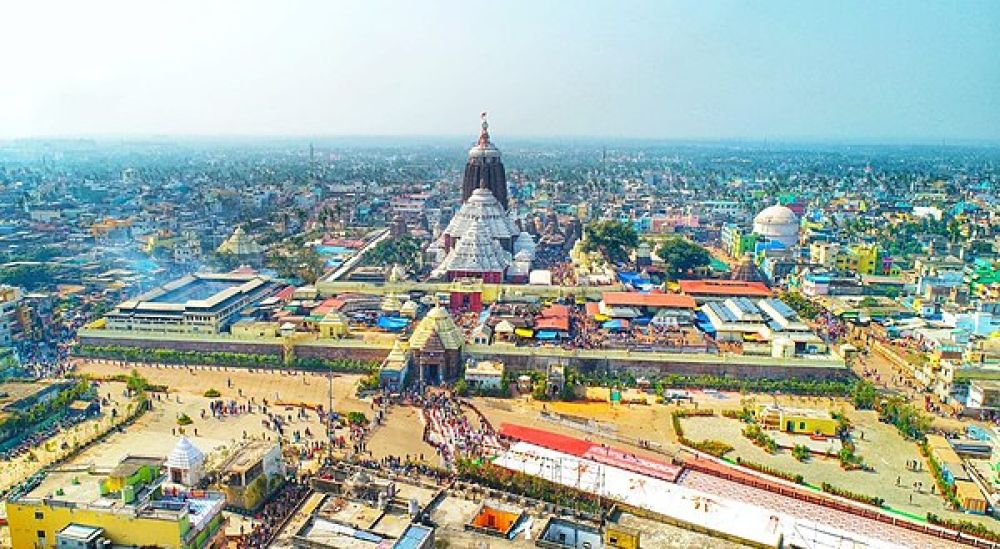
Jagannath Temple Puri Tourism
- Jagannath Temple Puri
- Best time to visit
- Tourist Map
- within 25kms
- within 50kms
- within 100kms
- within 150kms
- within 200kms
- within 250kms
- within 300kms
- within 500kms
Opening and Closing time of Jagannath Temple Puri
Disclaimer: It's important to check the most current information before planning your visit, as opening hours can vary and might be subject to change due to special events, maintenance, or unforeseen circumstances. A reliable way to confirm the opening hours is to contact the local tourism board, check the official website (if available)
Entry Ticket Pricing for Jagannath Temple Puri
Disclaimer: Please note that prices are subject to change, cross check required .
Tips when you are visiting to Jagannath Temple Puri
Other Suggested Reads for Jagannath Temple Puri
- Best time to Visit in Jagannath Temple Puri
- Jagannath Temple Puri Tourism History
- FAQS about Jagannath Temple Puri
- Jagannath Temple Puri Tourist Map

Puri Jagannath Temple: A Comprehensive Visitor’s Guide
Are you planning a visit to the sacred Puri Jagannath Temple in Odisha? This iconic temple dedicated to Lord Jagannath stands as a beacon of spiritual significance, drawing lakhs of devotees and visitors annually. Its historical roots run deep, unveiling tales of devotion and cultural heritage. The awe-inspiring architecture of the temple is a demonstration of ancient craftsmanship and intricate design, offering visitors a captivating glimpse into India’s architectural magnificence.
As you explore its hallowed grounds, you’ll witness ongoing development projects, including the notable Parikrama initiative which was inaugurated recently, contributing to the temple’s continued growth and significance. This comprehensive guide aims to unravel the temple’s past, tell the secrets of its architectural marvels, shed light on the Parikrama project’s importance, and equip you with essential visitor information. Join us on this enlightening journey, and let the wonders of the Puri Jagannath Temple unfold before you.
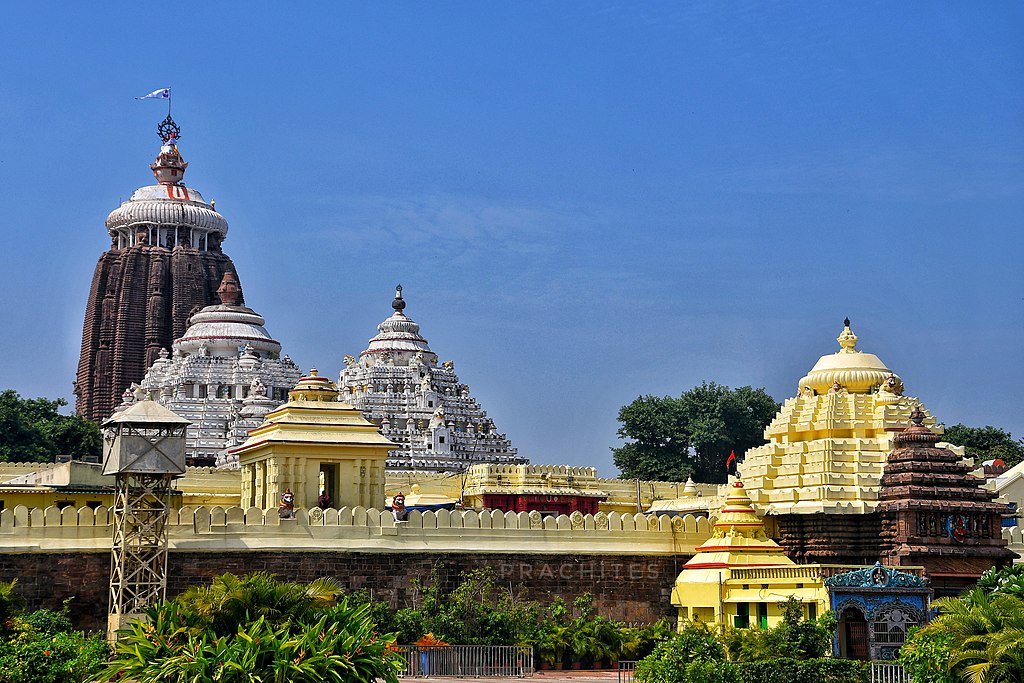
Post Contents
History of Puri Jagannath Temple
The history of the Puri Jagannath Temple dates back to the 12th century when it was constructed under the patronage of King Anantavarman Chodaganga Dev. The temple complex was later completed by King Ananga Bhima Deva. The construction of the temple was a grand endeavor, showcasing the architectural brilliance of the time. The temple has witnessed numerous invasions and renovations throughout its history.
According to legend, the temple’s origins can be traced back to King Indradyumna, who had a vision of Lord Vishnu manifesting as Nila Madhava. After a series of divine interventions, the king was guided to build the temple, and the idols of Lord Jagannath, Balabhadra, and Subhadra were installed in the sanctum sanctorum.
Architecture of Puri Jagannath Temple
The Puri Jagannath Temple showcases the exquisite Kalinga style of architecture, covering an expansive 37,000 square meters within the impressive Meghananda Pacheri wall. The main temple, with its unique curvilinear structure, is adorned with the iconic Nila Chakra, a circular wheel crafted from eight metals.
As you explore the temple complex, you’ll see q number of smaller temples and shrines, each contributing to the overall magnificence of the main temple. Notable features include the Arun Stambha, an ancient monolithic pillar, and the Mukti Mandapa, a platform adorned with intricate carvings The entrance gates, including Singhdwara, Hathidwara, Vyaghradwara, and Ashwadwara, are guarded by statues representing lions, elephants, tigers, and horses, respectively.
These intricate details not only enhance the architectural beauty but also symbolize the temple’s cultural and historical significance, making it a captivating destination for those seeking to delve into the rich heritage of the Puri Jagannath Temple.
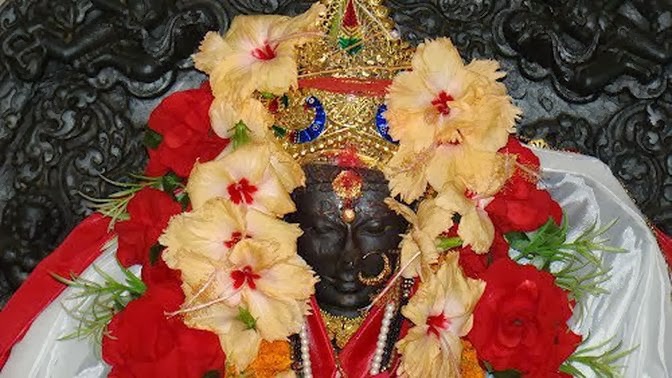
Related Article: Visiting The Magnificent Konark Sun Temple in Odisha
Inside the Puri Jagannath Temple Complex
Within the inner compound, you’ll discover not only the main temple but also several other temples, bije sthalis, and various monuments and structures, as indicated on the temple map in the Record of Rights. Explore the rich diversity of sacred sites and historical elements within this revered complex. Here we have listed a few that you must not miss during your visit to Puri Jagannath Temple.
Vimala Temple –As you explore the inner enclosure of the main temple, you will find Vimala temple facing East. This ancient temple holds the distinction of being the oldest among its peers. The Matsya Purana, Kapila Samhita, Skanda Purana, Tantra Chudamani, and Devi Bhagabata all make references to Maa Vimala. According to Tantra Sastra, Maa Vimala and Shree Jagannatha are revered as Bhairavi and Bhairava.
The goddess’s image is believed to be crafted from Laksa (wax) and features four arms. In her hands, she holds an aksamala (rosary), a human figure, and a kalasa (jar), while her fourth hand is poised in the ‘Varada’ gesture. Recognized as a prominent ‘Shakti Pitha’ in India, this temple sees the offering of Shree Jagannatha’s Prasada to Maa Vimala. Notably, Saradiya Shola puja and special rites are observed annually during the month of Aswaina in this sacred abode.
Satya Narayana Temple –This temple houses a four-armed statue of Shree Narayana. In the upper right hand, there is a disc, while the lower right hand displays the ‘Abhaya mudra’. The upper left hand holds a conch, and the lower left hand wields a mace. The granite statue stands at a height of 5 feet. Jaya and Vijaya stand on both sides, and at the feet of Satya Narayana, Garuda is positioned, kneeling down. The temple is oriented towards the North..
Shree Nrusingha Temple – On the Southern side of the temple within its inner enclosure you come across a shrine dedicated to Nrusingha, facing east. This temple is a Panchratha Rekha Deula without a Jagamohana and predates the construction of the present Shree Mandira. Ancient stone inscriptions adorn the exterior wall of the temple. The main deity of the shrine is Nrusingha, and a diminutive image of the deity is positioned on a lofty seat inside the temple.

Lakshmi Temple – Another very important temple inside the temple complex is Lakshmi temple which is at the North-Western corner of the inner enclosure of the main temple. Tradition holds that a ruler from the Ganga dynasty in the 12th-13th century A.D. constructed the temple. The temple shares a nearly same architectural style with the Jagannatha temple. Within its sanctum, Goddess Lakshmi is venerated. As a form of Gajalakshmi, she holds two elephants in her upper two hands, displaying a four-armed form with the lower hands in the ‘abhaya’ and ‘varada’ postures.
Surya Temple – Located on the Northern side of the Shree Jagannatha temple and facing East, this temple follows a saptaratha plan. The main deity of the temple is Surya, the Sun God. The image of the Sun enshrined in the temple is said to have been transported from Konark by King Narasimha Deva of the Bhoj dynasty (1622-1647 A.D.)
Bata Ganesha Temple –This is a significant temple devoted to Lord Ganesha situated below the Kalpabata within the temple compound. Referred to as the Bata Ganesha temple, it features the image of Ganesha’s vehicle, the mouse, placed in front of the temple. Historical references indicate that in the 16th century, the poet Jagannatha Das would sit beside this temple and recite his Odia Bhagavata compositions to sizable gatherings.
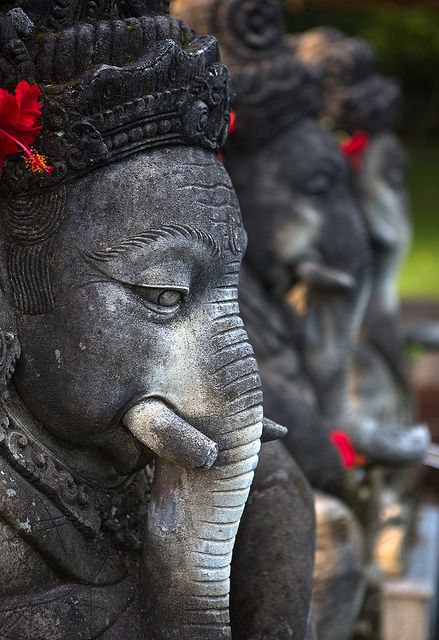
Kanchi Ganesha Temple -The deity is also referred to as Bhanda Ganesha. Located on the Western side of the temple premise, this temple houses an image that is said to have been brought from Kanchi by Gajapati Purushottama Deva during his Kanchi expedition. The deity is depicted as four-armed, with the image of his consort placed on his lap. Due to the deity’s erotic nature, the image is thought to be a Tantric representation.
Kalpabata (Tree) – Within the inner enclosure of the temple, on its southern side, stands a majestic banyan tree known as ‘Kalpabata.’ This ancient tree is prominently featured in both the Skanda Purana and Brahma Purana. According to local beliefs, individuals who circumambulate the sacred Kalpabata and step on its shadow are believed to attain ‘Kesavalaya,’ signifying the divine abode of Vishnu. The tree, steeped in mythological significance, serves as a serene spot for devotees to engage in spiritual practices and rituals.
Rohini Kunda (Pool) –As per the Skanda Purana, within the navel region of this sacred site, you will find three significant elements: the Rohini Kunda, the Kalpabata, and the divine image. The Rohini Kunda, a revered pool, is located slightly to the west of the banyan tree, considered sacred due to the presence of Vishnu and Lakshmi. Presently, the pool is manifested as a stone water-vat, devoid of natural water. Within this vat, two carvings are featured in separate squares—one depicting the Nila Chakra of Vishnu, and the other portraying a four-handed crow. You receive blessings as water is poured and sprinkled from this symbolic representation.
Mukti Mandapa (Brahmasana) –You will find the Mukti Mandapa to be a structure measuring 38 feet in length and 38 feet in width, forming a square shape with 16 pillars. According to Madalapanji, historical records state that the renovation of this sacred space was carried out by Gourirani, the wife of Mansingh, the chief of the army of the Mughal Emperor Akbar. The Mukti Mandapa holds significance as a place where Brahmin pandits from specific villages, Dandi sanyasis, Jagadguru Sankaracharya, Deula Purohita, and Rajgurus are granted the privilege to sit.

The Divine Kitchen or Roshanara – One of the most fascinating aspects of the Jagannath Temple is its mega kitchen, known as the Rosaghora. This kitchen is recognized as the world’s largest Satvik kitchen, where food is prepared following traditional Hindu culinary practices. Over 1,000 dedicated cooks work tirelessly to prepare 56 different types of offerings, collectively known as Chhappan Bhog, which are served to the deities six times a day. The kitchen is spread over an acre and is believed to be supervised by the goddess Mahalakshmi herself.
Do Read: Exploring the Cultural Tapestry: Raghurajpur Heritage Village
The Sacred Mahaprasada of Puri Jagannath Temple
The Mahaprasada, the divine offering of the Jagannath Temple, holds a special place in the hearts of devotees. After being offered to Lord Jagannath, the food becomes sanctified, and it is then made available to the devotees as Mahaprasada. Traditional rituals are followed during the offering, and the food is served on banana leaves. Pilgrims can savor the Mahaprasada in the Ananda Bazar area or opt for priests to deliver packets of Mahaprasada to their accommodations. The assortment of dishes includes various rice preparations, vegetable curries, lentil dishes, and sweet delicacies.
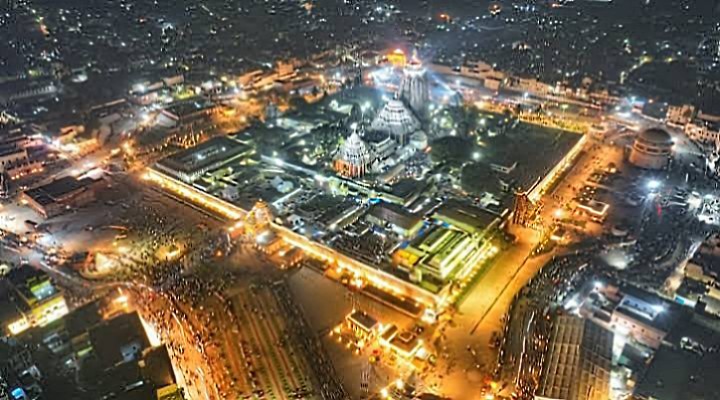
The Parikrama Project or Heritage Corridor
The Shree Jagannath Parikrama Prakalp, also known as the heritage corridor project, aims to transform Puri into a world-class city while preserving its cultural heritage. The project involved the construction of a 75-meter corridor around the temple, providing unobstructed views and enhancing the overall experience for devotees. The project was inaugurated and opened to the public recently.
The heritage corridor features terraced landscapes, a Parikrama pathway, gardens showcasing local varieties of trees and shrubs, cloakrooms, drinking water fountains, toilets, and information-cum-donation kiosks. Additionally, a grand reception center with a capacity of 6,000 people and queue management facilities will be built to ensure a seamless visit for devotees.
The Parikrama project represents a significant milestone in the temple’s ongoing development and its journey towards becoming a world-class spiritual destination.
Dress Code and Code of Conduct
To maintain the sanctity of the Puri Jagannath Temple, a dress code has been implemented for devotees. Proper attire is expected, and visitors wearing half pants, shorts, torn jeans, skirts, or sleeveless dresses are not permitted to enter the temple premises. Devotees are advised to dress modestly and respectfully, keeping in mind the sacredness of the place.
In addition to the dress code, the temple administration has also imposed certain rules and regulations to ensure a peaceful and harmonious environment for all visitors. Chewing gutkha and pan is strictly prohibited within the temple premises, and the use of plastic and polythene has been banned to promote environmental sustainability.

Also Read: 10 must-visit temples of Bhubaneswar
How to Reach Puri Jagannath Temple
Puri is located in the eastern state of Odisha and is well-connected by air, rail, and road networks. The nearest airport is Biju Patnaik International Airport in Bhubaneswar, approximately 60 kilometers away from Puri. From the airport, one can hire a taxi or take a bus to reach Puri.
Puri also has its own railway station, which is well-connected to major cities across India. Regular trains operate to and from Puri, making it a convenient mode of transportation for devotees and tourists.
For those traveling by road, Puri is connected to various cities in Odisha and neighboring states through a well-maintained road network. State-run buses, private taxis, and car rentals are readily available for transportation within the city.
Visiting Hours and Entry Fees
The Puri Jagannath Temple is open to devotees and visitors from 5:00 AM to midnight. To avoid large crowds, it is advisable to visit early in the morning around 7:00 AM or after 9:00 PM. The serene ambiance during these hours enhances the spiritual experience. There are no entry fees to visit the temple.
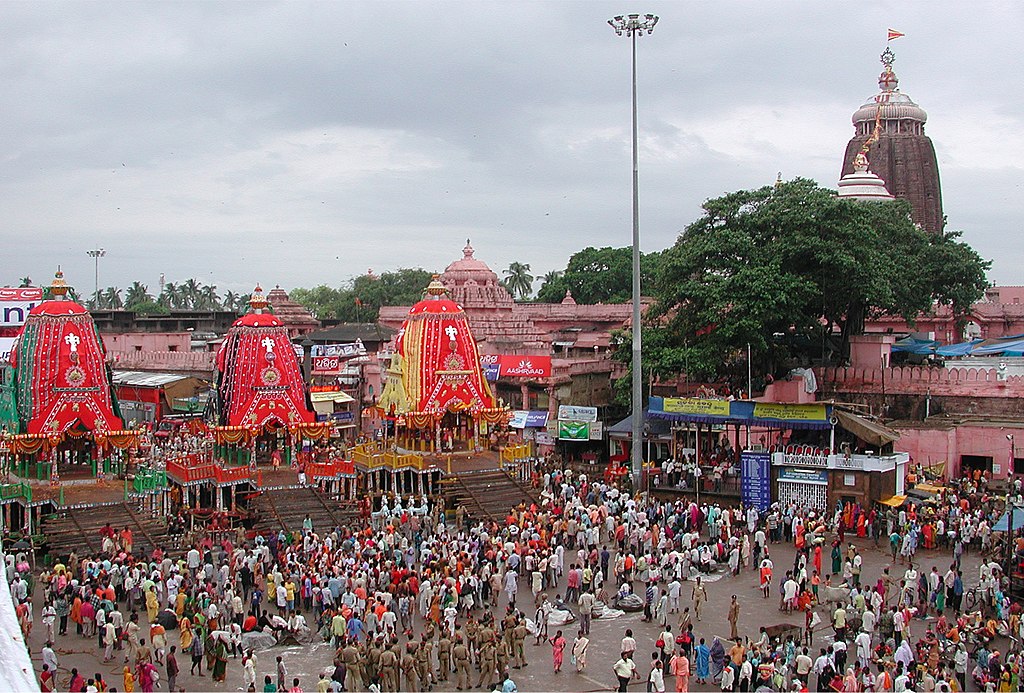
Important Rituals and Festivals
The Puri Jagannath Temple is known for its rich tradition of rituals and festivals. Devotees can witness and participate in various ceremonies that take place throughout the year. Some of the significant rituals include the daily rituals of bathing, dressing, and offering food to the deities. The temple follows a strict schedule of rituals, reflecting the daily routine of Lord Jagannath.
One of the most prominent festivals celebrated at the temple is the Rath Yatra, also known as the Chariot Festival. During this grand event, the deities are taken out of the temple in elaborately decorated chariots and pulled by devotees through the streets of Puri. The Rath Yatra attracts millions of devotees who come to witness this spectacular procession. Other significant festivals include Chandan Yatra, Snan Yatra, Anavasara, and Nava Kalebara.
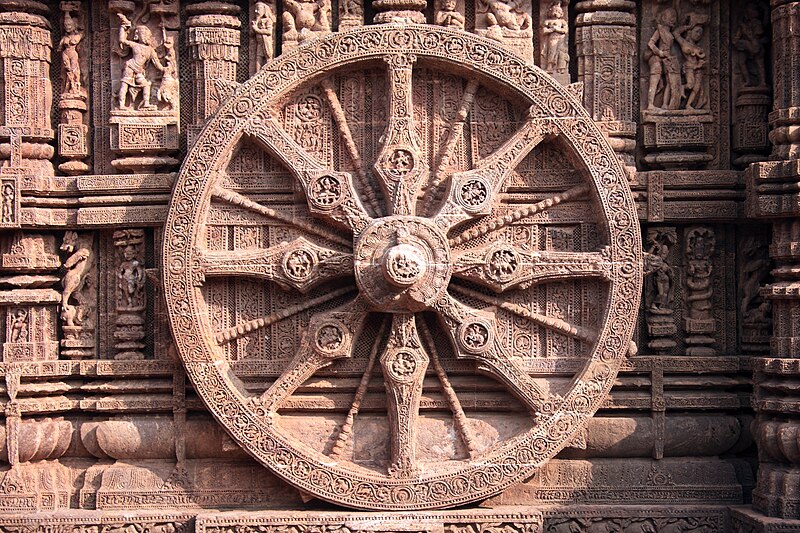
Other Places of Interest near Puri
While in Puri, make sure to explore the other attractions the city has to offer. Some notable places to visit near Puri include:
- Raghurajpur Handicraft Village: Located just a short drive from Puri, this village is known for its artisans and traditional crafts, particularly Pattachitra paintings.
- Konark Sun Temple: A UNESCO World Heritage Site, the Konark Sun Temple is a magnificent example of ancient Indian architecture and is a must-visit for history and culture enthusiasts.
- Puri Beach: The bustling Puri Beach is a popular destination for both locals and tourists. Enjoy a leisurely stroll along the shore or indulge in water activities.
- Chilika Lake: Located near Puri, Chilika Lake is the largest brackish water lagoon in Asia and a haven for bird-watching and boating enthusiasts.
Tips for Visiting Puri Jagannath Temple
- Plan your visit during the off-peak season to avoid crowds and long queues.
- Respect the religious customs and traditions of the temple. Avoid touching the deities or offering any personal belongings inside the temple.
- Follow the instructions of the temple priests and authorities to maintain order and decorum.
- Be cautious of unauthorized individuals who may try to extract money or offer unsolicited services. It is advisable to ignore such individuals and seek assistance from the temple administration if needed.
- Take off your shoes and deposit any belongings, including mobile phones and leather items, at the designated storage facility near the temple entrance.

Do Read: Visiting Bhubaneswar? The Khandagiri and Udayagiri Caves are a Must-See
Accommodation Options
Puri offers a range of accommodation options to suit various budgets and preferences. From luxury resorts and hotels to budget-friendly guesthouses and lodges, there is something for every traveler. Some popular options include Pramod Convention & Beach Resort, Mayfair Waves, Balaji International, and Hotel Pushpa. It is advisable to book accommodation in advance, especially during peak seasons and festivals.
The Puri Jagannath Temple beckons you not only as a place of worship but as a cultural and spiritual landmark, enchanting devotees and visitors for centuries. Delve into its fascinating history, marvel at its awe-inspiring architecture, and experience ongoing development projects amidst a vibrant atmosphere.
Your visit promises a lifetime experience – immerse yourself in the divine aura, witness grand rituals, and embrace the spiritual energy that fills the air. A journey to the Puri Jagannath Temple is a journey to the heart of Hindu spirituality, inviting you to explore its profound significance and cultural richness.
Leave a Comment Cancel Reply
Your email address will not be published. Required fields are marked *
Save my name, email, and website in this browser for the next time I comment.
Incredible Odisha
Shree Jagannath Temple in Puri Darshan Timings, History, Facts, Photos, and Mystery
One of the four Dhams in India, the Shree Jagannath temple in Puri, is dedicated to Lord Jagannath. This ancient and sacred temple is a true gem of the country, steeped in rich history, fascinating facts, and intriguing mysteries that continue to baffle visitors and locals alike.
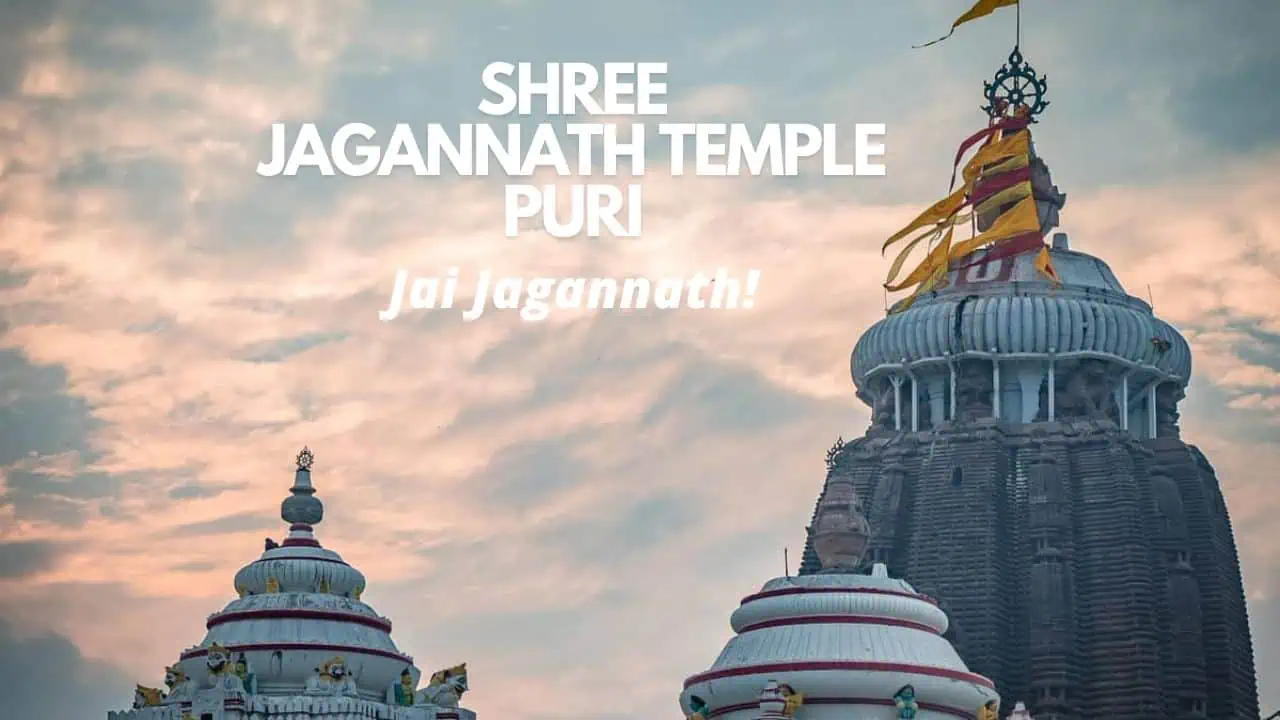
In this article, we invite you to discover the enchanting world of the Shree Jagannath Temple in Puri , from its captivating history and awe-inspiring architecture to its mysterious rituals and darshan timings.
We’ve also included stunning photos of the temple, Shree Jagannath Temple in Puri Darshan Timings, History, Facts, Photos, and Mystery .
Consider reading Jagannath Rath Yatra Festival
Page Contents
Puri Jagannath Temple Darshan Timings
Puri jagannath temple pooja timings, puri jagannath temple history.
The Puri Jagannath Temple, steeped in ancient history, is believed to have originated in the 12th century, resonating with centuries of devotion and spiritual significance. Rooted in legend and faith, the temple’s origins are as mystical as they are revered.
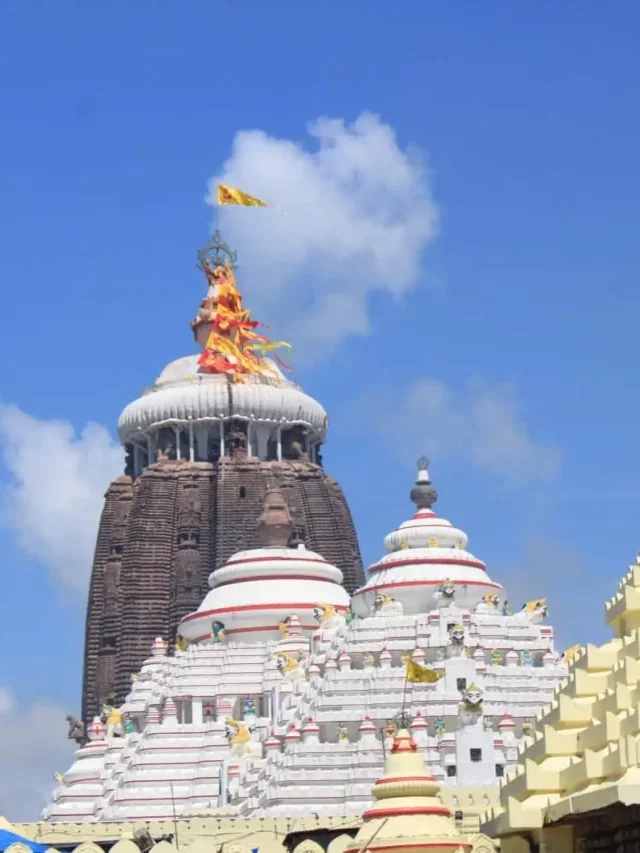
Legendary Foundations:
- King Indradyumna’s Vision : The temple’s inception is attributed to King Indradyumna, a fervent devotee of Lord Vishnu. As per legend, the king was guided by a divine vision in his dreams, which set him on a quest to find the deity.
- Discovery of the Sacred Statue : His journey culminated in the discovery of a sacred tree, where he found the deity manifested in a wooden statue. This momentous finding marked the beginning of the temple’s storied history.
Establishment of the Shrine:
- Creation of the Temple : Moved by his divine encounter, King Indradyumna commissioned the construction of the temple to enshrine the sacred statue, laying the foundation for what would become one of India’s most revered religious sites.
- Evolution Over Centuries : Through the ages, the temple has undergone numerous renovations and expansions, each phase contributing to its grandeur and significance.
Today, the Puri Jagannath Temple stands as a symbol of timeless devotion and spiritual heritage, attracting millions of pilgrims and visitors from around the world. Its rich history and sacred lore continue to captivate the hearts and minds of those who walk through its hallowed halls.
SEO Improvement Analysis:
Puri Jagannath Temple: Shreekshetra
Puri, also known as Shreekshetra, holds a distinguished place in the spiritual landscape of India. Revered as the eternal dwelling of Lord Jagannatha, this pilgrimage site, nestled along the shores of the Bay of Bengal in Odisha, is celebrated as one of the holiest destinations in the country.
Spiritual Significance and Ancient References:
- Purushottama-kshetra : Puri is often referred to as Purushottama-kshetra, named after Lord Jagannatha, also known as Lord Purushottama. This nomenclature finds its roots in ancient texts like the Skanda Purana and the Brahma Purana.
- Symbolic Representation : The city of Puri is symbolically depicted as the ‘body’ (Bapuh) of Lord Jagannatha, emphasizing its deep spiritual connection with the deity.
Skanda Purana’s Glorification of Puri:
- The Skanda Purana extols the sanctity of Purushottama-kshetra with profound reverence. It articulates that although Lord Jagannatha is omnipresent and the origin of all, and there exist numerous sacred places that absolve sins, Puri stands supreme.
- The Purana eloquently states, “Although Lord Jagannatha is all-pervading and is the source of all, and there are also other holy places that destroy all sins, yet this holy place is superior as it has become the body of this Supreme Being.”
- Further, it declares, “He Himself is present there, assuming a form, and has indeed made that place known by His own name.” (Utkala-khanda, Chapter 1, verses 8 & 9).
Puri, as Purushottama-kshetra, thus represents not just a geographical location but a spiritual epitome, embodying the essence of Lord Jagannatha and offering devotees a sanctified space for divine communion.
Puri Jagannath Dham
Puri, one of the four sacred ‘Dhams’ in Hinduism, holds a revered place in the hearts of devotees across India and the world. As per the vision of Bhagvatapada Adi Shankaracharya, the great reformer of Sanatana Vaidika Dharma, the Char Dham consists of Jagannatha Puri in the east, Dwarika in the west, Badrinath in the north, and Rameswaram in the south, each representing a cardinal direction.
Puri’s Elevated Spiritual Status:
- Adi Shankaracharya’s Influence : The significance Adi Shankaracharya accorded to Puri is evident in his appointment of his senior-most disciple, Padmapada, as the first Acharya of the Shree Goverdhan Peeth in Puri. This Peeth was entrusted with the propagation of teachings from the Rigveda, the most ancient and revered of the four Vedas.
Geographical and Mythological Expanse:
- Purushottama Kshetra : As described in the Brahma Purana, Purushottama Kshetra extends across ten yojanas (90 miles) in length and five kosas (ten miles) in width.
- Various Epithets : This sacred land is also known by several other names, including Shankha-kshetra, Neelachala, Uddiyana-peetha, Dasavatara-kshetra, and Martya-Vaikuntha, each signifying different aspects of its spiritual essence.
Divine Protection and Holy Sites:
- Guarded by Deities : The Ashta-Shivas, Ashta-Shaktis, and Ashta-Mahaveers divinely protect the Kshetra, with Lord Jagannatha’s Holy Temple at its epicenter.
- Tirthas and Ashramas : The Kshetra encompasses five sacred Tirthas (holy water bodies) and the hermitages of four ancient Rishis (sages), offering a spiritually enriching experience for pilgrims.
Legacy of Spiritual Leaders:
- Esteemed Acharyas of various Vedic traditions, including Bhagavatpada Adi Shankaracharya, Shree Ramanujacharya, and Shree Nimbarkacharya, established their respective monasteries in this hallowed locale, further enhancing its religious significance.
Puri, in its multifaceted spiritual glory, stands as a beacon of Hindu devotion, attracting countless pilgrims who seek divine blessings and wish to immerse themselves in its rich religious heritage.
Consider reading: 10 places to visit and things to do in Puri
Puri Jagannath Temple Architecture
The Shree Jagannatha Temple in Puri, a marvel of the 12th century, showcases the pinnacle of Kalinga architectural style under the patronage of Anantavarman Chodaganga Deva, the founder of the Ganga dynasty. Its construction and design reflect a blend of architectural ingenuity and spiritual significance.
Temple Structure and Design:
- Elevated Location : The temple stands on a raised platform at the center of the inner courtyard.
- Four Key Components : The structure comprises the Vimana or Deula (Garbhagriha), Jagamohana, Natamandapa, and Bhogamandapa.
- Combination of Architectural Styles : The temple’s design integrates Rekha and Pidha styles. The Vimana is a Nagara-type Rekha Deula, while the Jagamohana is a Pidha Deula.
Distinctive Features of the Temple:
- Vimana (Deula) : This main sanctuary, built in the Nagara Sthaptya style as a Rekha Deula, is marked by a curved tower, the Sikhar. It follows the Pancha Ratha ground plan, with five projecting pillar-like structures on each side.
- Harmonious Architectural Components : The Pishta, Bada, Gandi, and Mastaka parts of the Vimana and Jagamohana blend seamlessly, demonstrating masterful architectural conception.
Artistic Detailing and Symbolism:
- Natamandap and Bhoga Mandap : These halls, aligned east-west, add to the temple’s grandeur.
- De-plastered Surfaces : The temple’s surface reveals intricate sculptures resembling wood or ivory carvings.
- Decorative Elements : The platform’s lower part features friezes of animals and warriors, while the top-most course displays processions of horses and elephants.
- Talajangha with Miniature Temples : Above the Pabhaga, the Talajangha showcases miniature temple replicas, with large Gajasingha Simha figures dominating the corners.
- Upper Jangha : Life-size sculptures of Madanikas and Sura Sundaris adorn the upper Jangha, exemplifying exquisite craftsmanship and artistic beauty.
Overall Harmony in Design: The temple’s architecture is not just a display of structural prowess but also a narrative of religious and cultural ethos, making it a prominent symbol of India’s rich architectural heritage.
Daily Rituals at Jagannath Temple Puri
Some of the daily rituals at Jagannath Temple include:
- Mangal Aarti : Mangal Aarti is the first ritual of the day, and is performed at sunrise. The ritual involves the chanting of hymns and mantras and the offering of prayers and devotion to Lord Jagannath.
- Abakasha : Abakasha is the second ritual of the day, and is performed after the Mangal Aarti. The ritual involves the offering of food and drinks to the deities and the preparation of the offering.
- Mailam : Mailam is the third ritual of the day, and is performed after the Abakasha. The ritual involves the application of sandalwood paste to the deities and the offering of flowers and other offerings.
- Gopala Ballabha : Gopala Ballabha is the fourth ritual of the day, and is performed after the Mailam. The ritual involves the offering of food and drinks to the deities and the preparation of the offering.
- Dhupa : Dhupa is the fifth ritual of the day, and is performed after the Gopala Ballabha. The ritual involves the offering of incense and other offerings to the deities and the chanting of hymns and mantras.
- Sandhya Aarti : Sandhya Aarti is the sixth and final ritual of the day, and is performed at sunset. The ritual involves the chanting of hymns and mantras and the offering of prayers and
Puri Jagannath Temple Darshan Facilities
Except on special occasions, Darshan of Shree Jagannatha Mahaprabhu is available almost all day, from early morning to late at night.
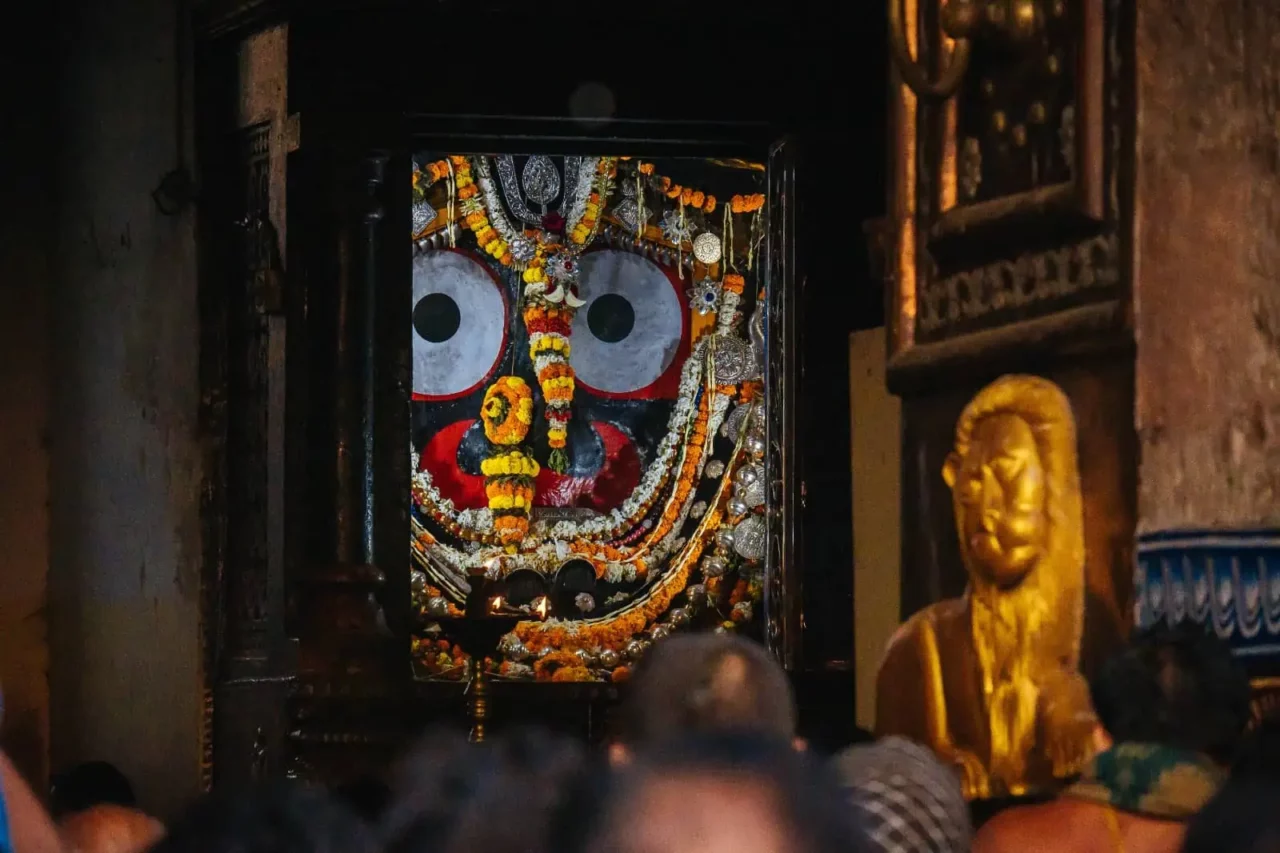
The Shree Jagannatha Temple in Puri follows a structured schedule for darshan (viewing of the deity), allowing devotees to partake in various rituals and offerings throughout the day. Understanding the temple’s darshan timings and entry protocols ensures a smooth and spiritually fulfilling experience for visitors.
Daily Darshan Timings:
- Morning Opening : The temple opens around 5:30 a.m. Post Mangal Arati, devotees can enter up to the Jagamohan for darshan until approximately 7:30/8 a.m., during the Besha ritual.
- Intermittent Closures : Darshan is unavailable for about 1 hour and 15 minutes post-Besha, during the Gopal Ballava Puja (roughly 8 a.m. to 9:15 a.m.).
- Mid-Morning to Noon : Post Gopal Ballav Puja, darshan resumes from the Naatamandir until the end of Sakaala Dhoopa Puja, around 11 a.m.
- Afternoon Darshan : Following Sakaal Dhoopa, entry up to Jagamohan is permitted until Bhoga Mandap Puja completion, around 1 p.m.
- Late Afternoon and Evening : Darshan is available between 2 p.m. and 5:30 p.m., and again post Sandhya Dhoopa till the Chandan Laagi ritual, approximately from 8 p.m. to 9 p.m.
Entry and Crowd Management:
- Lion’s Gate / Eastern Gate : This is the primary entry point for all devotees, with barricades in place for orderly movement.
- Exit Gates : The other three gates of the temple serve as exit points for devotees.
- Special Access : Local officials, Sevaks, and residents with ID may use any gate for entry and exit.
Understanding these timings and guidelines is crucial for a hassle-free visit to the Shree Jagannatha Temple, allowing devotees to immerse themselves in the sacred rituals and experience the divine presence of Lord Jagannatha.
Consider reading – 20 Must Visit Best Tourist Places in Odisha
Mahaprasad Avada at Jagannath Temple Puri
Mahaprasad Avada at the Jagannath Temple in Puri is not just a ritualistic offering; it represents a deep spiritual and cultural tradition integral to the temple’s daily practices. This sacred offering embodies the essence of devotion and culinary artistry, making it a significant aspect of the temple’s religious life.
Significance and Preparation:
- Essential Ritual : The offering of Mahaprasad is a vital component of the temple’s daily rituals, deeply entrenched in its religious and cultural ethos.
- Vegetarian Delicacy : Prepared using various ingredients and spices, Mahaprasad is strictly vegetarian, aligning with the temple’s spiritual principles.
- Temple Kitchen Practices : The Bhoga Mandap, the temple’s kitchen, is where this divine offering is prepared. It is cooked in a traditional clay oven or handi, adhering to age-old culinary methods.
Sacred and Divine Connotation:
- Blessed Offering : Mahaprasad is considered sacred and blessed by the deities, making it more than just food—it’s a divine blessing.
- Distribution Among Devotees : This holy offering is distributed to devotees and pilgrims visiting the temple, symbolizing the sharing of divine grace in the form of prasad.
Cultural and Spiritual Experience:
- Part of Temple’s Essence : The offering of Mahaprasad Avada is deeply embedded in the spiritual and cultural fabric of the Jagannath Temple.
- A Must-Experience for Visitors : For those visiting the temple, partaking in Mahaprasad Avada offers a unique glimpse into the temple’s rich traditions and is an integral part of the spiritual journey.
Mahaprasad Avada at the Jagannath Temple is a testament to the harmonious blend of spirituality and culinary heritage, offering a unique experience that transcends the ordinary and connects devotees with the divine.
Consider reading: 10 Famous Odisha Foods You Must Try
Puri Jagannath Temple Accommodation: Yatri Niwas & Nilachal Bhakta Niwas
Every year, millions of tourists from all over the world visit for recreation, pleasure, and devotion.
Keeping the needs of the devotees in mind, the Jagannatha Temple Administration has created “ Nilachal Bhakta Niwas & Nilachal Yatri Niwas ,” a brand new guesthouse located on the Grand Road and adjacent to the temple.
It is 60 kilometers from Bhubaneswar and a few minutes from the railway station, bus stop, and Puri Beach .
The guest house has 36 modern equipped A.C. rooms, 2 VIP Suites, 2 Triple Bedded A.C. rooms, 12 Non-Ac Rooms, 2 Triple Bedded Non-A.C. Rooms, 2 Six Bedded Dormitory, 2 Eight Bedded Dormitory,] Five Bedded Non-A.C. Rooms, and 5 Seven Bedded Non-A.C. Rooms.
The luxury of a guesthouse packed with benefits is available at an astonishingly low cost. Furthermore, by staying here, you make a significant contribution to the temple’s upkeep and development, as a significant portion of the guesthouse’s earnings will be donated to the temple as an offering.
You can book Jagannath temple accommodation online at the Shree Jagannath website .
7 Unexplained Mysteries and Puri Jagannath Temple Facts
Shree Jagannath temple in Puri has some unexplainable mysteries. Let’s explore one by one:
- The no-flying zone : In other parts of India, you may have seen birds perched on Jagannath temple walls or planes flying above them, but nothing flies above this temple. The site has been declared a no-fly zone, not by the state government, but by the divine powers of the temple. This phenomenon, which is unusual in India, has no explanation and remains a mystery.
- The flag that defies wind direction : Whether it’s a ship sailing in the wind or a simple piece of cloth, it always follows the wind’s direction. The flag atop of Jagannath temple, on the other hand, is an exception to this rule because it flies in the opposite direction of the wind with no scientific reasoning to back it up.
- The mystery of the Sudarshan Chakra : The chakra installed on top stands about 20 feet tall and weighs a tonne. The first question that arises in the absence of heavy machinery is how it was fitted so high with only manual intervention during that time period. The second is the architectural technique used to position the chakra, which is visible from any corner of the city and appears to face you regardless of your position.
- Silence of the waves : The Jagannath temple has four entrances, the main one being Singhadwaram. When you enter the temple through this door, you can clearly hear the sound of the waves, but once inside, you will no longer hear them. According to legend, it was Subhadra Mayi’s wish to have peace within the temple gates that was granted by the Lord.
- Temple structure : When sunlight falls on one part of the subject, it casts a shadow on the other, resulting in shade. This temple, on the other hand, is said to have no shadows at any time of day. It is still unknown and debatable whether it is an engineering marvel or a divine force.
- Climbing of the priest : Every day, a priest climbs the walls of Jagannath temple, which is about the height of a 45-story building. This is accomplished without the use of any protective equipment and would easily put any professional climber to shame. It is believed that if this is skipped even for a single day, the temple will be closed for 18 years! This ritual dates back nearly 1800 years.
- Reverse gear of the breeze : It is common knowledge that the wind from the sea blows toward land during the day and the wind from the land blows toward the sea during the evening in every other region of the world. The exact reverse occurs in Puri, defying the principles of geography!
Jagannath Temple Secrets
Jagannatha Temple is unique and has had secrets for thousands of years. Some interesting secrets are as below:
- The secret of the wooden deities : The wooden deities at Puri Jagannath Temple are said to be over a thousand years old, but their exact age and origin are still a mystery. The deities are carved from a single piece of wood and are believed to have divine powers and blessings.
- The secret of the chariots : The chariots used in the Raja Rathyatra festival at Puri Jagannath Temple are huge, intricately designed, and are said to be over a thousand years old. The chariots are pulled by thousands of devotees and are a sight to behold.
- The secret of the temple kitchen : The temple kitchen at Puri Jagannath Temple is known as the Bhoga Mandap, and is said to be one of the largest kitchens in the world. The kitchen is run by over a thousand cooks and is said to be able to feed over a million devotees every day.
- The secret of the temple rats : The temple rats at Puri Jagannath Temple are considered to be sacred, and are said to be the descendants of the original temple rats. The rats are fed and cared for by the temple priests and are considered to be a sacred part of the temple.
- The secret of the temple treasures : The temple treasures at Puri Jagannath Temple are said to be vast and valuable and include precious gems and jewels. The treasures are kept in a secret location and are said to be guarded by temple priests and devotees.
FAQs on Puri Jagannath Temple
What is the history of jagannath temple.
The history of Jagannath Temple dates back to the 12th century and was built by King Indradyumna, who was a devout devotee of Lord Jagannath. The temple was consecrated by the king and has undergone several renovations and expansions over the years.
What are the daily rituals at Jagannath Temple?
The daily rituals at Jagannath Temple include Mangal Aarti, Abakasha, Mailam, Gopala Ballabha, Dhupa, and Sandhya Aarti. The rituals are performed by the temple priests and are an essential part of the temple’s religious and cultural traditions.
What is Mahaprasad?
Mahaprasad is a sacred offering of food and other offerings to the deities at Jagannath Temple. The offering is considered to be sacred and holy and is distributed to the devotees and pilgrims who visit the temple.
What is the best time to visit Jagannath Temple?
The best time to visit Jagannath Temple is during the Rath Yatra festival, which is held in the month of June or July. The festival is a popular and important event at the temple and attracts a large number of pilgrims and tourists.
Hello, I am Rajesh, an avid traveller and explorer with a passion for all things in Odisha. With years of experience traversing the length and breadth of this beautiful state.
As the founder and primary author of Incredible Odisha, I am dedicated to sharing my love for Odisha with the world. From the stunning beaches of Puri to the ancient temples of Bhubaneswar, I have explored every nook and cranny of this fascinating state and I am committed to providing the most comprehensive and up-to-date information to fellow travellers.
Whether you're a first-time visitor to Odisha or a seasoned traveller looking for off-the-beaten-path adventures, I have you covered.
With a wealth of knowledge and insider tips, I am dedicated to helping travellers experience the very best that Odisha has to offer.
So, join me on an unforgettable journey through the vibrant and diverse state of Odisha, and discover the magic and beauty of this hidden gem for yourself.
Similar Posts
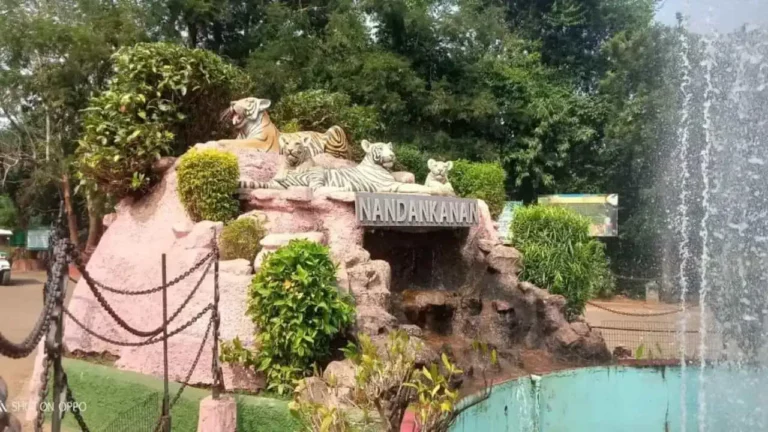
Nandankanan Zoological Park Bhubaneswar Timings, Entry Fee, Ticket Price, Safari, Images, and Reviews
Explore Nandankanan Zoological Park | Details on Timings, Entry fee, Tickets, Safari, Photos, Reviews & Contact | Botanical garden and White Tiger
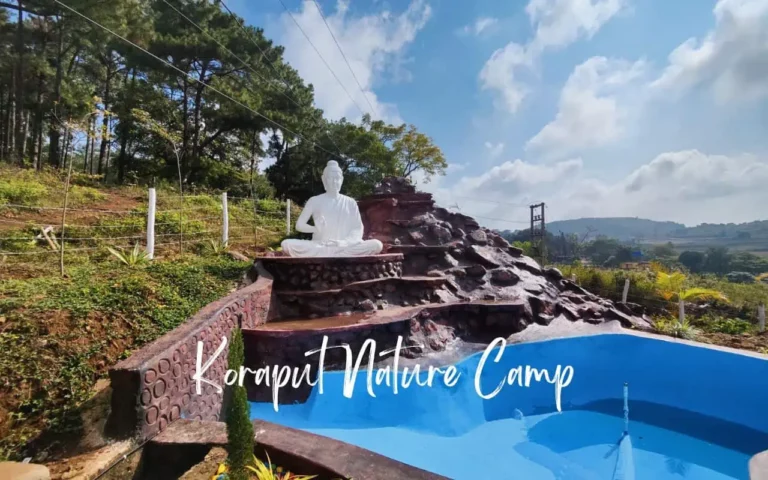
Koraput Nature Camp, Pine Resorts – Location, Distance, How to reach, and Booking
Explore Koraput Nature Camp | Details on Location, Distance, How to Reach, and Booking | Best Time to Visit and Nearby Places to See
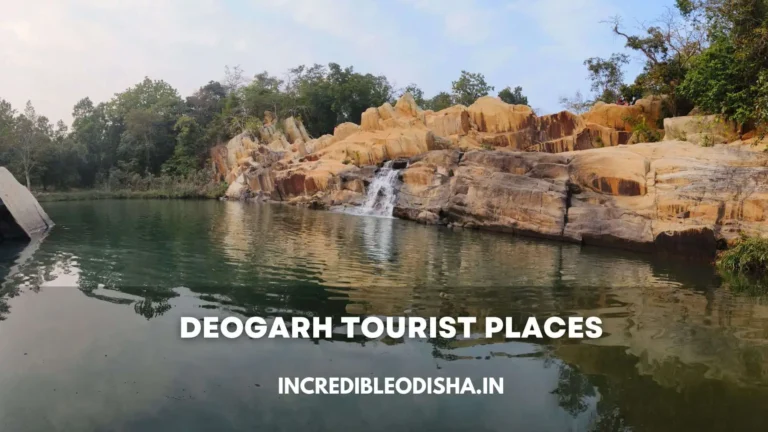
Top 17 Best Places to Visit in Deogarh: Temples, Waterfalls, Picnic Places
Complete details of Top 17 Best Places to Visit in Deogarh | Temples, Waterfalls, Picnic Places in Deogarh | Best Time to Visit
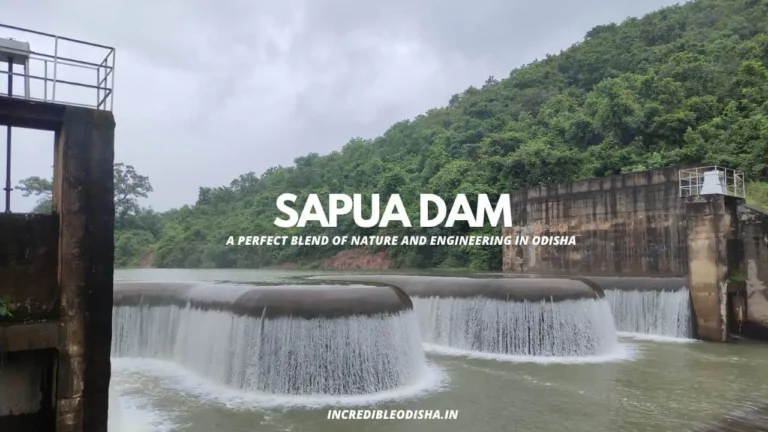
Sapua Dam: A perfect blend of nature and engineering in Odisha
Explore the stunning beauty and rich history of the Sapua Dam in Dhenkanal. Learn about the dam’s purpose, Picnic place and the best time to visit.
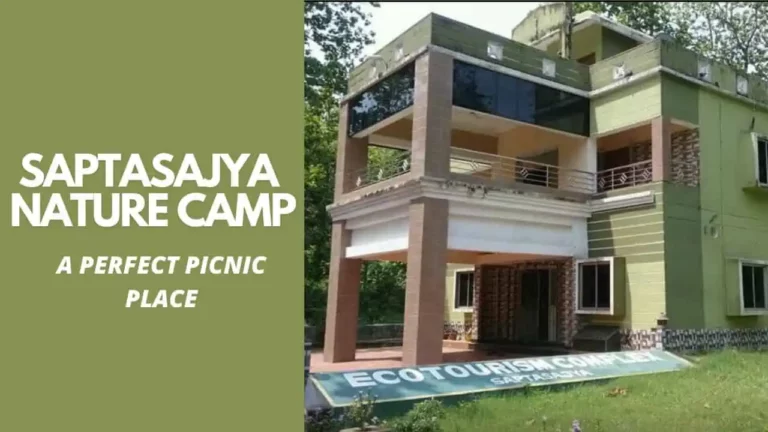
Saptasajya Nature Camp Location, Distance, How to Reach, and Booking
Explore Saptasajya Nature Camp | Details on Location, Distance, How to reach, Activities, the Best time to visit, Price and Booking
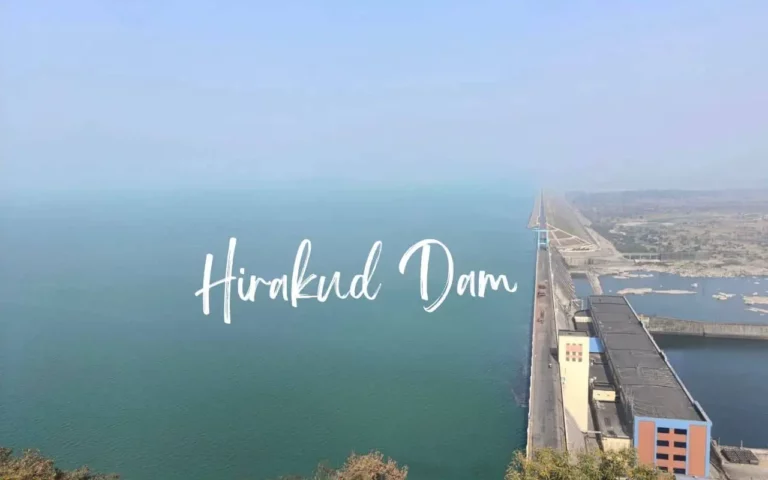
Hirakud Dam Sambalpur – Facts, Gates, Gandhi Minar and Nehru Minar
Explore Hirakud Dam in Sambalpur District including its history, length, and number of gates. Gandhi Minar and Nehru Minar at Hirakud Dam.
Leave a Reply Cancel reply
Top Hotel Collections

Holiday Homes
Beach Hotels
Beach Resorts
Puri Travel Essentials
Ideal duration: 1-2 days
Best Time: July to March Read More
Planning a Trip? Ask Your Question
"Rath Yatra and the Beaches"
Puri tourism.
Puri in Odisha is one of the four must-visit pilgrimage sites for Hindus because of Jagannath Temple that forms the part of Char Dham in India. Puri is a beach city located on the coast of Bay of Bengal which is one of the favourites among people of West Bengal for a short trip.
Having gained popularity among hippies back in the 1970s due to the legalisation of Bhang, Puri is still a popular destination among backpackers, however, the availability of bhang is now limited. With a plethora of hotels and homestays, the local tourist like to stay near the New Marine Drive and the backpackers prefer to stay near Chakra Tirtha. The Rath Yatra (chariot festival) which takes place during the month of June-July should not be missed if you are planning to visit during this time. Known as the resting place of Lord Shiva, the majestic history and heritage of Puri date back to the 3rd century B. C. Puri, Konark and Bhubaneshwar complete the Golden Triangle of Orissa, with their religious significance and cultural heritage being the centres of tourism in this state. There are a lot of places near Puri that one must visit, like the Chilika lake , Puri beach , Gundicha Ghar and the very famous Sun temple of Konark. Puri is soon turning into an industrial hub with major manufacturing companies coming here.
Must Visit Places in Puri

Sri Jagannath Puri Temple

Chilika Lake

Jagannath Rath Yatra
Places To Visit In Puri

Raghurajpur Artist Village

Markandeswara Temple

Narendra Tank

Sudarshan Crafts Museum

Top Hotels In Puri
₽ 1,664 onwards
₽ 2,420 onwards
₽ 1,663 onwards
₽ 4,187 onwards
₽ 775 onwards
₽ 1,108 onwards
More on Puri Travel
Beaches in puri, culture of puri, shopping for souvenirs at puri, restaurants and local food in puri, suggested itinerary for puri, best time to visit puri, top stories about puri tourism.

Beaches & Islands
Beautiful Beaches in Puri

Magnificent Temples in Puri for a Divine Piligrimage

Best Water Parks in Puri for a Fun-filled Day-out
Things to Do in Puri

Art & Culture
11 Astonishing Facts About Jagannath Temple In Puri
Places to Visit near Puri
Nearby Places

Browse Package Collections
Nearby destinations for packages, puri photos.

+ 43 photos
How To Reach Puri
Faqs on puri, what is the local food in puri, what are the places near puri, what are the things to do in puri, what is the best way to reach puri, what is the best time to visit puri, who should visit puri, what is not so good about puri, what is famous about puri, have a question on puri.

Popular Questions And Answers on Puri
Q. Is Swargdwar beach and Puri beach same and second is that where is Golden beach....?
T Balaji Patra
Q. Any waterfalls is there?
Binay Srivastava
Q. Are the beaches of Puri crowded?
Snehasis Mondal
Puri Reviews
mitali patnaik
Partha Khan
travel india with kavita
Similar Places

Get the best offers on Travel Packages
Compare package quotes from top travel agents
Compare upto 3 quotes for free
- India (+91)
*Final prices will be shared by our partner agents based on your requirements.
Log in to your account
Welcome to holidify.
Forget Password?
Share this page

- +91-9810222172
- North India
- South India
- India Nepal
- Central India
- Golden Triangle Tour
- WildLife Tour
- Honeymoon Holidays
- Ayurveda Tour
- Family Holidays
- Golden Triangle
- Cultural & Heritage
- Forts & Palace
- Kerala Backwaters
- First Time In India
- Beach Holidays
- Architecture
- Pilgirimage
- Hill-Station
- Group Tours
- 8 - 15 Days
- More than 16 Days
- Top 10 Tours
- Testimonials
Best Time to Visit Puri
Puri is one of the four holiest cities for the Hindus in India. Resembling a ‘Dakshinavarta Shankha’ (right-oriented conch-shell) and extending for more than 16 km, Puri is also called as Shank Kshetra. It is a quiet seaside resort where domestic and foreign tourists enjoy the beaches without ever mixing. During the Rath Yatra, in the beginning of summer, hordes of pilgrims take over the city. Puri is home to Jagannath Temple and both are synonymous to each other. In addition to Jagannath Temple, there are some other famous temples like Gundicha Temple, Alarnath Temple, Mausi Maa / Ardhashosini Temples, Varahi Temple etc. Historical monument of Konark Sun Temple and the best of natural beauty in the form of Chilika Lake too are prime tourist attractions in Puri.
Summer Season in Puri: The summer season is generally hot and the temperature varies from 27 to 45 degree Celsius. The months of March, April and May are the summer months. The weather is pleasant in March, but the months of April and May are unbearable due to scorching heat.
Monsoon Season in Puri: The holy city of Puri, the abode of Lord Jagannath, receives good amount of downpour in the form of light / heavy rainfall during the monsoon. In comparison to the intense summer, the monsoon clouds rain over the city in the month of June and continue till September. Visiting Puri is highly recommended during the monsoon season as the weather and climate turn out to be quite soothing. The landscape gets extremely beautiful these days.
Winter Season in Puri: The winter season though starts from November and lasts till February but the weather commences to be pleasant from the month of October. During winter season, the atmosphere becomes cold and the temperature varies between 10 and 18 degrees Celsius. This season is suitable for picnics and for other tourist activities. Tourists must carry light woolen clothes during their visit to Puri in winter.
Though there are several reasons and attractions in Puri but the chief reason to visit Puri to have ‘darshan’ and perform ‘puja’ Lord Jagannath. Annual Jagannath Rath Yatra is also a grand crowd puller. June to March is the best time to visit Jagannath Puri. The first and most important reason is that the world famous Rath Yatra is mostly celebrated in the month of July. Other festivals are also celebrated with great reverence at this time of the year. Apart from this, the weather also remains fine. The best time to visit Puri is from October to March. A tourist should wear light cotton clothes in hot weather and warm clothes in winter season. If you also want to see Lord Jagannath's Rath Yatra during Puri tour then come in June-July
Top Things to Do in Puri
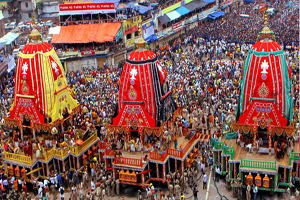
Enquire Now
🗓 Best Time To Visit: October to February
⏰ Open Hours: 5:00 AM - 11:30 PM
🎟 Entry Fees: Free
🚶♂️ Things To Do: Attend the Rath Yatra festival, Explore temple architecture, Participate in daily rituals
💰 Budget: Minimal (excluding travel and accommodation costs)
🧳 Traveller Types: Family, Solo Travellers, Devotees, History and Culture Enthusiasts
🏷 Known For: One of the Char Dhams, Rath Yatra festival, Intricate temple architecture
📍 Distances: Puri Railway Station - 2 km, Bhubaneswar Airport - 60 km
🚗 Parking: Available
♿ Accessibility: Limited accessibility for differently-abled
📜 Tips: Follow dress code, respect religious customs, photography is prohibited inside the temple
Jagannath Temple: A Guide to the Sacred Abode of Lord Jagannath
Are you looking for a spiritual and cultural destination that will take you on a journey of faith, history, and art? If yes, then you should visit the Jagannath Temple in Puri, Odisha , which is one of the most sacred Hindu pilgrimage sites and a part of the Char Dham Yatra. The Jagannath Temple is dedicated to Lord Jagannath, who is considered as a form of Lord Vishnu, along with his brother Balabhadra and sister Subhadra, who are worshipped along with Sudarshana Chakra. The temple is famous for its unique history, architecture, rituals, festivals, and facts that make it a wonder of the world.
In this article, we will provide you with comprehensive and updated information about the temple and its attractions for visitors and devotees. Whether you are planning to visit the temple or just curious to know more about it, this guide will help you explore the sacred abode of Lord Jagannath.
How to Reach Jagannath Temple
Jagannath Temple is located in the coastal town of Puri, in the state of Odisha, on the eastern coast of India. Puri is well connected by air, rail, and road from different cities in India. The nearest airport is Bhubaneswar, which is about 60 km away from Puri. You can take a bus or a taxi from the airport to reach Puri. Alternatively, you can also take a train from Bhubaneswar or other major cities like Kolkata, Delhi, Mumbai, Chennai, etc. to reach Puri railway station, which is about 2 km away from the temple. You can also drive to Puri by taking the National Highway 16 or 316 from Bhubaneswar or other nearby towns.
The address of Jagannath Temple is Grand Road, Puri, Odisha - 752001. The temple is situated in the heart of the town and can be easily reached by walking, cycling, rickshaw, or auto-rickshaw.
History of the Temple
The history of the Jagannath Temple is shrouded in mystery and legend. According to one popular myth, the temple was built by King Indradyumna, who was instructed by Lord Vishnu in a dream to find a log floating in the sea and carve idols out of it. However, when he found the log, he could not find any sculptor who could carve the idols. Then, an old man appeared and offered to do the job, but on one condition: he should be left alone in a closed room for 21 days. The king agreed, but after 14 days, he became impatient and opened the door. He was shocked to see that the idols were incomplete and had no hands or feet. The old man revealed himself as Lord Vishnu and said that this was his will. He told the king to install the idols in the temple as they were and assured him that they would be worshipped by millions of people.
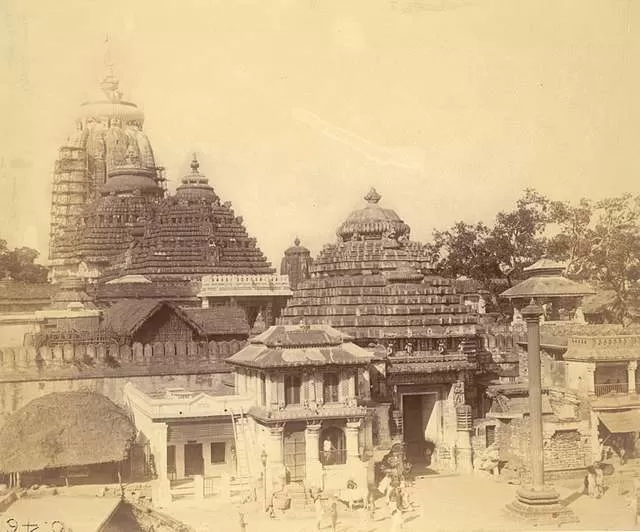
The temple has undergone several changes and renovations over the centuries. It was invaded and plundered by many foreign rulers, such as Kalapahad, Qutb-ud-din Aibak, Firuz Shah Tughlaq, etc. It was also patronized and protected by many local kings and dynasties, such as the Eastern Ganga Dynasty, the Gajapati Dynasty, the Maratha Empire, etc. The temple reached its peak of glory during the reign of King Anantavarman Chodaganga Deva (1078-1148 CE), who built the present structure of the temple. The temple is also associated with many saints and sages, such as Adi Shankara, Ramanuja, Madhvacharya, Chaitanya Mahaprabhu, etc., who visited and propagated their teachings here.
The history of the temple is not only fascinating but also inspiring. It shows how the temple has survived and thrived despite all odds and challenges. It also shows how the temple has been a source of spiritual and cultural unity for millions of people across India and beyond.

Architecture of the Temple
The architecture of the Jagannath Temple is a marvel of engineering and artistry. The temple complex covers an area of 37 acres and is surrounded by a massive wall called Meghanada Pacheri. The wall has four gates facing four directions: Singhadwara (Lion Gate) in the east, Ashwadwara (Horse Gate) in the south, Hathidwara (Elephant Gate) in the west, and Vyaghra Dwara (Tiger Gate) in the north. Each gate is guarded by a pair of stone animals and has a pyramidal structure on top.
The main temple consists of four structures: Deula (sanctum), Mukhashala (frontal porch), Nata Mandir (festival hall), and Bhoga Mandap (offering hall). The Deula houses the idols of Lord Jagannath, Balabhadra, Subhadra, and Sudarshana Chakra on a platform called Ratnavedi. The Deula has a towering spire called Vimana that rises to a height of 214 feet. On top of the Vimana is a golden wheel called Neela Chakra (Blue Wheel), which is worshipped as a symbol of Lord Jagannath. The Mukhashala is a pillared hall that connects the Deula with the Nata Mandir. The Nata Mandir is a large hall where cultural programs and dances are performed during festivals. The Bhoga Mandap is a smaller hall where food offerings are made to the deities.

The temple complex also has many other shrines and structures dedicated to various gods and goddesses, such as Lakshmi, Saraswati, Shiva, Ganesha, Hanuman, etc. The temple also has several tanks and wells, such as Narendra Sarovar, Markandeya Sarovar, Rohini Kunda, etc., that are considered sacred and have medicinal properties. The temple also has a library called Jagannath Ballav Matha that contains many ancient manuscripts and books.
The temple is a masterpiece of Kalinga style of architecture, which is characterized by its curvilinear and ornate features. The temple is adorned with exquisite carvings, sculptures, paintings, and motifs that depict various themes and stories from Hindu mythology and culture. The temple is also a living example of the syncretism and diversity of Indian religions, as it incorporates elements from Vaishnavism, Shaivism, Shaktism, Buddhism, Jainism, etc.
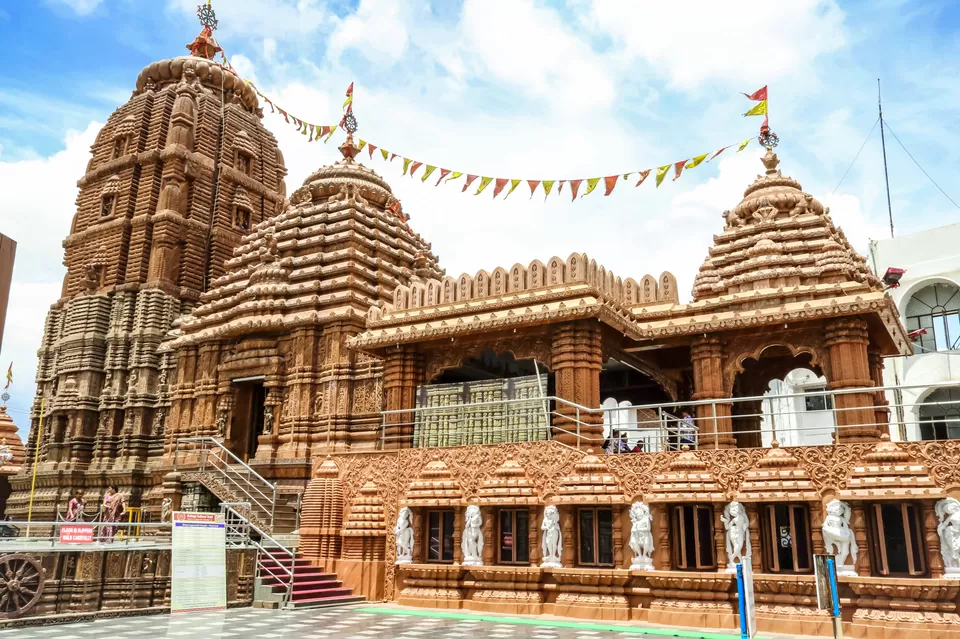
Rituals of the Temple
The rituals of the Jagannath Temple are elaborate and intricate. The temple follows a daily schedule of 16 services or nitis that are performed by the priests and servitors or sevakas. The nitis include waking up the deities, bathing them, dressing them, offering them food, putting them to sleep, etc. The nitis are performed according to the lunar calendar and vary according to the season and occasion. The nitis are accompanied by various chants, hymns, songs, and instruments that create a divine atmosphere in the temple.
The most important ritual of the temple is the Mahaprasad or the food offering to the deities. The Mahaprasad consists of 56 types of dishes or chhappan bhog that are prepared in the temple kitchen or Rosa Ghara. The kitchen is considered as the largest in the world and can feed up to 100,000 people in a day. The food is cooked in earthen pots using wood fire and water from a sacred well. The food is first offered to Lord Jagannath, then to Goddess Bimala in the inner sanctum, and then to Lord Shiva in the outer complex. After that, the food is distributed among the devotees as prasad or blessed food. The Mahaprasad is believed to have spiritual and healing powers and is considered as a form of grace from Lord Jagannath.

Festivals of the Temple
The festivals of the Jagannath Temple are colorful and vibrant. The temple celebrates many festivals throughout the year that attract millions of pilgrims and tourists from all over the world. Some of the major festivals are:
Rath Yatra: This is the most famous and grand festival of the temple, which is also known as the Chariot Festival or Car Festival. It is celebrated on the second day of the bright fortnight of Ashadha month (June-July). On this day, the idols of Lord Jagannath, Balabhadra, Subhadra, and Sudarshana Chakra are taken out of the temple in huge wooden chariots or raths that are pulled by thousands of devotees along a 3 km long route to the Gundicha Temple or Mausi Maa Temple. The chariots are decorated with colorful fabrics, flags, flowers, etc., and have different names and features. The chariot of Lord Jagannath is called Nandighosha or Garudadhwaja, which has 16 wheels and is 45 feet high. The chariot of Balabhadra is called Taladhvaja or Langaladhwaja, which has 14 wheels and is 44 feet high. The chariot of Subhadra is called Devadalana or Padmadhwaja, which has 12 wheels and is 43 feet high. The chariot of Sudarshana Chakra is called Chakradhwaja or Svarnadhwaja, which has 10 wheels and is 42 feet high. The Rath Yatra symbolizes the journey of Lord Jagannath to his birthplace and his aunt’s house. It also represents the universal brotherhood and equality of all people before God.
Snana Yatra: This is another important festival of the temple, which is also known as the Bathing Festival or Devasnan Purnima. It is celebrated on the full moon day of Jyeshtha month (May-June). On this day, the idols of Lord Jagannath, Balabhadra, Subhadra, and Sudarshana Chakra are brought out of the sanctum and placed on a platform called Snana Mandap or Snana Vedi. They are then bathed with 108 pitchers of water from a sacred well called Suna Kua. The water is mixed with sandalwood paste, turmeric powder, flowers, etc., and poured on the idols by the priests. After the bathing ceremony, the idols are dressed in elephant costumes or Gajanana Vesha or Hati Vesha and offered food and worship. The Snana Yatra marks the birthday of Lord Jagannath and also prepares him for his annual outing during
Rath Yatra: The idols stay at the Gundicha Temple for seven days and then return to the main temple on the ninth day in a similar procession. This return journey is called Bahuda Yatra or Ulto Rath. On the way back, the chariots stop at the Mausi Maa Temple or Ardhasani Temple, where the deities are offered Poda Pitha or baked rice cakes, which is a special delicacy of Odisha. The chariots also face each other at a place called Alarnath Temple or Hera Panchami, where Goddess Lakshmi, the consort of Lord Jagannath, comes to meet him and express her anger and jealousy for leaving her behind. She also damages a part of his chariot as a mark of her protest. The Rath Yatra is a spectacle of faith and devotion that draws millions of people from all walks of life.
Snana Yatra: The Rath Yatra. After the Snana Yatra, the idols are kept in a secluded chamber called Anasara Ghara or Anavasara Pindi, where they are believed to fall ill and undergo treatment by a special doctor called Daitapati. During this period, which lasts for 15 days, the idols are not visible to the public and are replaced by three paintings or pata chitras on the main altar. This period is also known as Anasara or Anavasara, which means absence or vacation. After the recovery of the idols, they are adorned with new clothes and ornaments and brought out of the chamber on a day called Netrotsava or Nava Yauvana Darshana, which means eye festival or new youth sight. On this day, the devotees get to see the fresh and rejuvenated forms of the deities after a long gap.
Chandan Yatra: This is another significant festival of the temple, which is also known as the Sandalwood Festival or Gandhalepana Yatra. It is celebrated for 42 days starting from Akshaya Tritiya (April-May) to Jyeshtha Purnima (May-June). During this festival, the idols of Lord Jagannath, Balabhadra, Subhadra, and Sudarshana Chakra along with other deities such as Madanmohan, Rama, Krishna, etc., are taken out in procession to a nearby tank called Narendra Sarovar or Chandan Sarovar. There they are placed on beautifully decorated boats or chapa and taken around the tank. The idols are smeared with sandalwood paste or chandan and offered various items such as flowers, fruits, sweets, etc. The devotees also participate in this festival by rowing the boats, singing songs, dancing, etc. The Chandan Yatra is a celebration of joy and beauty that marks the onset of summer.
These are some of the major festivals of the Jagannath Temple that showcase its rich and diverse culture and heritage. There are many other festivals that are celebrated in the temple throughout the year, such as Basant Panchami, Shivaratri, Holi, Ram Navami, Janmashtami, Dussehra, Diwali, Kartik Purnima, etc., that add to its charm and glory.
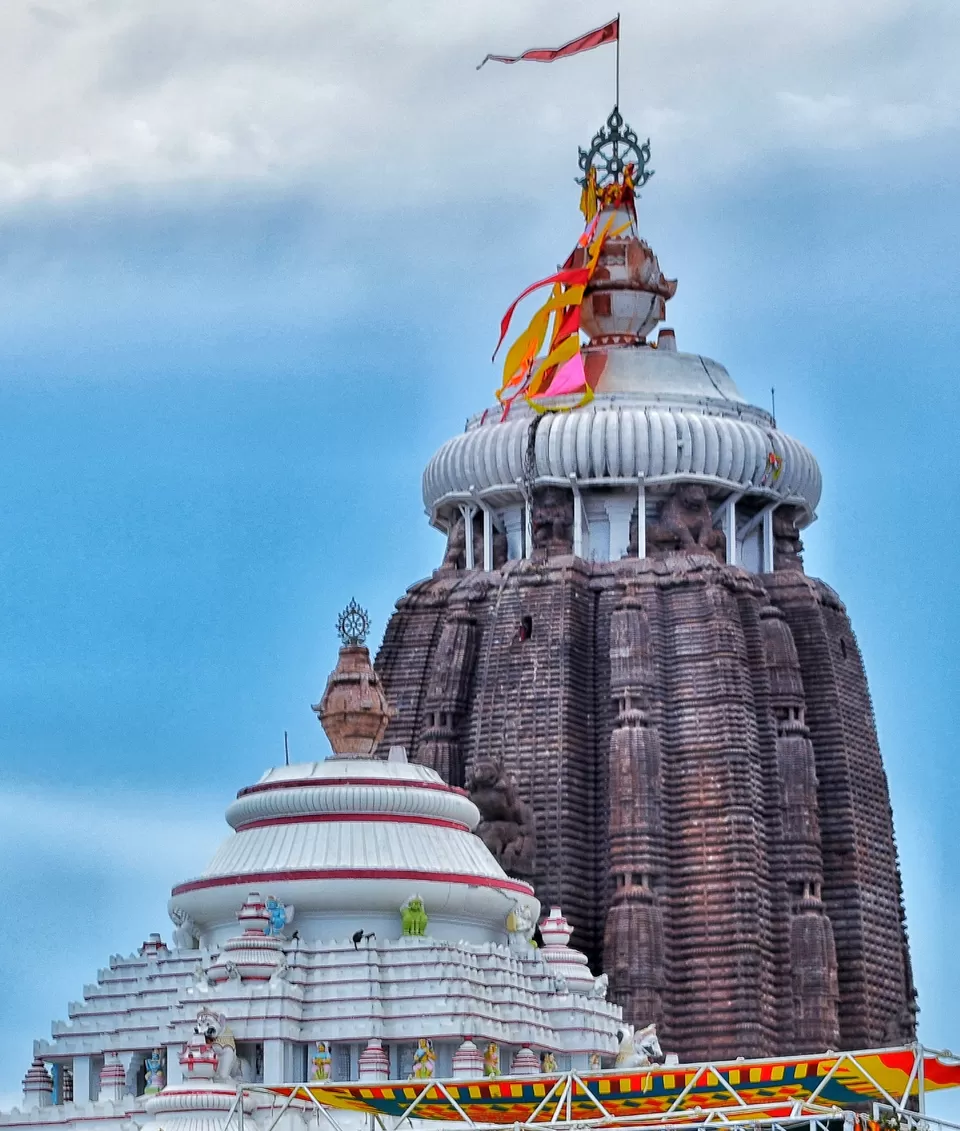
Facts of the Temple
The Jagannath Temple is not only a place of worship but also a place of wonder. There are many facts about the temple that defy logic or science and amaze everyone who visits or hears about it. Some of these facts are:
1. The flag that flies atop the Neela Chakra always flaps in the opposite direction of the wind.
2. The Neela Chakra looks the same from all directions and angles.
3. The shadow of the main temple or Vimana never falls on the ground at any time of the day or year.
4. The sound of the ocean waves can be heard inside the temple premises but not outside it.
5. The food cooked in the temple kitchen never goes waste or falls short, no matter how many people eat it.
6. The food cooked in the temple kitchen does not get spoiled even after several hours or days.
7. The birds or planes do not fly over the temple dome or Vimana.
8. The Sudarshana Chakra on top of the temple can be seen from any corner of Puri town.
9. The idols of Lord Jagannath, Balabhadra, Subhadra, and Sudarshana Chakra have no definite shape or form and are made of wood that never decays.
10. The idols of Lord Jagannath, Balabhadra, Subhadra, and Sudarshana Chakra are replaced every 12 or 19 years by new ones in a secret ceremony called Nabakalebara or New Body.
11. These are some of the facts that make the Jagannath Temple a mysterious and miraculous place that attracts people from all over the world.
The Jagannath Temple is more than just a temple. It is a symbol of faith, culture, and history that has been standing for centuries and witnessing the changes and events of the world. It is a place where you can experience the divine presence of Lord Jagannath and his siblings, who are known as the Lords of the Universe. It is a place where you can witness the grandeur and beauty of the temple architecture and art. It is a place where you can participate in the rituals and festivals that are full of devotion and joy. While you are here, there's also a plenty of beaches you can visit.
If you are looking for a destination that will enrich your mind, body, and soul, then you should visit the Jagannath Temple in Puri, Odisha. It is a place that will make you feel blessed and grateful for being alive. It is a place that will make you want to come back again and again.
We hope that this guide has helped you to know more about the Jagannath Temple and its attractions. If you have any questions or feedback, please feel free to comment below. We would love to hear from you. And if you liked this article, please share it with your friends and family who might be interested in visiting or knowing more about the Jagannath Temple.
Thank you for reading and happy traveling!
Jagannath Temple Reviews

Places To Visit In Puri
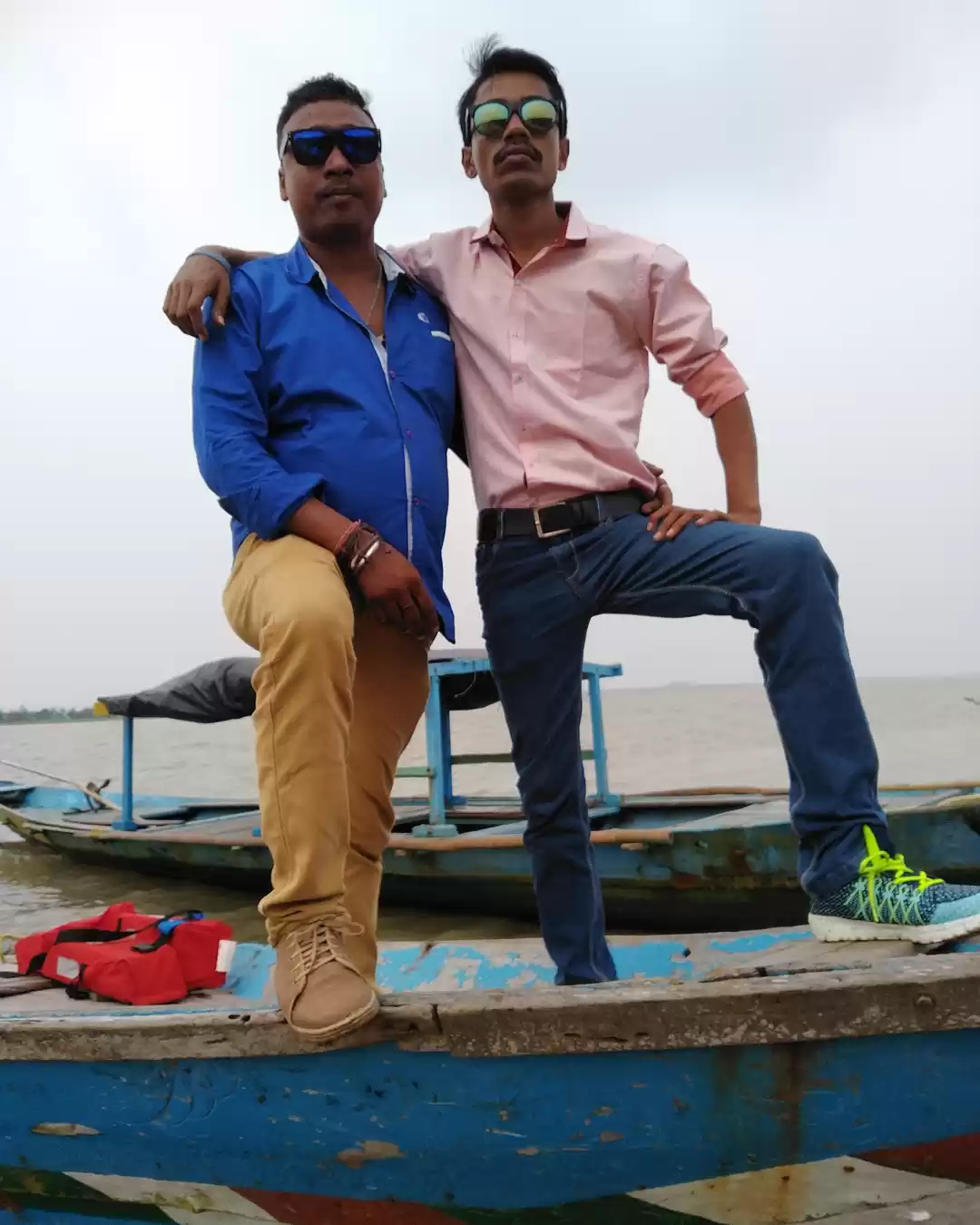
Travel Blogs for Jagannath Temple
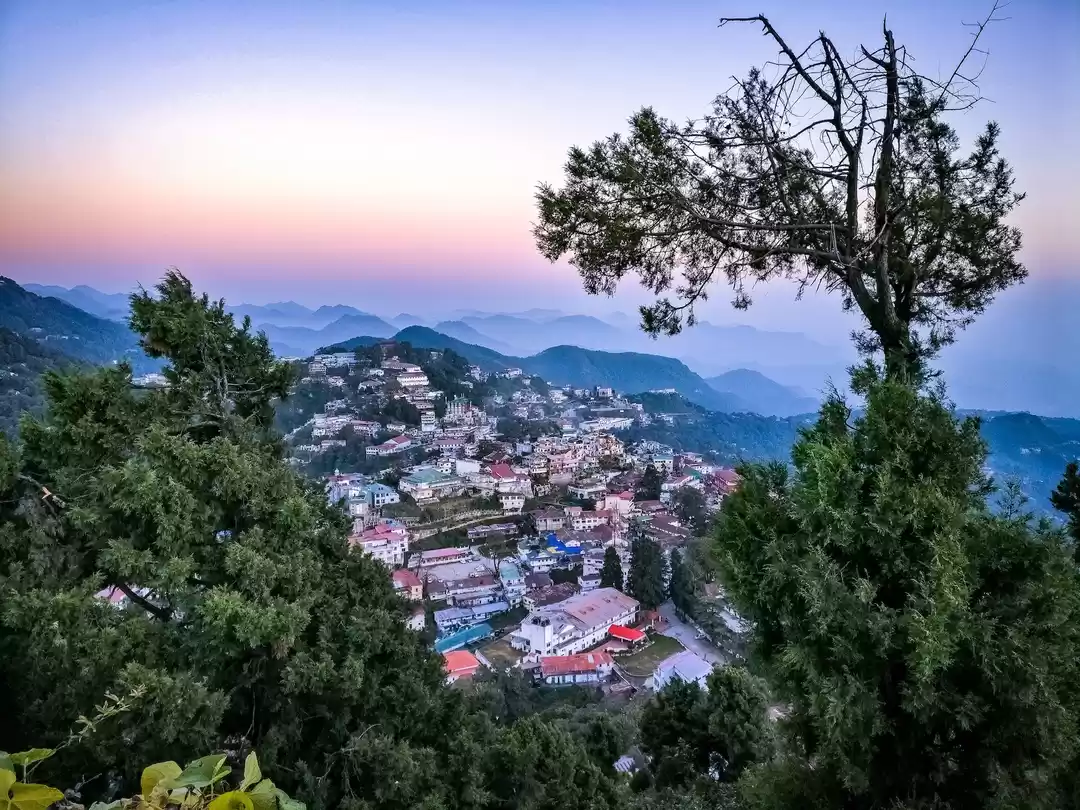
Search Flights X
Best Time To visit puri
Verify Your Moblie Number
An OTP (valid for next 15 mins.) has been sent to you on your Mobile number
If you have not recived OTP, call us on 1860 200 1800 to get expert advice
Get the best holidays planned by experts!
- India Tourism
- orissa Tourism
- puri Travel Guide
Best Time To Visit puri

Take a Look
- Theme of Puri [Culture, Heritage]
- You'll love Puri for [Monuments, Temples]
- Watchout for [Humidity, Noise pollution]
- Best Time To Visit November - February
Plan your travel to puri
Holiday packages in puri.
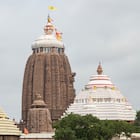
Holiday Themes In puri
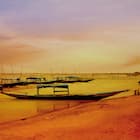
Popular Domestic Destinations
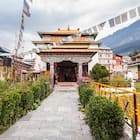
Places to stay in puri

Popular Flights To puri
- IXR Ranchi BBI Bhubaneswar
- Indigo 6E-7362
- 20:00 21:25 Non Stop
- 01h 25m Non Stop
- BOM Mumbai BBI Bhubaneswar
- Indigo 6E-5004
- 17:50 20:05 Non Stop
- 02h 15m Non Stop
- AMD Ahmedabad BBI Bhubaneswar
- Indigo 6E-261
- 19:40 21:55 Non Stop
- DEL Delhi BBI Bhubaneswar
- Indigo 6E-2158
- 22:55 07:25 1 Stop
- 08h 30m 1 Stop
- IDR Indore BBI Bhubaneswar
- Indigo 6E-2019
- 22:40 07:15 1 Stop
- 08h 35m 1 Stop
puri Travel Talk Sharing travel experiences - one story at a time
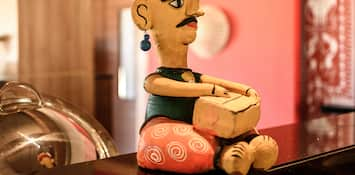
Shopping In Puri: Utkalika Is Your One-Stop Shop
Shopping in Puri is a must-do activity. For the best quality and wide variety of local products, Utalika in Puri is your go-to shop.
What Makes India An Attractive Destination For Foreigners
India has marked its presence on the global tourism map today, attracting many foreigners. Here is what makes it tick.

Choose From These Best Budget Hotels In Puri
There are many different types of hotels in Puri. For a budget-friendly holiday, these hotels are the best pick.
Frequently Asked Questions
- More About Us |
- Leadership Team |
- Our Products |
- Awards Won |
- Customer Testimonials |
- Press Releases
- Company Overview |
- Quarterly Earnings |
- Press Releases |
- Reports & Presentations |
- SEC Filings |
- Corporate Governance |
- Social Media Disclosure |
- Investor FAQs
- Travel Agent Sign Up |
- Become a Cab Vendor |
- Register Your Hotel |
- Register Your Homestay |
- Sell Holiday Packages |
- Sell Your Activities |
- List Your Bus Inventory |
- Advertise With Us
- Support & FAQs |
- Terms & Conditions |
- Privacy Policy |
- User Agreement
- Domestic Airlines |
- Domestic Flights |
- International Airlines |
- SriLankan Airlines |
- Emirates Airlines |
- Saudi Airlines |
- Nepal Airlines |
- Singapore Airlines |
- Malaysia Airlines |
- Indigo Flights |
- Air India Airlines |
- Go Air Airlines |
- Spicejet Flights |
- Airasia Flights |
- International Flights |
- Flight Schedule |
- Airline Flight status |
- Cheap Air tickets |
- Web Checkin |
- Domestic Hotels (In India) |
- Homestays |
- Yatra for Business |
- Yatra for SMEs |
- India Tourism |
- International Tourism |
- Domestic Holiday Packages |
- International Holiday Packages |
- Trade Fairs 2020 |
- Activities |
- Domestic Activities |
- International Activities |
- Bus booking |
- Bus Ticket |
- Indian Railways |
- Check Train PNR Status |
- Monuments of India |
- Taj Mahal |
- Qutub Minar |
- Yatra Android Mobile App |
- Yatra iOS Mobile App |
- Gift Vouchers |
- Dubai Visa |
- Thailand Visa |
- Thailand Business Visa |
- Thailand Tourist Visa |
- Sri Lanka Visa |
- Sri Lanka Business Visa |
- Sri Lanka Tourist Visa |
- Turkey Visa |
- Turkey Business Visa |
- Turkey Tourist Visa |
- Malaysia Visa |
- Hong Kong Visa |
- Vietnam Visa |
- Visa At Your Doorstep |
- Uk Visa At Your Doorstep |
- Delhi to Mumbai Flight |
- Delhi to Patna Flight |
- Delhi to Goa Flight |
- Patna to Delhi Flight |
- Pune to Delhi Flight |
- Bangalore to Varanasi Flight
- Retail Offices |
- Bug Bounty |
- Darjeeling |
- Resorts Near Me |
- Oyo Rooms Near Me |
- Interpack 2020 |
- Drupa 2020 |
- Connect with us :
Copyright © 2022 Yatra Online Limited, India. All rights reserved

- Assembly Elections
- Budget 2024
- Stock Market Quotes
- Mutual Fund
- Stock Stats
- Top Gainers
- CaFE Invest
- Investing Abroad
- Gold Rate in India
- Silver Rate in India
- Petrol Rate in India
- Diesel Rate in India
- Express Mobility
- Banking & Finance
- Mutual Funds
- Travel & Tourism
- Brand Wagon
- Entertainment
- Web Stories
- Auto Web Stories
- Infographics
- Today’s Paper
- International
- Edits & Columns
- Personal Finance Print
- PRIVACY POLICY
- TERMS AND CONDITIONS
- IPO’s Open and Upcoming 14
- Top Indices Performance
- Stock Analysis
- Stock Market Stats
- Financial Literacy
- Gold Rate Today
- NSE Top Gainers 1758
- NSE Top Losers 914
- BSE Top Gainers 3127
- BSE Top Losers 1923
- NSE 52-Week High 0
- NSE 52-Week Low 0
- BSE 52-Week High 0
- BSE 52-Week Low 0
- NSE Price Shocker
- NSE Volume Shocker
- BSE Price Shocker
- BSE Volume Shocker
- NSE Sellers
- BSE Sellers
- Silver Rate Today
- Petrol Rate Today
- Diesel Rate Today
Jagannath Puri Odisha
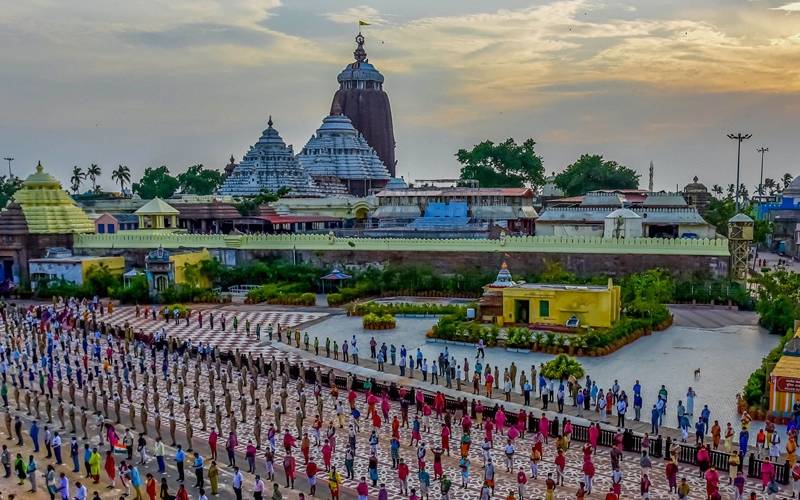
Jagannath Puri is a city located in the eastern Indian state of Odisha . It is famous for the Jagannath Temple , which is one of the Char Dham pilgrimage sites in Hinduism. The temple is dedicated to Lord Jagannath , a form of Lord Vishnu, and hosts the annual Rath Yatra festival, during which the deities are taken out in a procession on chariots. The city is also known for its beaches, especially Puri Beach , which attracts many tourists.
Jagannath Puri story
There are various stories and legends associated with Jagannath Puri , but the most well-known one is the story of Lord Jagannath and his siblings, Balabhadra and Subhadra . According to the legend, Lord Krishna, during his earthly life, expressed his desire to spend his last days on Earth in Puri.
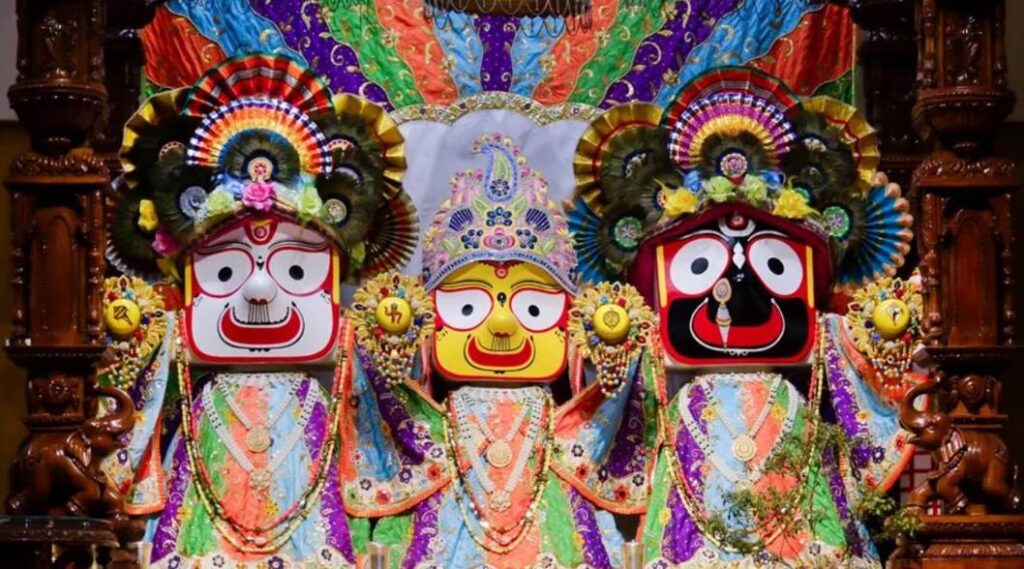
The legend goes that after Lord Krishna’s death, his body was cremated and his bones were taken by his devotees to Puri, where they were enshrined as the idols of Jagannath, Balabhadra, and Subhadra in the Jagannath Temple. The idols are made of wood and are replaced every twelve years in a ritual called Navakalevara.
Another popular story associated with Jagannath Puri is the story of the Rath Yatra, which is a procession during which the idols of the deities are taken out on chariots. It is believed that the tradition of Rath Yatra dates back to the time of Lord Krishna, who used to take his devotees on a chariot ride.
According to the legend, one day, Lord Krishna’s friend, Sudama, came to visit him, but Lord Krishna was so overwhelmed by his love for Sudama that he forgot to ask him to stay for dinner. Sudama then left, feeling disappointed. Later, Lord Krishna, realizing his mistake, decided to make it up to Sudama by taking him on a chariot ride. The tradition of Rath Yatra is believed to have originated from this incident, and it is seen as a symbol of the love and devotion between Lord Krishna and his devotees.
Puri Jagannath Temple
Puri Jagannath Temple is one of the most popular temples in India. It is located in Puri, Odisha. The temple is dedicated to Lord Jagannath, who is believed to be a form of Lord Vishnu. The temple is one of the four important pilgrimage sites for Hindus, known as the Char Dham. It is also known as the world’s largest Hindu temple .
Jagannath temple, puri photos
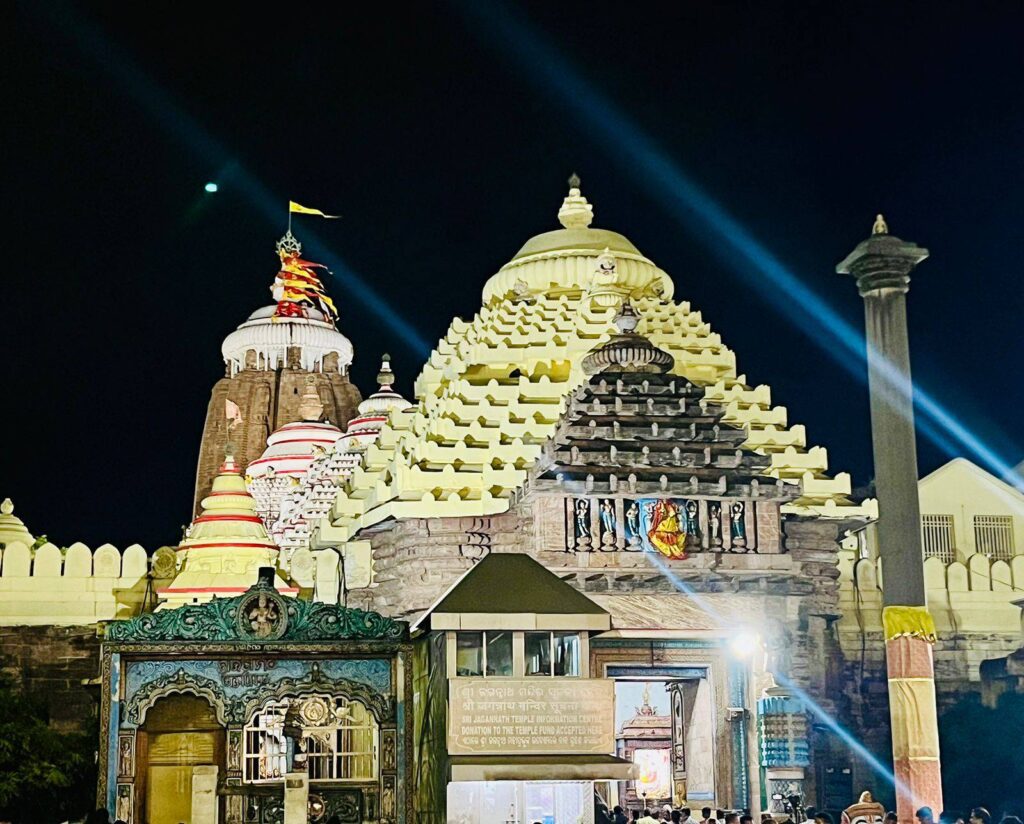
Jagannath Puri Temple History
The history of Jagannath Temple in Puri dates back to the 12th century when it was built by King Anantavarman Chodaganga Deva. The temple is dedicated to Lord Jagannath, a form of Lord Vishnu, and is one of the Char Dham pilgrimage sites in Hinduism.
Over the centuries, the temple has undergone several renovations and expansions. The temple’s central structure, the Vimana or Bada Deula, is about 214 feet high and is made of Khondalite stone. The temple also has four entrance gates, one for each direction, and is surrounded by a wall.
One of the unique features of the Jagannath Temple is that it has no idol or image of the deities. Instead, the idols of Lord Jagannath, Balabhadra, and Subhadra are made of wood and are replaced every twelve years in a ritual called Navakalevara.
The temple is also known for its Rath Yatra festival, during which the deities are taken out in a procession on chariots. The festival is believed to have started in the 12th century and is considered one of the largest religious festivals in India.
The temple has a rich cultural and religious significance, and it attracts millions of devotees and tourists every year. The temple administration is managed by a body of priests and administrators, and the state government provides support for the temple’s maintenance and development.
Puri Jagannath Temple Timings
Puri Jagannath Temple is open for darshan from 4:00 am to 11:00 pm every day. However, the temple timings may change on festival days or special occasions.
The temple has various rituals and pujas that are performed throughout the day. Some of the main ones are:
Mangala Aart i: This is the first aarti of the day, performed at 5:30 am after the opening of the sanctum.
Sahanamela: This is a free darshan for pilgrims who can go up to the inner sanctum or Ratnavedi without paying any fees. It is held from 8:00 am to 9:00 am on most days, except on some festive days when it is held after evening puja.
Sakala Dhupa: This is the morning food offering to the deities, also known as Raja Bhoga or Kotha Bhoga. It consists of various delicacies such as Pitha Puli, Hansakeli, Kanti, Enduri, Matha Puli, Kakatua Jhili, Bundia, Kadali Bhaja, Ada Pachedi, etc. It is performed from 9:00 am to 10:00 am.
Madhyana Dhupa: This is the afternoon food offering to the deities, also known as Bhoga Mandap. It consists of a huge quantity of rice, dal, curries, cakes, etc. It is prepared for different maths and for sale to the public. It is performed from 10:30 am to 11:00 am
Sandhya Dhupa: This is the evening food offering to the deities, also known as Sandhya Aarti. It consists of various items such as Khaja, Gaja, Ladoo etc. It is performed from 6:30 pm to 8:00 pm
Badasinghara Besha: This is the night dress of the deities, also known as Chandana Lagi. It consists of silk clothes and flower garlands. It is performed from 9:00 pm to 10:00 pm
Badasinghara Dhupa: This is the last food offering of the day to the deities, also known as Pahili Bhoga. It consists of Pakhala (watered rice), Kadalibhaja (fried plantain), Kanji (rice gruel) etc. It is performed from 10:30 pm to 11:00 pm
Pahuda: This is the final ritual of the day when the deities are put to sleep with Puspanjali (flower offering), Muda (bed), and Sodha (cleaning). It is performed at 11:30 pm.
If you want to visit Puri Jagannath Temple, you need to follow some rules and dress codes. You need to wear a decent outfit and remove your shoes before entering the temple premises. You also need to be a Hindu as non-Hindus are not allowed inside the temple.
What is the mystery of Jagannath Temple?
The Jagannath Temple in Puri is shrouded in mystery and has many legends and stories associated with it. Here are some of the mysteries or interesting facts related to the temple:
- The idols of Lord Jagannath, Balabhadra, and Subhadra are made of neem wood, which is not usually used for making idols. It is said that the wood for the idols is chosen by an aged carpenter who goes into the forest and selects it without using any tools.
- The Sudarshana Chakra, a weapon of Lord Vishnu, is placed on the top of the temple, and it can be seen from anywhere in Puri. The mystery surrounding the Sudarshana Chakra is that it can only be seen from one side. No matter from which direction you view the temple, the Chakra appears to be facing you.
- The temple kitchen is known to be the largest kitchen in the world, where food is cooked for thousands of devotees every day. The mystery surrounding the kitchen is that the food is cooked in pots that are stacked one on top of the other, and the food at the bottom gets cooked first, while the food at the top gets cooked last.
- The temple is also known for its secret chambers or bhandaaras, which are said to contain treasures and artifacts worth billions of rupees. Some of these chambers are said to have never been opened, and their contents remain a mystery.
Puri station to Jagannath temple distance
The distance between Puri Station and Jagannath Temple is 3.33 km. The best way to get from Puri Station to Jagannath Temple is to take a taxi which takes 2 minutes and costs ₹80 – ₹100. You can also walk from Puri Station to Jagannath Temple which takes 25 minutes.
Jagannath Puri nearest airport
Jagannath Puri does not have an airport, but the nearest airport is Bhubaneswar Airport located 65 km away. Bhubaneswar Airport is well-connected with Kolkata, Delhi, Vishakapatnam, Raipur, Mumbai, Chennai, Hyderabad, and major Indan Cities.
Jagannath Puri nearest railway station
The nearest railway station to Jagannath Puri is Puri Railway Station, located just 3.33 km from the Jagannath Temple. Puri Railway Station is a busy station handling around 92 trains daily and serving about 138,000 passengers. It has direct express and superfast trains to Mumbai, Kolkata, Okha, New Delhi, Ahmedabad, Tirupati, and other cities. Some of the major trains are Jagannath Express, Kolkata (Howrah) Puri Howrah Express, and Purushottam Express.
Another railway station near Jagannath Puri is Khurda Road Junction & Bhubaneswar Railway Station, which is 44 km from Khurda road to Puri and 65 km from Bhubaneswar Railway Station to puri.
Best time to visit jagannath puri
The best time to visit Jagannath Puri is between August and February when the weather is pleasant and the temperature ranges between 16°C and 28°C. This is a good time to enjoy the beach and visit temples.
The summer season from March to May is not a very good time to visit Jagannath Puri as the weather is very hot and humid with temperatures reaching up to 45°C.
The monsoon season from June to July is also not very favorable as Puri receives heavy rainfall and thunderstorms which may cause inconvenience for travelers.
Jagannath Puri nearby places to visit
There are many places to visit near Jagannath Puri that are worth exploring. Some of them are
- Jagannath Temple
- Narendra Tank
- Mausima Temple
- Gundicha Temple
- Lokanath Mandir
- Puri Golden Beach
- Sudarshan Craft Museum
- Kaktpur Mangala Temple
- Konark sun temple
- Konark Museum
- Chandrabhaga Beach
- Ramachandi Temple & Beach (Boating)
- Swargadwar Beach Craft Market
- Sankaracharya Matha, Balihar Chandi (Optional)
- Bramhagiri Temple
- Chilika Lake & Sanctuary
- Satapada Dolphin Site
- Siruli Mahavir
- Chilka Bird Sanctuary
- Linngaraj Temple
- Rajarani Temple
- Udaygiri & Khandagiri Caves
- Nandan Kanan Zoo
- Bhubaneswar Museum.
Things to do in Jagannath Puri
There are many things to do in Jagannath Puri that can make your trip memorable and enjoyable.
Visit the Lord Jagannath Temple : This is the main attraction of Puri and one of the most revered temples in India. It is dedicated to Lord Jagannath, who is a form of Lord Vishnu, and his siblings Lord Balabhadra and Goddess Subhadra. The temple has unique architecture and rituals that attract millions of pilgrims every year.
Enjoy the Puri Beach : This is one of the most popular beaches in Odisha and attracts many tourists and pilgrims. It offers a scenic view of the Bay of Bengal and has many activities such as camel rides, surfing, sand art etc. You can also watch the sunrise and sunset from the beach and relax on the golden sand.
Explore the Konark Sun Temple : This is a UNESCO World Heritage Site and a marvel of ancient architecture. It is located near Konark Beach and is dedicated to the Sun God. It has a magnificent stone chariot with twelve wheels and seven horses that symbolize the movement of the sun across the sky. It also has intricate carvings and sculptures that depict various aspects of life and culture.
Visit the Sudarshan Craft Museum : This is a museum that showcases the art and craft of Odisha, especially the wooden carvings of Lord Jagannath and his siblings. It also has a workshop, a library, and a Buddhist temple. You can learn about the history and techniques of wood carving and buy some souvenirs from the museum shop.
See the Sakshigopal Temple : This is a temple dedicated to Lord Krishna and his consort Radha. It is located 20 km from Puri and has a legend associated with it. It is believed that Lord Krishna appeared here as a witness (sakshi) to fulfill the promise of a poor Brahmin boy who married a rich girl.
Experience the Chilika Wildlife Sanctuary : This is a wildlife sanctuary that covers the Chilika Lake, which is the largest brackish water lagoon in Asia. It is home to many migratory birds, dolphins, turtles, crabs, and fish species. It also has many islands and temples to visit. You can take a boat ride on the lake and spot some rare wildlife.
Golden Beach Puri : A clean and beautiful beach with golden sand and clear water. It is also known as Swargadwar Beach and is considered a sacred place for Hindus.
Puri Light House : A landmark that offers a panoramic view of the sea and the city. It is also a good spot for watching the sunrise and sunset.
Konark Beach: A scenic beach that is famous for its proximity to the Konark Sun Temple, a UNESCO World Heritage Site. It is also a good place for swimming and surfing.
Boat Tours & Water Sports : You can enjoy boat tours, stand-up paddleboarding, dolphin and whale watching, river rafting, and tubing at various places near Puri.
Kayaking: You can also try kayaking, which is a fun and easy way to explore the water. One of the best places to try kayaking near Puri is Palolem Beach, which is about 100 km away. You can also find kayaking options at Dona Paula and Hollant Beach.
Scuba Diving & Snorkeling : If you want to experience the underwater world, you can also go for scuba diving and snorkeling near Puri. You can find some of the best diving sites at Netrani Island, which is about 200 km away from Puri. You can also try snorkeling at Tarkarli Beach, which is about 150 km away.
Overall, the Jagannath Temple in Puri is a place of great cultural and religious significance, and its mysteries and legends only add to its charm and allure.
Best Packages
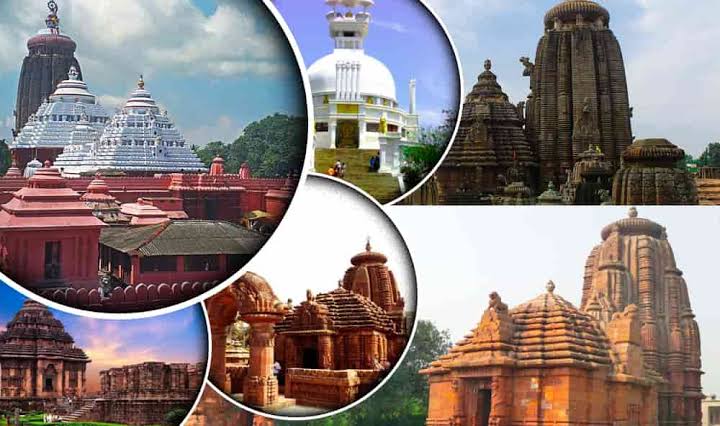
Puri tour plan for 2 days
1 Night/2 Days (10200 INR/ 2 Person)
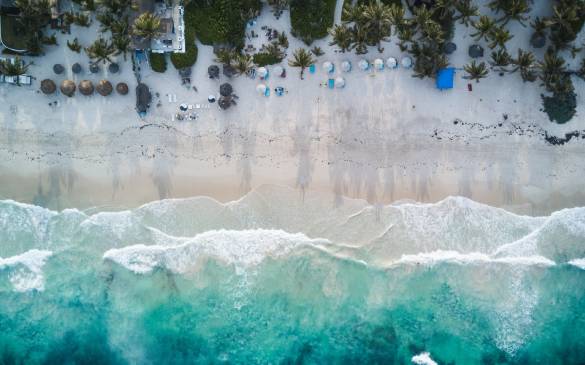
Puri Tour Plan for 4 days
3Night / 4Days ( 22200 INR / 2 Person)
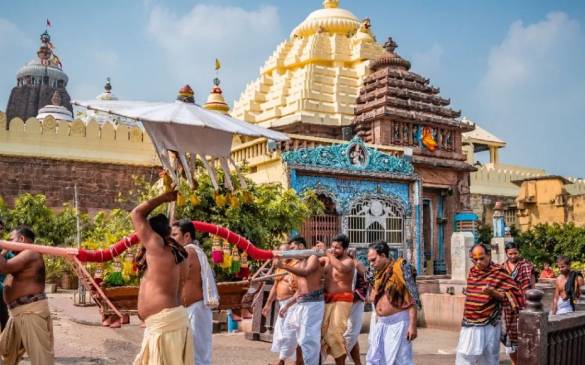
Puri Tour Package for 3 days
2Nights / 3Days ( 16200 INR / 2 Person)

Puri Tour Package for Couple
4Nights / 5Days (32000 INR)
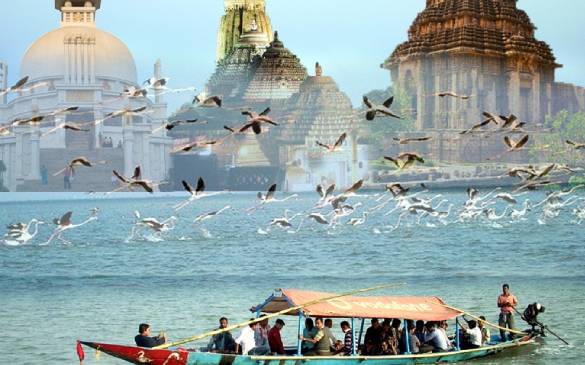
Puri Family Tour Package
2Nights / 3Days (16200 INR / 2 Person)
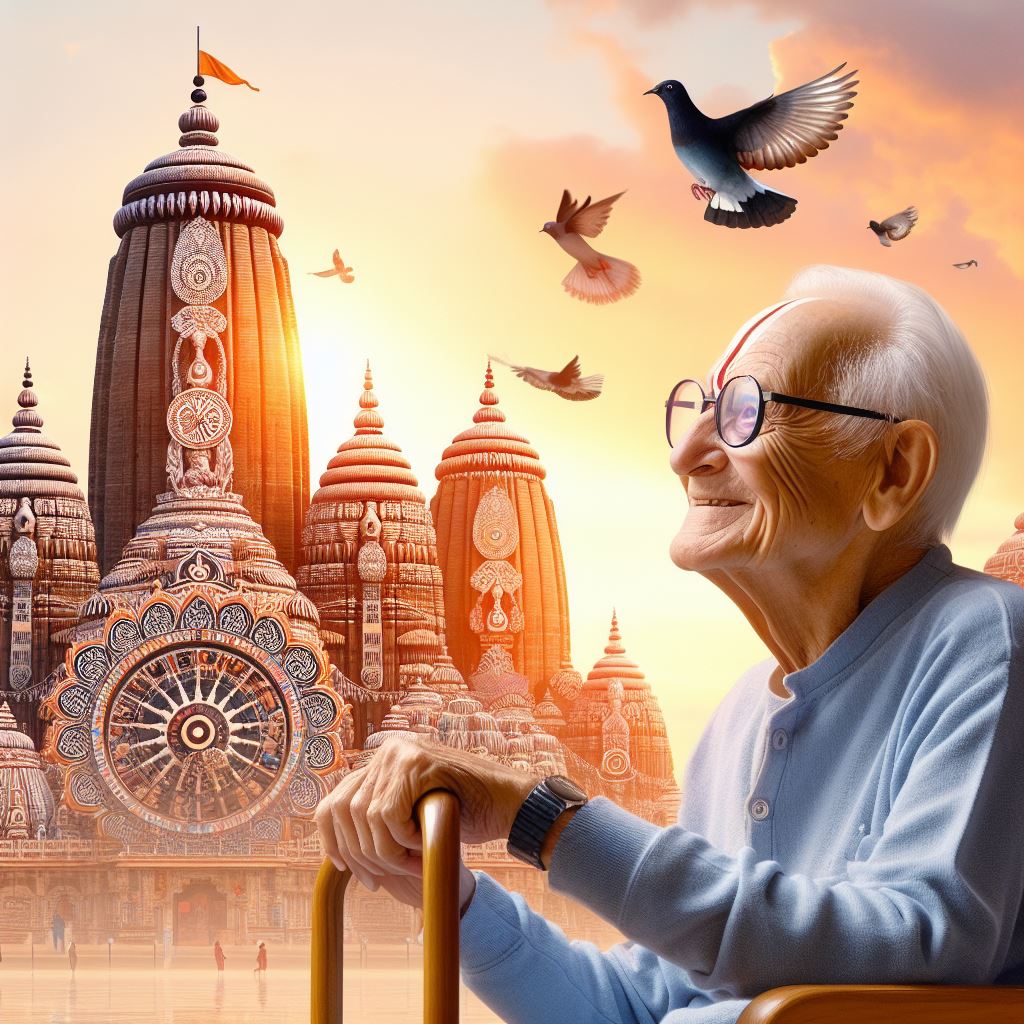
Senior Citizen Tour
3 Night 4 Days Price : 25000 / 2 Person
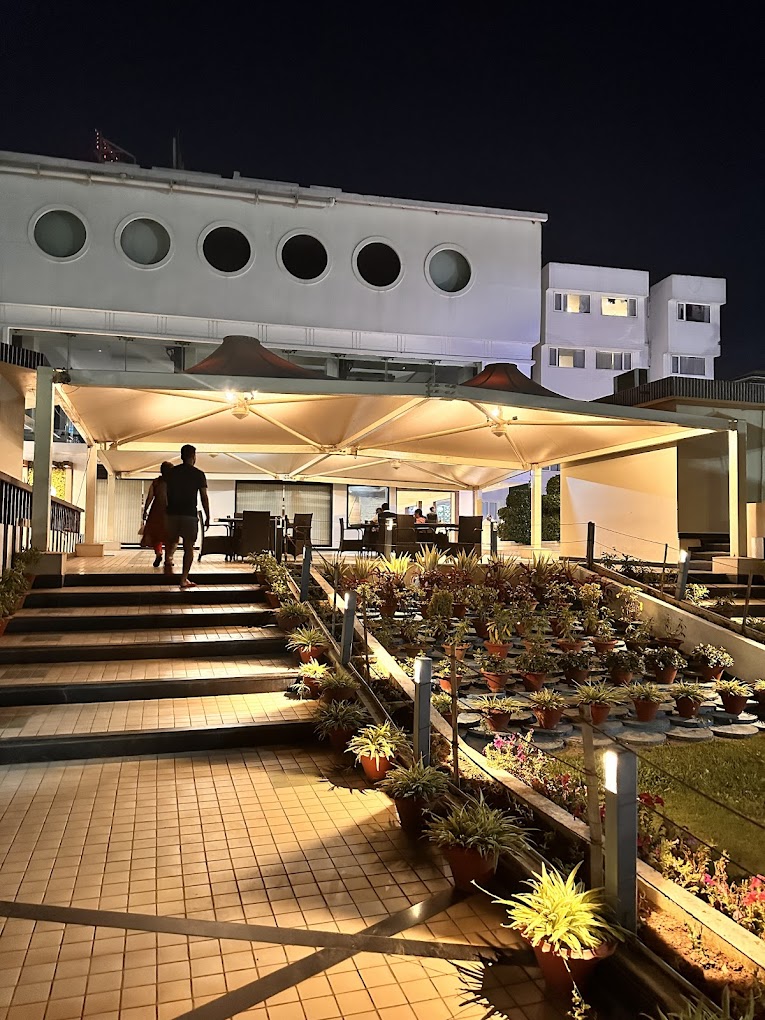
Corporate Tour
2 nights 3 days tour package
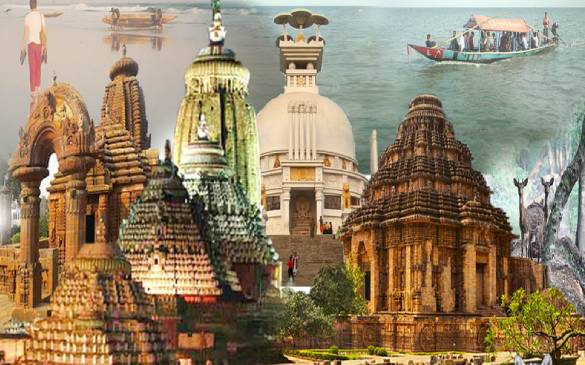
Best of Puri in 5 days tour
5days / 4Nights (28200 INR /2 person)
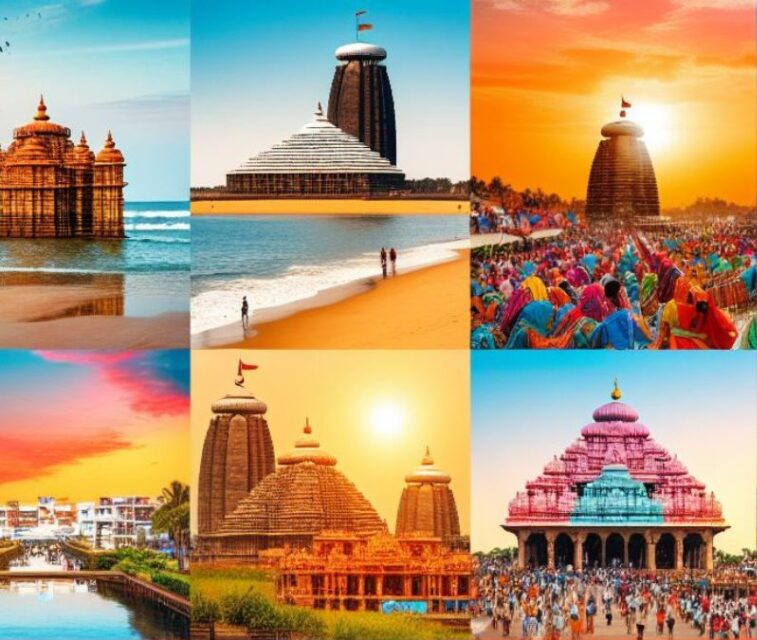
Gangasagar & Puri Tour
6 Nights 7 Days Tour Package
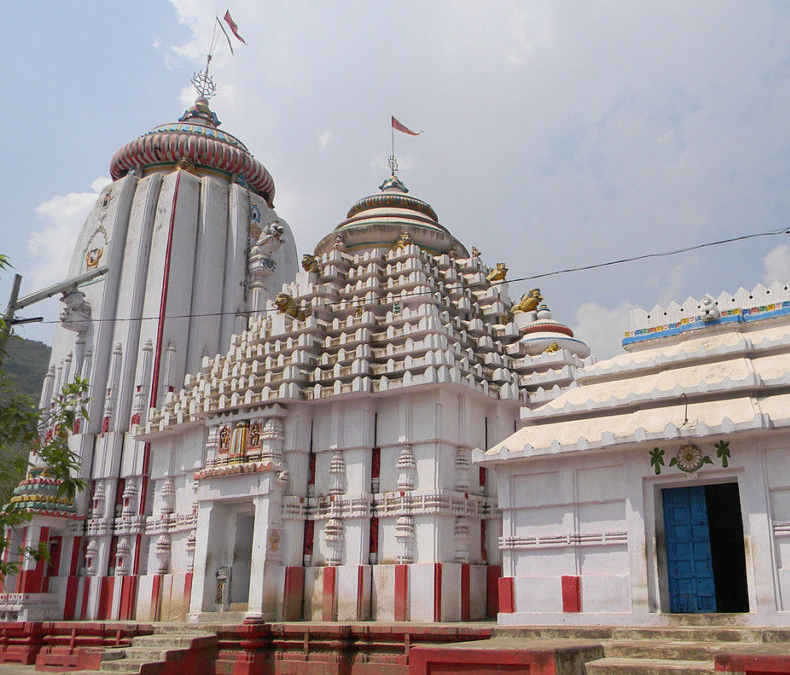
Biraja Temple Tour
3 Nights 4 Days (28000 / 2 Person)

Chilika lake
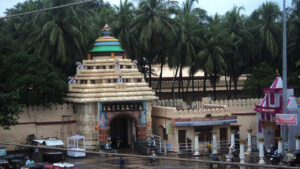
Gundicha Temple Puri: History, Timings, Photos!
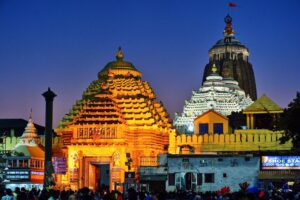
Facts to know about Jagannath Puri Temple

Best Beach in Puri: Top Spots You Must Visit Now!
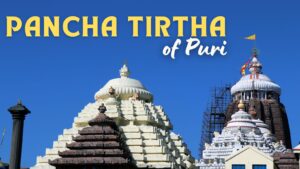
Pancha Tirtha of Puri: Explore These 5 Sacred Spots!
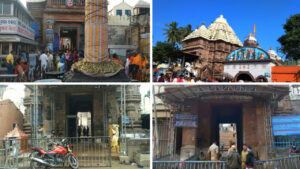
Four Gates of Puri Jagannath Temple: Their True Significance
Jagannath Temple, Puri: History, Facts and Other Interesting Details

Odisha is referred to as the Land of Lord Jagannath because of its association with the Hindu god (literally the Lord of the Universe). Since its construction in the 12th century AD, the temple at Puri has served as the spiritual hub of the Jagannath cult, drawing devotees from all over the globe.
The architectural beauty of this majestic temple is overshadowed by the charisma linked with the religion of Lord Jagannath. The enormous temple, perched on an elevated platform, is a work of art in and of itself.
Up to the mid-16th century, the temple was constantly renovated and expanded. The sculptures on the temples are mostly depictions of gods and goddesses, unlike other temples in the vicinity. The Kuruma Bheda (Inner wall) or the Meghnad Pachira (Outer wall) form two concentric walls around the whole temple complex (Wall).
At the eastern end of the temple, near the Singhadwara, the main entrance may be found, with three others along the other cardinal points. It is possible that the additional gates were built for security reasons because the temple was in such a dangerous location during the turbulent 16th to 18th century.
Table of Contents
Things You Need To Know Before You Visit Jagannath Temple, Puri:
Taking the steps up.
To replace the temple’s dome flag, a priest climbs the temple’s walls at the height of a 45-story building every day. This rite has been practised since the temple’s construction was completed more than a thousand years ago.
The technique is done without the use of any protective equipment. Supposedly, the temple would be closed for 18 years if the rite is missed on one calendar day. There is a good chance that professional climbers will be impressed by this.
After 8 pm, Stay Away From The Beaches
Puri is one of the greatest cities in the world to exhibit your passion for the beach, thanks to its numerous magnificent beaches. After 8 pm, it’s best to avoid going for a walk on the beach or anywhere else.
Exploring the coast at night might be dangerous since the shores are not well lit. It would help if you kept a safe distance from the shoreline during high tides.
The Yatra of Rath

The Rath Yatra is just an annual procession in which the gods are pulled by a pair of chariots outside the temple (3 each). At the river, that divides Jagannath Temple and Mausi Maa Temple, the first chariot brings the gods.
The idols are then loaded onto three boats and driven over the river. It is time for the second chariot to take the stage. From the river reaches the Mausi Maa Temple, it transports the deities.
- Bhubaneswar and Puri Tour for 3 Days
- 4 Nights 5 Days Odisha Tour Package
- Orissa Heritage Package for 5 Days
- 6 Days Bhubaneswar Puri Konark Itinerary
- Odisha Tour Package for 7 Days
- 7 Nights 8 Days Odisha Itinerary
- Odisha Tour Package 13 Days
History of Jagannath Temple, Puri:
According to an inscription, King Anantavarman Chodaganga of the Ganga dynasty ordered the building of the temple in the 12th century. Construction, on the other hand, remained unfinished. His son, Anagabheema Deva III, completed the work in 1230 AD and placed the three gods.
Non-Hindus are not permitted in the temple, and although admission is free, visitors must pay a nominal price to go close enough to the sculptures for special darshan.
Inside Jagannath Temple, Puri:
Jagannath’s holiness gundicha temple.

Near this shrine is the temple dedicated to Goddess Gundicha Puri, Odisha, India. The Gundicha Temple is Lord Jagannath’s most prominent refuge. It is a must-visit temple in Puri since it houses the gods Jagannath, Balabhadra, and Subhadra. Pujaris (saints and monks) tend over the temple.
It is positioned at the opposite end of the massive roadway from the renowned temple (Badadanda). According to data, the distance between Gundicha temple to Jagannath Puri Temple is 2688.0696 metres or 8327 ft.
Lord Jagannath & Gundicha Temples Are Two Of The Most Popular Temples In India
In Puri, one of the most famous temples is the Siva temple, located less than a mile from the Jagannath Temple. Most people believe Lord Rama ascended this lingam on a pumpkin, a Lanka.
Devotees go here to visit Lord Loknath to be cured of any form of ailment that they may be suffering from. In addition, the temple observes a variety of various festivals. Of the major festivals and fairs, Saranti-Somobar-Mela stands out.
The architecture of Jagannath Temple, Puri:
Nila chakra.

The temple’s apex, known as Nila Chakra, is adorned with a new flag, Patita Pavana, daily. Navagunjaras are the eight spokes of the chakra. Ashtadhatu, an eight-metal alloy, was used to create the chakra. The chakra has a diameter of 11 metres and a height of 3.5 metres.
Arun Stambha

Outside the Singdwara, Arun Stambh stands. The monolithic pillar has sixteen sides. The Sun god’s chariot is driven by an Arun idol here. When Guru Brahmachari Gosain transported the Arun Stambh from the Konark temple, it was initially situated there.
Timing of Jagannath Temple, Puri:
The temple is open from 05:00 am to 10:00 pm, with free darshan for all worshippers and free entrance.
Location of Jagannath Temple, Puri:
Grand Rd, At post, Puri, Odisha 752001
How To Reach Jagannath Temple, Puri:
A 56-kilometre drive from Puri’s centre brings you to the closest airport, Biju Patnaik Airport in Bhubaneswar. The airport is linked to Mumbai and Delhi by flight. Travellers from across the world must connect in either Delhi or Kolkata .
The main railway junction of Puri is located here. There are regular direct rail connections from various cities in India like Bhubaneswar, New Delhi, Chennai , Kolkata, and Hyderabad.
Well-built roadways link Puri to the surrounding cities. Because the bus station is so close to the Gundicha Temple, buses are the most common mode of transportation to and from Puri. By bus, Bhubaneshwar and Cuttack are both around a 15-minute ride apart.
- Bhubaneswar
Lord Jagannath Dhaam Puri’s Most Famous Dish:

The food served to the deity at Lord Jagannath Temple is called Mahaprasad. As you enter the unique temple area, you will see a separate kitchen within the temple area where the Mahaprasad dish is being prepared.
Lakhs of pilgrims visit the shrine of Lord Jagannath every year, and the kitchen can make enough food for them all. Cooked rice, dal, vegetable curry, a wide variety of veggies, and dessert dishes make up the Mahaprasad. The market within the Jagannath mandir in which the Maharasad is sold to worshippers is called Anand Bazar.
Khaja, a popular sweet dish in Puri, is also presented to the god Jagannath. Khaja comprises oil, sugar, and, most importantly, wheat flour, the three most vital components. Some 200 years ago, the Khaja was claimed to have been made in the modern-day southern area of Bihar . To make Khaja, sugar is first applied to the fried dough before it is allowed to cool.
Chung Malai
Seafood is a given in Puri’s cuisine due to the city’s location on the coast. Chung Malai, one of the numerous seafood dishes available, is a must-have with steamed rice. As the name suggests, the meal is a coconut milk-based prawn curry rich in flavour and texture.
The mild spices improve the taste by adding a unique scent to the feed. Try this with fried rice for a different take on this classic comfort food.
Festival of Ratha Yatra:
Every year, Odisha’s most fantastic and renowned celebration sees the idols removed from the temple in June or July. Ratha Yatra is a Hindu celebration that sees the gods paraded about on chariots that resemble temples. Building the chariots gets underway early that year and is a labour-intensive operation.
Things to Do in the Local Area:
Tourists may take a three-hour walking tour of the Old City around the Jagannath Temple through Grass Routes Journeys, a local, ethical tourism organisation (including the pottery area). Foreigners who aren’t allowed to enter the temple but still want to learn about it should take this trip.
Puri’s handicraft hamlet of Raghurajpur is about a 15-minute drive away. In front of their brightly coloured homes, artists work on their wares. Those who paint with Pattachitra have unique skills.
Indian visitors flock to Puri to experience its carnival-like main beach. They come in droves to have fun in the sea and ride camels and horses across the dunes.
From May to July, Puri experiences its monsoon season, which brings with it very high rains. But the most critical Jagannath Puri Temple festivities, including the Rath Yatra, are only held during these months. Despite the bad weather, you may still participate in Puri’s spectacular celebrations. Due to many devotees during this period, costs may be somewhat high.
More Information on Odisha:
- Top 20 Places to See in Orissa
- Odisha List of 10 Best Beaches
- 10 Most Beautiful Waterfalls in Odisha
- Romantic Places in Odisha for Honeymoon
- 10 facts about the Konark Sun Temple, Odisha
About The Author
Tusk Travel Team
Related posts.

Daily Odisha Tour Announced By IRCTC Authorities

Top 10 Facts About the Konark Temple, Odisha
Leave a comment cancel reply.
Your email address will not be published. Required fields are marked *
Save my name, email, and website in this browser for the next time I comment.

- Middle East
© 2024 - All rights reserved. Designed and developed by Fork Media Group

Jagannath Rath Yatra: A Guide For Those Visiting Puri’s Festival The First Time
We are only a month away from Odisha’s biggest festival ‘Jagannath Rath Yatra’, starting on 1 July 2022. The preparations for constructing the majestic chariots for the holy trinity ‘Lord Jagannath’, ‘Devi Subhadra’, and ‘Lord Balabhadra’ are going in full swing. This is indeed the best time to travel to Puri to enjoy a lovely beach vacation and witness the famous Jagannath Rath Yatra and offer your prayers to the holy trinity. So if you are a first-timer to this grand celebration, then here is a guide for you.
Shri Jagannatha Temple Puri
The world-famous Jagannath Temple of Puri is the home to Lord Jagannath and his elder brother Balabhadra and younger sister Subhadra. It is a 12 th century temple and one of the most prominent temples in the state. The massive gates in the four directions, humongous walls, shrines, Arun Stambha, and so much more come together to the entire temple. It seems like a 365-day festival here because of the festivals and rituals to worship the lords. However, Jagannath Rath Yatra is the most eminent, renowned, and celebrated festival.
Also read: 5 Stunning Road Trips To Take In Odisha

Guide To the Jagannath Puri Yatra
This time of the year is not only the celebration inside the temple. This is a grand time for the people of Puri, Odisha, and the tourists visiting here from all around. The idols will be placed on three different beautifully decorated chariots and will be taken to the Gundicha Temple by the Grand Road. The idols will stay at the Gundicha Temple for some time and then return back to the main temple. The first day of the 9-days long festival is the most auspicious day of all. People try their very best just to get a glimpse of Lord Jagannath travelling by his chariot. Anywhere you look, all you will see are uncountable devotees, the crowd trying to pull the rope of the chariots.
Also read: 5 Ancient Temples In Odisha That Will Make You Swoon With Their History
The Crowd Is Unbelievable
Before the celebrations begin, the preparation starts 2 weeks back with ‘snanyatra’. Snanyatra is a bathing ritual of the idols and this year it will take place on 14 June 2022. According to stories, the idols fall sick after this ritual and hence they stay in solitude. Meanwhile, the Shri Jagannatha Temple is closed to tourists during this time. The crowd increases every day and the whole place gets filled with chanting, music, and devotees praying to the holy trinity.
Tourists can easily book a train to reach Puri as tickets are easily available. If you are reaching here by flight, then the nearest airport is Biju Patnaik International Airport (Bhubaneswar). The distance from the airport to Puri is almost 65km. The most important thing to do for Jagannath Rath Yatra is to book tickets and hotels way ahead. The crowd is immense at this time and getting tickets and hotels in Puri just a few days back is nearly impossible.
Join The # CT Squad!
Sign up for our daily email and get the best delivered straight to your inbox. We pinky promise to make it awesome!
Top 10 Places to visit in Jagannath Puri Dham
- Post author By gaudiya
- Post date February 12, 2022
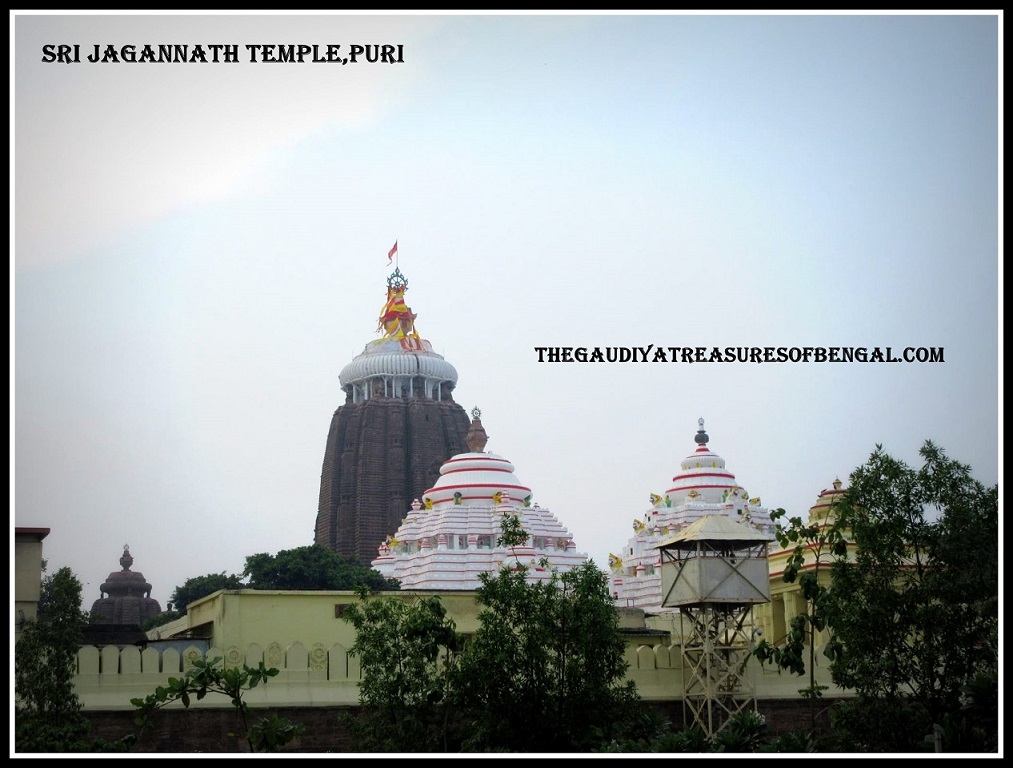
Jagannath Puri is located about 60kms from Bhubaneswar, on the coast of the Bay Of Bengal, in the state of Orissa, India. Jagannath Puri is addressed by various names. Some of these names are Sri Kshetra, Purushottama kshetra, Nilachala dham, Jagannath dham, Samanik tirtha, Uddiyan pith, Marta-Vaikuntha, Nilgiri, Niladri, Sankha kshetra, Bhu-svarga, and Nrsimha kshetra. Jagannath Puri is one of the most prominent spiritual sites of India (Bharat). It is said that the Supreme Lord bathes at Badrinath (situated in North India), He changes His clothes at Dwarka (situated in West India), accepts His food at Jagannath Puri (situated in East India), and then proceeds to take rest at Rameshwaram (situated in South India). Here at Jagannath Puri, the Supreme Lord resides in His deity form. Anyone who takes His darsana attains liberation from this material world. By visiting Jagannath Puri, one attains the pious credit of visiting all the other places of pilgrimage. Listed below are some of the exalted places of Jagannath Puri dham.
Page contents
#1 Lord Jagannath temple, Puri
The word “Jagannath” stands for “Lord of the Universe”. King Indradyumna had established this temple of Lord Jagannath here on the Nilachal hill. We have narrated the relevant pastimes concerning the history of the Jagannath temple Puri in our previous articles. The present temple was built in the 12th century atop its ruins by the progenitor of the Eastern Ganga dynasty, King Anantavarman Chodaganga Deva. It is one of the most popular spiritual destinations in India. The structure of Jagannath Temple, Puri is an architectural and cultural wonder. It is about 65 meters in height and is built upon elevated ground, which makes it look imposing. The temple complex comprises an area of approximately 10.7 acres and is enclosed by 2 rectangular walls. The outer enclosure is called ‘Meghanada Prachira’ measuring approximately 200m (665 ft) by 192m (640 ft). The inner wall is called ‘Kurma bheda’, measuring 126m (420 ft) by 95m (315 ft) approximately.
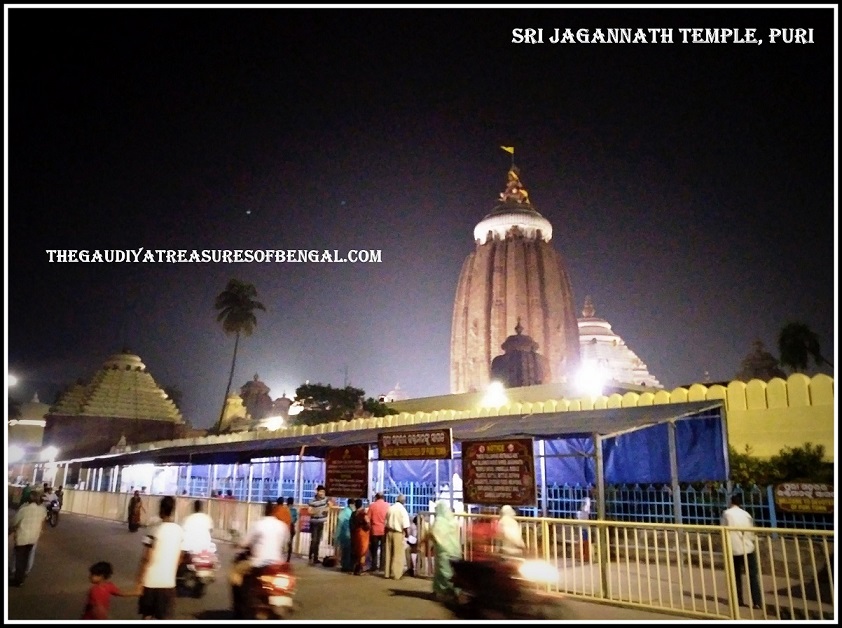
These walls were built during the 15th or 16th centuries. Thirty different smaller temples surround the main temple. The Lord Narasimha temple adjacent to the western side of the Mukti-Mandapa was built before the present temple. In front of the main gate (Simha Dwara) is an 11 m pillar known as Aruna Sthambha. This pillar was once in front of the Sun Temple in Konark. It was bought to puri during the 18th Century. The figure on the pillar is Aruna, the charioteer of the Sun God. The main deities of the temple namely Lord Jagannath, Lord Baladeva, and Subhadra Devi reside on the main shikhara or tower that rises above the inner sanctum. Above the ante-halls, some supplementary towers can be seen. The wall surrounding the temple complex has a gopura or gate over which rises a pyramid-shaped roof. Some of the other temples within the compound house deities of Sri Chaitanya Mahaprabhu, Lord Rama Chandra, Sakshi Gopal, Hanuman, Lord Narasimha, Lord Varaha, Lakshmi devi, and others. Vimala devi, a form of Goddess Durga, is also worshiped in one of the smaller temples within the compound.
How to Reach :
Jagannath Temple, Puri is situated on the Grand Road of the city of Puri. It is renowned all over the world. After arriving at the city of Puri, one can avail cabs to reach here directly.
#2 Gambhira (Sri Radha Kanta Math)
Gambhira is the house of Kasi Misra where Lord Chaitanya resided for the last twelve years of His manifested pastime. Gambhira is situated at Balisahi, to the southeast of Jagannath temple in Puri. The place has also come to be referred to as the ‘Radha Kanta Math’ because ‘Radha Kanta’, a beautiful deity of Sri Krishna, is also worshiped at this place. After accepting His sannyasa, Lord Chaitanya shifted from Bengal to Jagannath Puri. He initially stayed at the residence of Sarvabhauma Bhattacharya. But later, after He returned from His tour of South India, He accepted the Gambhira, the house of Kasi Misra, as His residence.
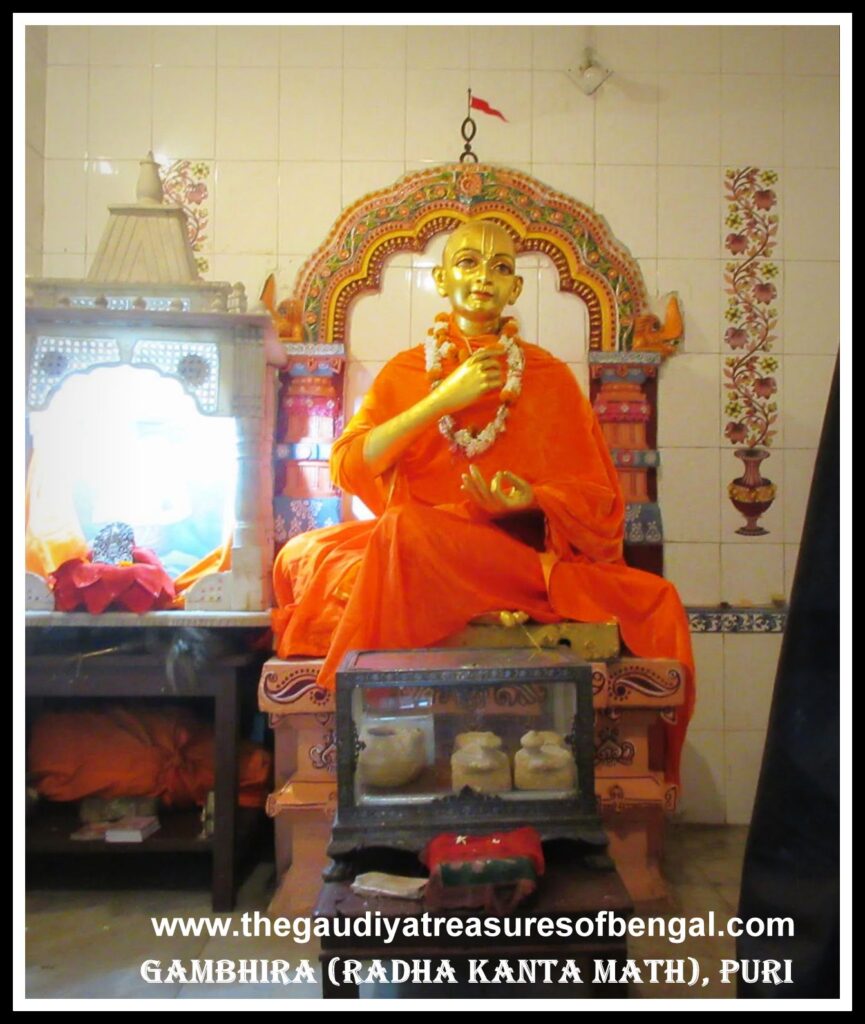
During the later stages of His pastime at Gambhira, Lord Chaitanya was so greatly obsessed with the feeling of separation from Krishna, that He exhibited the highest symptoms of devotional ecstasy. His condition was similar to the Gopis of Vrindavan who were devastated after Krishna left for Mathura. The lamentation of Srimati Radharani that was witnessed by Uddhava when he visited Vrindavan after Krishna had left, became a feature of Sri Chaitanya Mahaprabhu’s transcendental madness. When the Gopis felt separation from Krishna, they underwent ten kinds of bodily transformations. The same manifestations appeared in the body of Sri Chaitanya Mahaprabhu. Whenever Mahaprabhu manifested such ecstatic emotions, Ramananda Raya and Svarupa Damodara recited various verses from the scriptures or the works of Chandidasa, Bilvamangala Thakura, Jayadeva Goswami to pacify the impassioned heart of Lord Chaitanya. Visiting Gambhira, one can take darsana of Sri Chaitanya Mahaprabhu’s room, His Kamandulu, footwear and quilt. One can also attain darshan of the enchanting deities of Sri Radhakanta (Krishna), Srimati Radharani, and Lalita devi.
Gambhira or Radhakanta Math, as it is also known, is hardly a 10 minutes walk from Swargadwar in Puri. The Math is also quite near to the Puri Jagannath temple. It is situated at Balisahi, to the south east of Jagannath temple in Puri. The place is quite renowned and one can avail cabs to reach here directly.
#3 Tota Gopinath temple
After Lord Chaitanya had taken His Sannyasa, He shifted from Bengal to Jagannatha Puri. Sri Gadadhara accompanied the Lord to Puri as well and engaged Himself in the service of Tota Gopinatha. Sri Tota Gopinatha is an exquisitely beautiful Deity of Lord Krishna. Tota Gopinatha is also the most unique as He is the only deity of Krishna who manifests the posture of sitting down. This enchanting deity of Tota Gopinatha jiu was unearthed by Sri Chaitanya Mahaprabhu when He started digging the ground one day, feeling intense separation from Krishna, the Supreme Lord. Crying out “Where is my Prananath? ” Lord Gauranga started digging the ground in divine ecstasy and in the process discovered this enchanting deity.
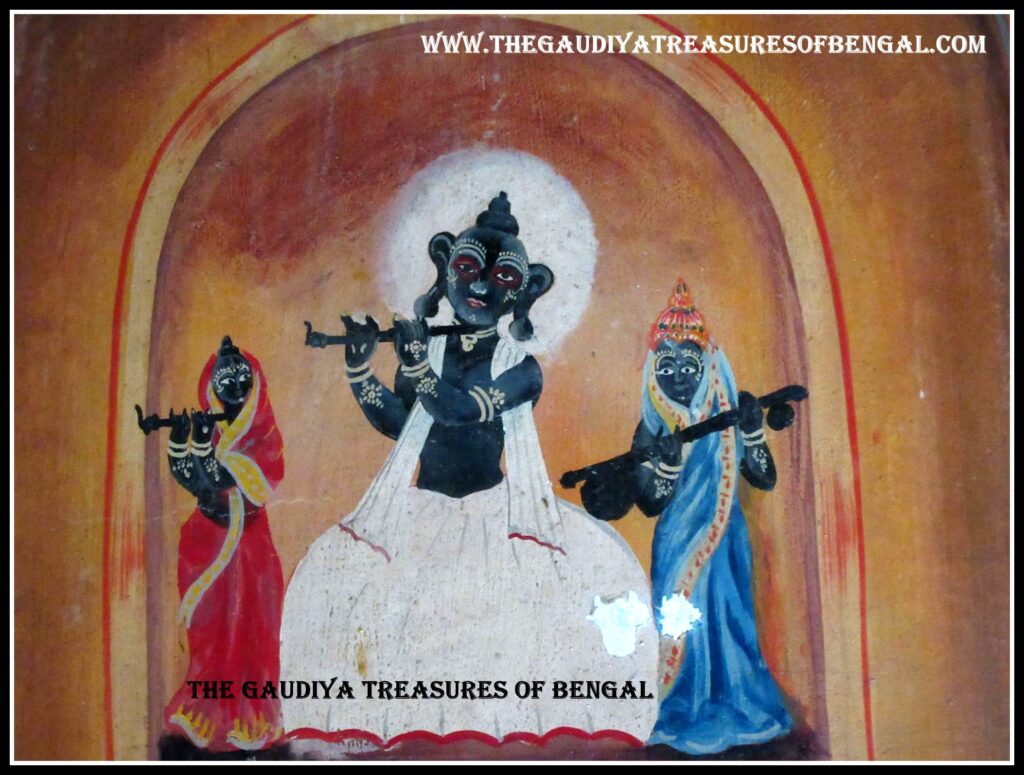
Sri Gadadhara had dedicated Himself unto the service of this deity ever since. Mahaprabhu named the Deity Gopinath, and because the deity appeared in a garden (garden is called ‘tota’ in Oriya) the devotees refer to Him as Tota Gopinath. Sri Vrindavana das Thakura mentions in Chaitanya Bhagavata, that the heart of even the most demoniac atheist would soften upon taking darsana of this mesmerizing deity of Tota Gopinatha. Every day, at the temple of Tota Gopinatha, Sri Gadadhara Pandita would recite Srimad Bhagavatam and Lord Chaitanya, along with His associates, would often visit to relish the nectar.
Gopinatha temple is situated in Sri Ksetra Jagannatha Puri Dhama in an area named Yamesvara Tota. The temple of Tota Gopinath is located by a large water tower. The temple is hardly a five minutes walk from the Chataka Parvat Purushottam Gaudiya Math temple. The place is renowned as the ‘Tota Gopinath temple’ and one can avail cabs to reach here directly.
#4 Gangamata Math – Sarvabhauma Bhattacharya’s House
Gangamata Math is situated to the south of the Jagannath temple on the bank of the Sweta Ganga tank in Jagannath Puri. This was previously the residence of Sarvabhauma Bhattacharya. It was here at Gangamata Math that Sri Chaitanya had explained the ‘atmarama’ verse of Srimad-Bhagavatam to Sarvabhauma in eighteen different ways. Sarvabhauma could gradually perceive that Lord Chaitanya was none other than the Supreme Lord. When the Bhattacharya came to his senses, Sri Chaitanya Mahaprabhu disclosed to him His real identity revealing to him His sad-bhuja form (six handed form). The Bhattacharya then recited one hundred verses glorifying Lord Chaitanya Mahaprabhu and offered his obeisances.

Later Saci devi, princess of Puthia, had taken up Gangamata Math as her residence on the instructions of Sri Haridasa Pandita, her spiritual master. Saci devi came to be later known as Ganga Mata, owing to miraculous pastimes at Sweta Ganga.
Gangamata Math is situated to the south of the Jagannath temple on the bank of the Sweta Ganga tank in Jagannath Puri. It is hardly a 10 minutes walk from the Jagannath Puri temple. The place is quite renowned and one can avail cabs to reach here directly.
#5 Siddha Bakul
After Chaitanya Mahaprabhu had accepted His sannyasa, and shifted to Jagannatha Puri, Srila Haridas Thakur followed Him as well. Despite being a stalwart Vaishnava, Srila Haridas had always considered himself to be low-born and exceedingly abominable. Hence, out of his sheer humility, he never entered the premises of the Jagannatha Puri temple. At Puri, Lord Chaitanya had arranged a place for Haridas’s stay, positioned just behind His own residence at Gambhira. The residence of Srila Haridas is renowned today as ‘ Siddha Bakul ’ (Siddha means perfect).
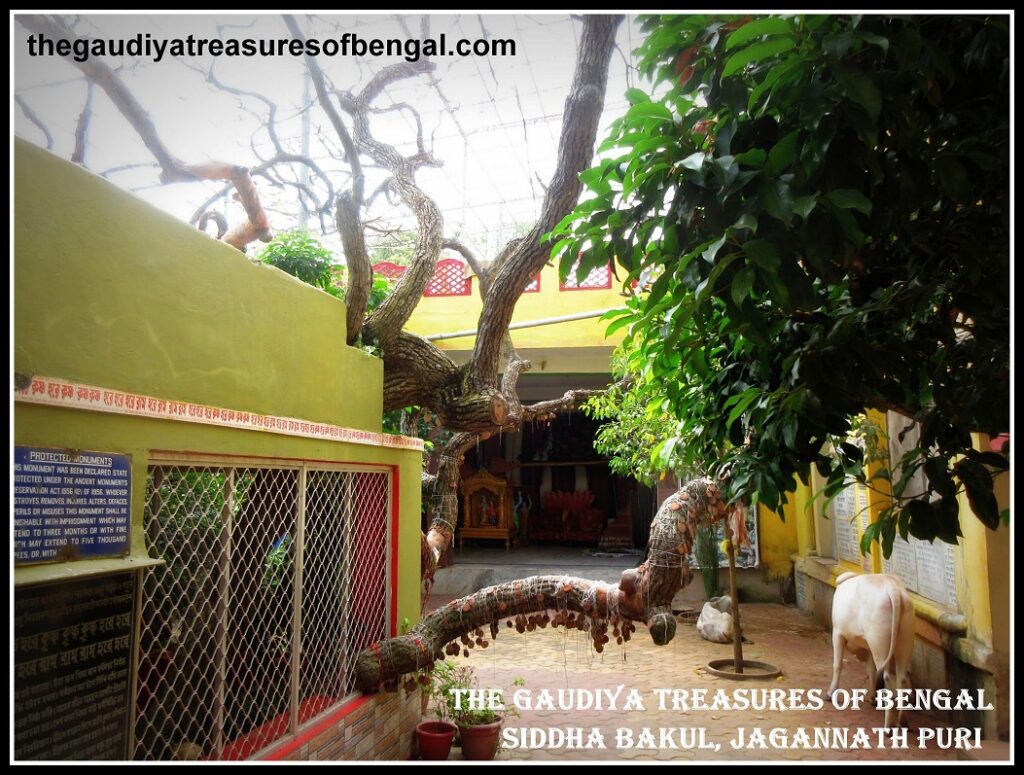
The sacred place has derived its name from a Bakul tree that grows over here. This fortunate tree is over 500 years old and it used to provide its cooling shade under which the Thakur chanted his rounds peacefully. Lord Chaitanya had personally planted a used tooth-stick of Lord Jagannatha into the ground at this place, which immediately grew up and blossomed into this Siddha Bakul tree. To this day, anyone visiting this place can take darsana of this sacred Bakul tree. The tree looks like it has exploded or it appears to be completely dead. Yet it is wonderfully thriving with lush green leaves and fragrant flowers.
Srila Haridas Thakura’s bhajan Kutir (Siddha Bakul) is located on the Bali sahi Road. It is not very far from Gambhira, the erstwhile residence of Lord Chaitanya in Puri. Siddha Bakul is about a Kilometer from the Jagannath temple and about 3 Kms from the Jagannath Puri Railway station.
#6 Haridas Thakur Samadhi, Swargadwar
About 500 years ago, namacharya Srila Haridas Thakur breathed his last and wrapped up his earthly pastimes at Siddha Bakul in Jagannath Puri. He yearned to pass away while beholding the moonlike face of Lord Gauranga. Lord Gauranga, the Supreme Lord, granted the wish of Haridas, His beloved servant. Holding the lotus feet of Lord Chaitanya upon his heart and drinking the nectar of the Lord’s moon-like face, Haridas incessantly chanted the holy name of Sri Krishna Chaitanya in ecstasy. While chanting thus, he left his body, entering the eternal abode of the Supreme Lord.

Raising the body of Haridas Thakur with His own hands, Lord Chaitanya began dancing in divine ecstasy. There was a tumultuous roar and all the devotees joined in the Harinama sankirtana. Chanting and dancing, Lord Chaitanya led a procession carrying the body of Haridas to the sea. Mahaprabhu bathed the body of Haridas Thakura and then proclaimed that the sea had become a great site of pilgrimage from then on as it touched the transcendental body of Haridas.
haridase samudra jale snana karaila prabhu kahe – “samudra ei ‘maha-tirtha’ haila” (Chaitanya Charitamrta, Antya, 11.64)
All the assembled devotees drank the seawater and touched the lotus feet of Srila Haridas Thakura. Thereafter, a hole was dug in the sand and the transcendental body of Haridas Thakur was placed into it. Amidst loud sankirtana, silken ropes, sandalwood pulp, food, and cloth were placed upon the body. Lord Chaitanya personally covered the body of Haridas with sand. The devotees assisted the Lord and constructed a raised platform on the site. The platform was then enclosed by a fence to give protection. This samadhi of Haridas Thakur is a prominent place for pilgrimage for devotees all over the world even to this day. A temple has since been constructed on the site which houses and protects the samadhi.
Srila Haridas Thakura’s Samadhi is located on Haridas Math Lane, situated on the oceanfront in the area of Swargadwar opposite to ISKCON temple (Bhakti Kuti). 500 years ago, during the time of Chaitanya Mahaprabhu the place was just a sandy beach. There is a nice temple that is now constructed that houses and protects the samadhi. ‘Haridas Thakur Samadhi temple’ is located about 2 Kms from Jagannath Puri temple, 3 Kms from Puri bus stand and 3.5 Kms from Puri Railway Station.
#7 Jagannath Vallabh garden
Jagannath Vallabh Garden , situated on the south of Narendra Sarovara, is considered to be as ancient as the temple of Lord Jagannath. This large garden, full of coconut trees and a cooling pond, is very dear (vallabha) to Lord Jagannath because it grows a variety of flowers and fruits that are engaged in His service. Lord Jagannath’s ‘utsava murti’ (festival Deity) is also brought here on numerous auspicious occasions for Him to relish the various festivities that are conducted here. On the left entrance is situated Jagannath Vallabh Math, which is believed to have been established by the devotees of Sri Vishnuswami sampradaya. This garden is very significant for the Gaudiya Vaishnavas as Sri Chaitanya Mahaprabhu had enacted many of His wonderful pastimes here at this place. Visiting this garden one full moon night in the month of Vaisakha (April-May), Lord Chaitanya made His associates sing the verse from Gita Govinda beginning with the words – ‘Lalita Lavanga Lata’ as He danced about in the garden.
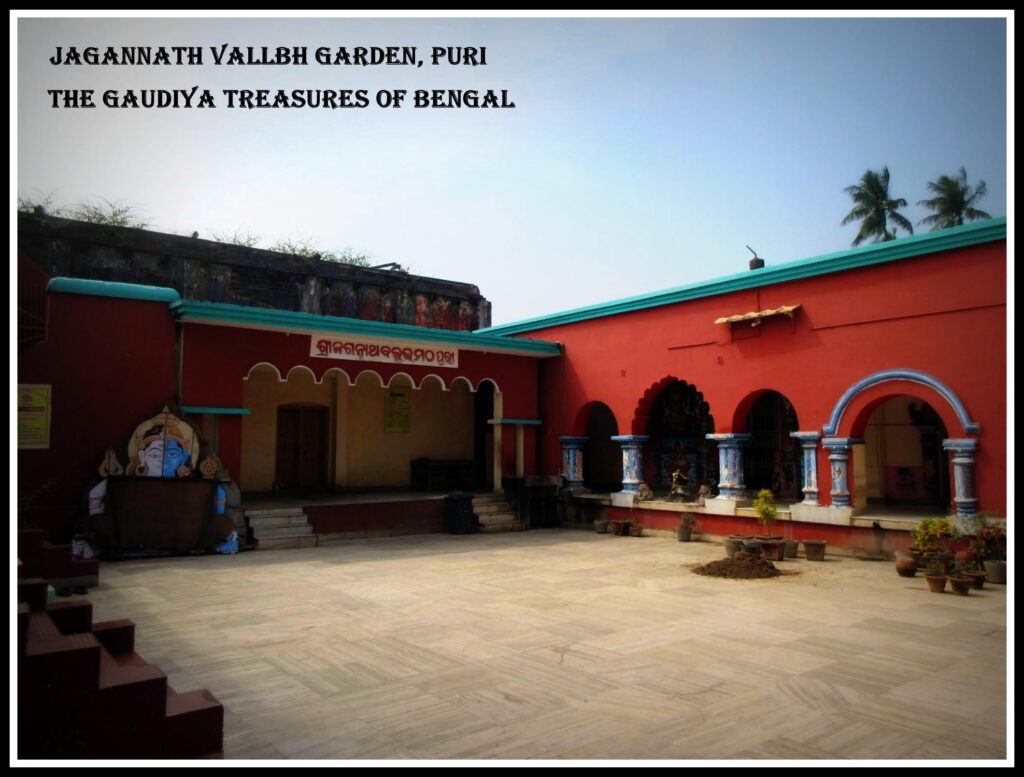
While wandering thus, Sri Chaitanya suddenly saw Krishna underneath an Ashoka tree. As soon as Lord Chaitanya ran towards Him, Krishna smiled and disappeared from His sight. Having found and then lost Krishna, Lord Chaitanya became disheartened and fell unconscious. The whole place was filled with Krishna’s fragrance which further maddened Lord Chaitanya who craved to relish it. On the occasion of the Ratha yatra, it was here at the Jagannath Vallabh Garden that Lord Chaitanya had rested after dancing ecstatically. It was here at Jagannath Vallabh Garden that Lord Chaitanya bestowed His causeless mercy upon King Pratap Rudra who had forsaken his royal robes and approached the Lord dressed as a Vaishnava. It was here at the Jagannath Vallabh garden that the King messaged the legs of Lord Chaitanya and recited verses from Srimad Bhagavatam.
This place is a few hundred meters walk up the Grand Road towards the Jagannath temple. The Garden has a distinctive dark red boundary wall. It is situated on the opposite side of the well-known landmark of Municipal Market.
#8 Gundicha temple
Gundicha temple is situated at the end of Badadanda or Grand Road, to the northeast of the main Jagannath temple. It is at a distance of around two kilometers from the Jagannath temple. Within the Gundicha Temple, there is a ‘Mahavedi’ where the deities of Jagannath, Baladeva, and Subhadra had appeared in Satya Yuga during the time of King Indradyumna. The Gundicha temple is identified as the birthplace of Lord Jagannath and is named after King Indradyumna’s wife, Gundicha Maharani. It was in this area that King Indradyumna had performed a thousand Ashwamedha Yajnas. Lord Jagannatha, Baladeva, and Subhadra along with Sudarshan, leave Jagannatha Mandira for nine days. They travel to the Gundicha on the Ratha Yatra day, reside there for seven days, and then on the ninth day, they return to the main temple.
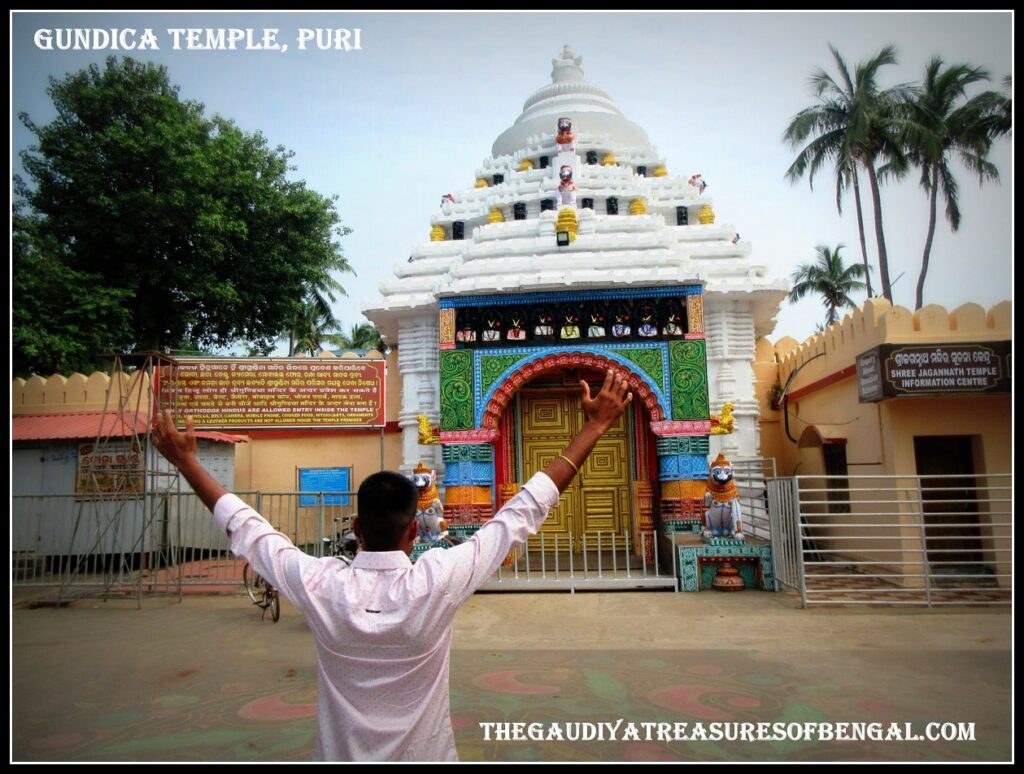
This Journey is also known as Gundicha Yatra, Nava Dina Yatra (nine days Journey), or Ghosa Yatra. It is very auspicious to attain the darshan of Jagannatha during this time. Darshan of Jagannatha during His stay at Gundicha temple is known as ‘Adapa Darshan’. It is mentioned in the scriptures that the darshan of Lord Jagannatha at Gundicha is ten times more spiritually beneficial than taking His darshan at the main Nilachala temple (main temple).
The place where the Gundicha temple is situated is also known as Sundarachala. It is compared to Vrindavan. Gundicha is surrounded by lush gardens and tall coconut trees. Fragrant flowers and shady trees create a Vrindavan-like atmosphere which Lord Jagannath enjoys for 7 days before returning to Jagannath Mandira during Bahuda Yatra (Ulta Rath).
Gundicha is a typical Kalinga temple and has four main components – Vimana (tower housing sanctum), Jagamohana (assembly hall), Nata Mandapa (festive hall), and bhoga Mandapa (Prasadam offering hall). The Kitchen is attached to the main temple via a small passage. The Gundicha temple has no activity throughout the year except for the nine days when the Ratha Yatra takes place and Lord Jagannath resides here.
Gundicha is situated at a distance of just 3 kilometers from the main Jagannath temple in Puri. It is located at the end of Badadanda or Grand Road. The place is quite renowned and one can avail cabs to reach here directly.
#9 Lord Narasimha deva temple
This temple of Yajna Narasimha is one of the most ancient Vaishnava Shrines in Jagannath Puri. Situated near the northeast boundary wall of the famous Gundicha Temple, the Narasimha shrine finds its mention in the Skanda Purana and is said to have existed at the time King Indradyumna visited the place in Satya Yuga. King Indradyumna is said to have built a temple for Narasimha and installed the deity therein, with the help of Sage Narada. Indradyumna also performed thousands of Ashwamedha yajnas in this temple, and thus the Deity is known as Yajna Narasimha.
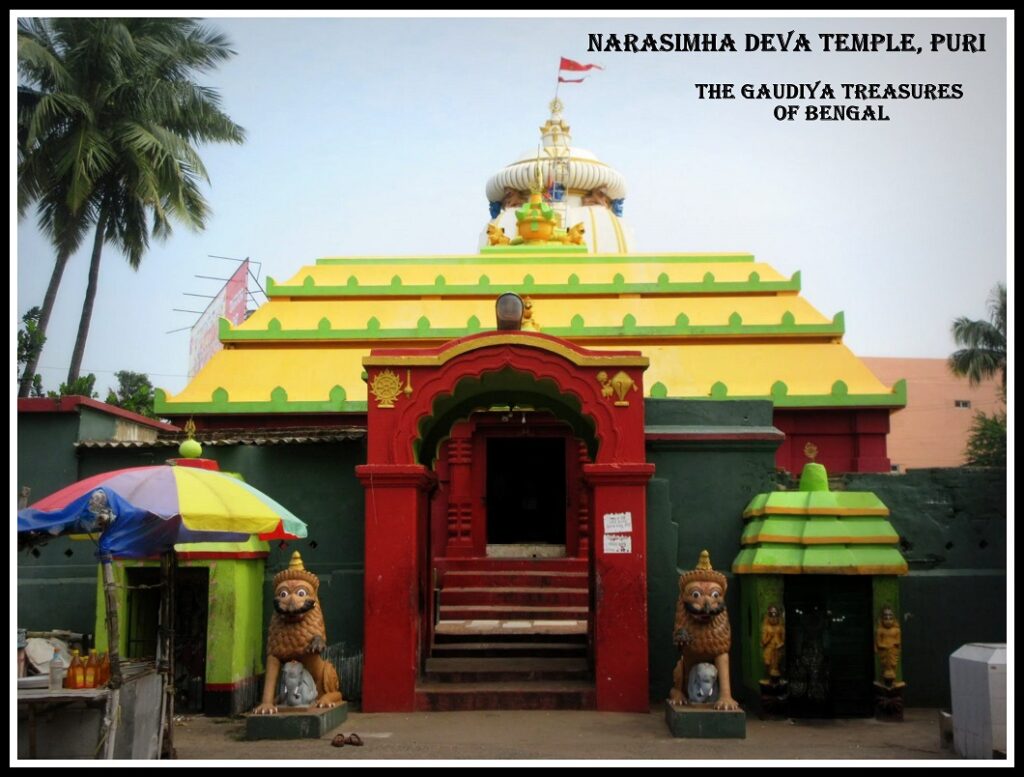
There are two deities of Lord Narasimha one behind the other, that are worshiped in this temple. A deity of ‘Shantha Narasimha’ (peaceful form) is worshiped at the front. This peaceful deity of Narasimha has human-like features- a sharp nose, curvy mustache, and an outstretched tongue. By seeing this form of Narasimha one feels calm causing all of one’s anger to subside. Once a Muslim marauder named Kalapahad ransacked Puri and damaged numerous Deities. But upon seeing this form of ‘Shantha Narasimha’, his anger subsided and he did not harm the Deity. The other Deity who is worshiped inside the temple is that of Ugra Narasimha deva. This is the fearful form of Lord Narasimha Deva.
Lord Narasimha is the fearsome half man-half lion form of the Supreme Lord Krishna, who had manifested Himself out of a pillar to protect His devotee Prahlada from the hands of demon Hiranyakashipu, his father. Hiranyakashipu was a mighty demon who had almost become immortal having been granted boons by Brahma. Hiranyakashipu wreaked havoc by conquering all of the three worlds in this material universe. No one could dare stand up against him in any war. The demigods were overthrown from their kingdoms in heaven and were made to bow at the demon’s feet. Hiranyakashipu was finally killed by Lord Narasimha deva who placed the demon on His lap and ripped open his body with His fingernails.
Yajna Narasimha deva temple is situated at a distance of just 3 kilometers from the Jagannath temple in Puri. It is located at the end of Badadanda or Grand Road near the northeast boundary wall of the famous Gundicha Temple . The place is quite renowned and one can avail cabs to reach here directly.
#10 Narendra Sarovar
Narendra Sarovar is a large water body (873 feet long and 743 feet wide) located to the northeast of Jagannath temple in Puri, next to the Jagannath Vallabha garden. This pond is also known as ‘Chandan Pukur’ because the Chandan-yatra of Lord Jagannath takes place here. Narendra Sarovar is said to have been founded by King Bhanu Narasingha deva of Ganga dynasty. It was named after his mentor Nakhaposi Narendra Mahapatra.
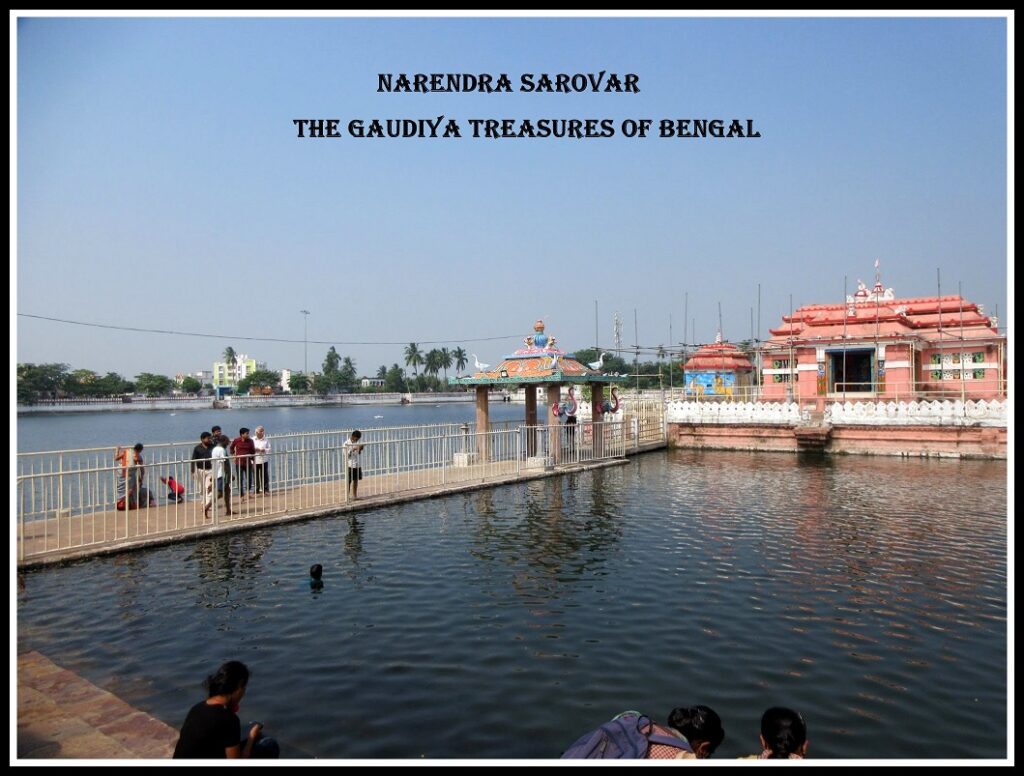
The representative deities of Lord Jagannath come here every evening for 21 consecutive days during His Chandan-yatra, starting from Akshaya-Tritiya (in the month of Vaisakha or April/May) up to Suklastami-tithi in May/June (Jaistha) to enjoy His boating pastimes (Nauka Leela). The boat ride on this serene lake helps relieve the intense summer heat and provide the Lordships with some comfort. It was here at Narendra Sarovar that Sri Chaitanya Mahaprabhu had enjoyed water pastimes along with His associates, 500 years ago, during Lord Jagannath’s Chandan Yatra festival.
Atharnala haite dashdanda haile Mahaprabhu alien Narendra kule Heno kale Ramkrishna Sriyatra Govinda Jalakeli karibare aila Narendra (Chaitanya Bhagavata, Antya, 8.101-102) – Going ten dandas from Atharnala Sri Chaitanya Mahaprabhu arrived at Narendra Sarovar. At that moment the deities of Krishna Balarama and Sri Govinda had come to enjoy their water pastimes at Narendra Sarovar.
Narendra Sarovar is situated at a distance of about 1.5 kilometers from Jagannath Puri. This is located just beside Jatiya Baba samadhi Mandir in Jagannath Puri. Narendra Sarovar is quite renowned and one can avail cabs to reach here directly.
Featured Book on Jagannath Puri Dham Darsana
- Jagannath Puri, Cuttack & Balasore – Holy dhams, History & Travel guide

Jagannath Puri – Airport, Railway Station & Accommodations
Nearest Railway station – Jagannath Puri Railway Station
Nearest major airport – Biju Patnaik International Airport, Bhubaneswar.
At the time of writing this article, there is another airport presently being constructed at Jagannath Puri. However, this airport at Puri has not yet become operational.
Accommodation – One can choose to stay in any of the prominent hotels of Jagannath Puri.
Privacy Overview

Savaari Car Rentals Blog
Travel begins with Savaari
Things to do in Puri – A complete travel guide
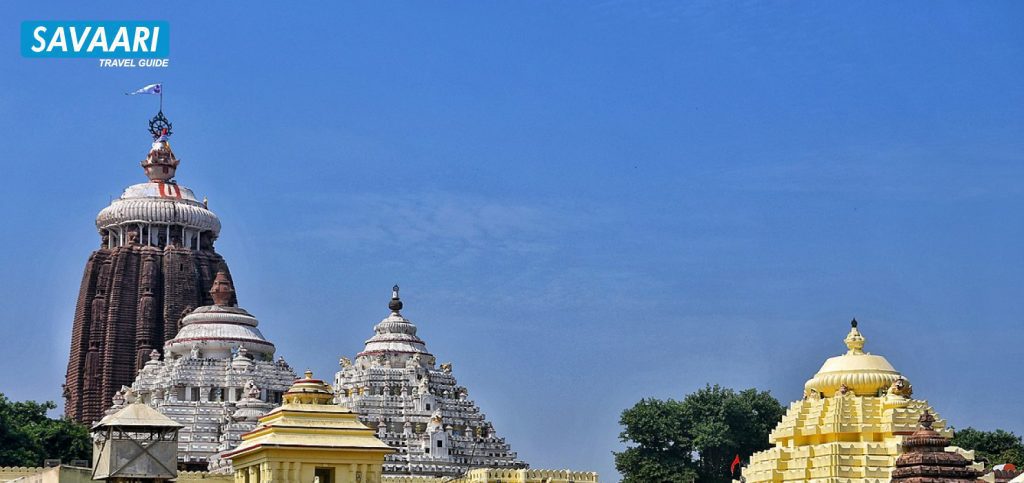
Table of Contents
- Tourist Places in Puri
- Places to visit nearby
- Places to Eat
- How to Reach
Best time to visit
Sri jagannath puri dress code.
- Sri Jagannath Puri Temple Timings
Sri Jagannath Puri Temple
- Unbelievable Facts about Sri Puri Jagannath Temple
- Hotels, Resorts and Homestays
Things to do in Puri
Here are some interesting things to do in this temple town:
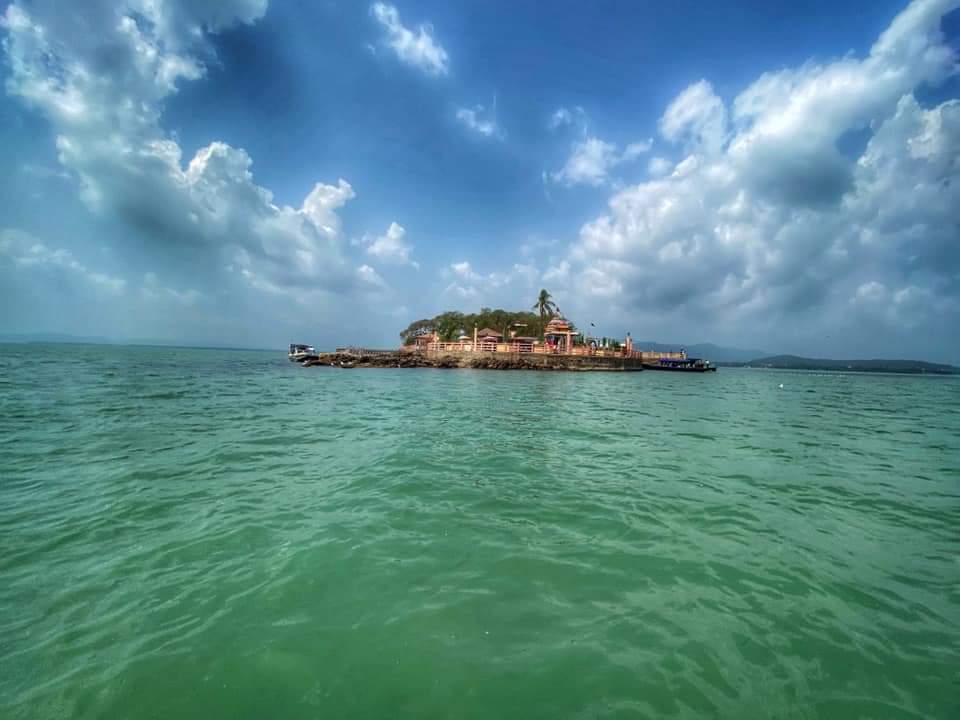
- Visit the Sri Jagannath Temple – Apart from the religious significance, visiting the Sri Jagannath Temple is an experience one must not miss. Try to go there early in the morning and soak in the atmosphere as people throng to the temple for ‘darshan’.
- Explore the numerous east coast beaches – There are many beaches in Puri, including one of the cleanest beaches in India – the Puri Beach , the lesser-known but amazingly beautiful Balighai Beach , and the exotic Baleshwar Beach with a forest cover.
- Visit the Chilika Lake – This is Asia’s largest inland saltwater lagoon and India’s biggest coastal lagoon. It spreads across an area of more than 1000 square kilometres and is home to the Irrawaddy Dolphins . It also attracts exotic migratory birds from different parts of the world.
- Visit the Raghurajpur Craft Village – Your trip cannot be complete without visiting the famous Raghurajpur Craft Village to witness some mesmerizing local art and craft.

Tourist Places to visit in Puri

Here are some tourist places in Puri:
- Puri Beach : This beach is quite close to the Puri Jagannath Temple and has gained popularity as one of the cleanest beaches in India. While the sunrise and sunset at this beach can be memorable, the local street food can surely create a memory that you will cherish forever.
- Atharnala Bridge: A good place for a day picnic with some amazing views of the Jagannath Temple. There are around 18 picturesque arches creating a perfect location to soak in nature. Keep your camera gears handy.
- Sudarshan Crafts Museum: Head to this museum to look at traditional artwork and sculptures on display. You can also indulge in some arts and crafts courses offered by the museum.
- Astaranga Beach: This is a white sand beach with one of the best sunsets in the area.
- Loknath Temple: This is a unique temple dedicated to Lord Shiva. The Shiva Lingam is submerged under the River Ganga and is removed once a year on Pandokhar Ekadasi for worshipping.

Places to visit near Puri
If you are in town for a few days, book an affordable outstation car rentals service in Puri and take a trip to some tourist places nearby which are worth a visit:
- Raghurajpur : Located at a distance of around 10 km, Raghurajpur is well-known around the world for its Pattachitra paintings . These paintings are made on palm leaves using natural colours. Also, the subject of the paintings is usually based on Hindu mythology.
- Konark : Located at a distance of around 38 km, Konark is home to the iconic Sun Temple – a UNESCO World Heritage Site . Ancient temples are spread across the town with some beautiful beaches.
- Chilika Lake : Located at a distance of around 40 km, this is Asia’s biggest saltwater lake . It has a wide range of flora and fauna, making it ideal for nature lovers.
- Pipili : Located at a distance of around 38 km, Pipili is known as the cultural hotpot of Orissa . You can buy some beautiful local handicrafts.
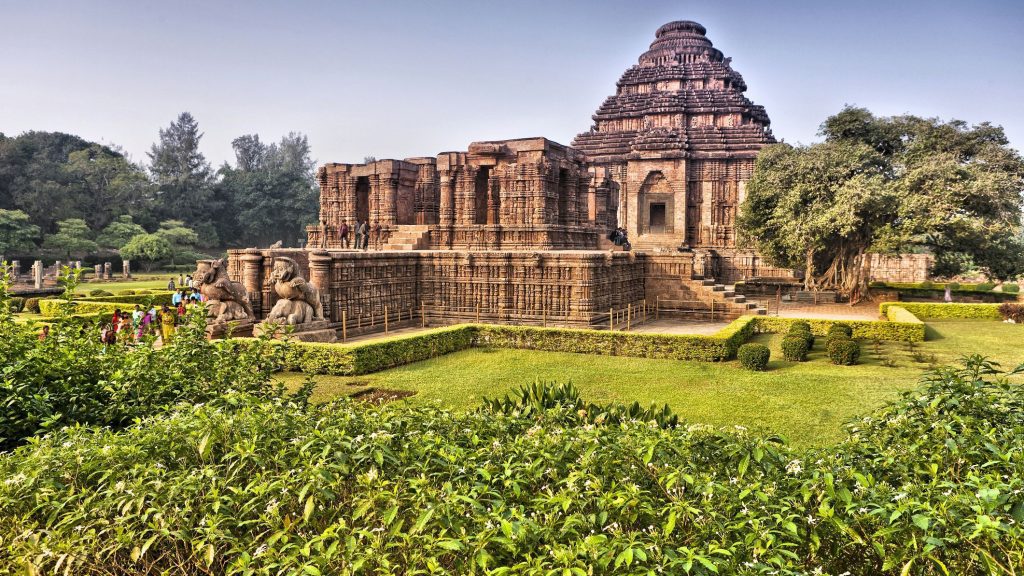
Places to Eat in Puri
Here are some famous places to eat in Puri:
- Honey Bee Bakery & Pizzeria, Chakra Tirtha Road – A laid back café
- The Gajapati, Chakra Tirtha Road – Indian and Chinese cuisine
- Wildgrass, VIP Road – Local seafood specialities
- Chung Wah, VIP Road – Authentic Chinese food
- Radhika, New Marine Drive Road – Indian vegetarian dishes
- Ocean Café, Hans Coco Palms, New Marine Drive Road – For an amazing barbecue on the beach
- Bhojohori Manna, Gopal Ballabh Road – Local delicacies
On Odisha’s eastern coast is the ethereal Chilika Lagoon & like a cherry on top lies Rajhans island- caressed by waves of Bay of Bengal on one side & calm waters of Chilika on the other. Till you visit us next, feast your eyes on these stunning visuals. #StaySafe #OdishaByRoad pic.twitter.com/sy3MCeRUCy — Odisha Tourism (@odisha_tourism) April 30, 2021
How to Plan a Trip
How to reach puri.
Here is how you can reach the pilgrimage town of Puri:
- By Train – Puri is the last railway station on the East Coast Railway route. It is well connected to major cities in India. In fact, many cities have special direct trains to the city for visiting Sri Jagannath Temple.
- Bhubaneswar to Puri Car Rentals – The distance between the two cities is around 70 km. Book a Bhubaneswar to Puri cab and reach your destination in 1.5 hours.
- From Cuttack – The distance between the two cities is around 80-85 km and can be covered within 2 hours by road.
- From Kolkata – The distance between the two cities is around 500 km. Book a Kolkata to Puri cab and reach your destination in 10 hours.
- By Flight – The nearest airport is Bhubaneswar which is at a distance of around 70 km. You can book a Bhubaneswar airport taxi and reach within 1.5 hours.
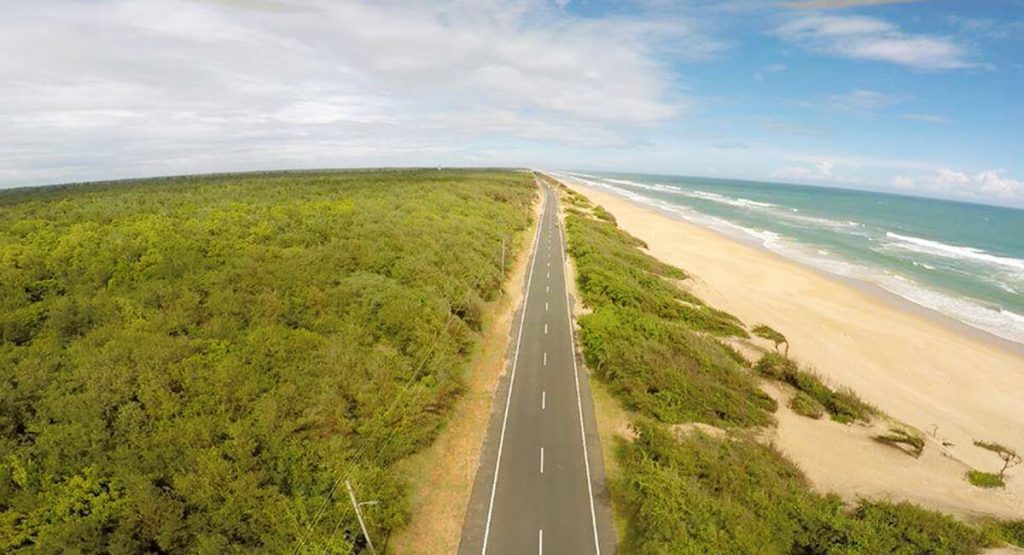
The best time to visit the temple town is from October to February . During this period, the weather is pleasant and cool. This is also the peak season for tourism since you can unwind at the beaches. The annual Rath Yatra takes place during the months of June and July, which you can read all about in our blog. Hence, if you are planning to witness it, then you should plan accordingly. Summers are very hot, with temperatures ranging from 40 to 45 degrees. The city receives heavy rain and intermittent thunderstorms during the monsoon months from June to September.
Puri Jagannath Temple Timings
You can visit Sri Jagannath Temple from Monday to Saturday between 5 AM and 11 PM . The temple is closed on Sundays . The best time to visit Jagannath Temple is early morning when the temple opens.
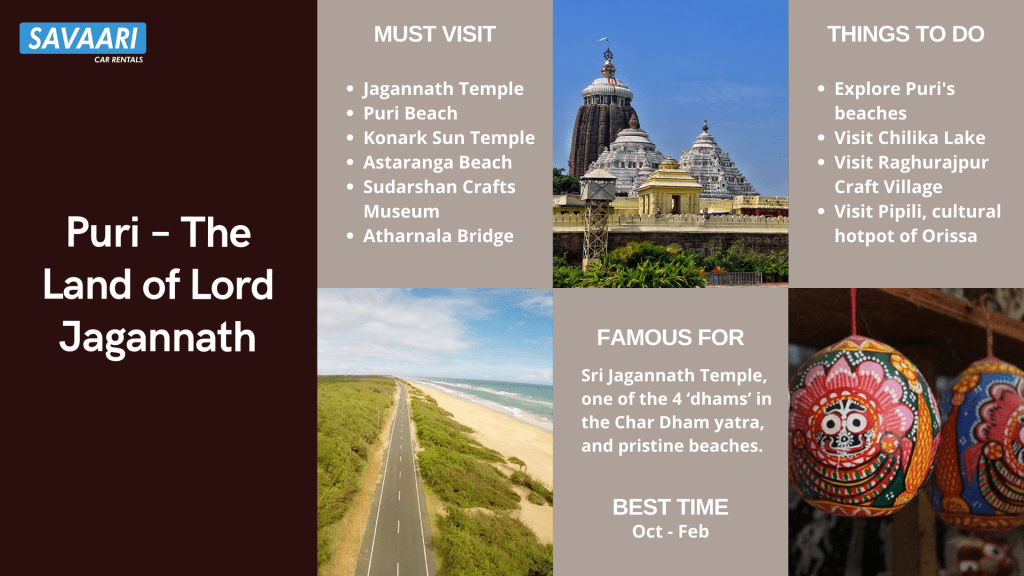
While visiting Sri Jagannath Temple, it is recommended that you follow this dress code:
- Men – Formal clothes. Shorts and other informal attire are not welcome.
- Women – Saree or Salwar Kameez. Short tops and other informal attire are not welcome.

Puri, the Land of Lord Jagannath, is an ancient city and a pilgrimage centre located around 60 km south of Bhubaneshwar, the capital of Orissa. The city is famous for its 12th-Century Jagannath Temple and is one of the original Char Dham pilgrimage places for Hindus. Additionally, some pristine beaches make this town worth a visit.
Puri, located in the eastern state of Odisha, has a rich and vibrant history dating back centuries. Known as the spiritual capital of Odisha, Puri holds immense religious significance as it is home to the famous Jagannath Temple. The city has witnessed the rise and fall of various dynasties, including the Kalinga Empire, the Ganga dynasty, and the Gajapati rulers. With its ancient temples, architectural marvels, and cultural heritage, Puri continues to enchant visitors with its fascinating historical legacy.
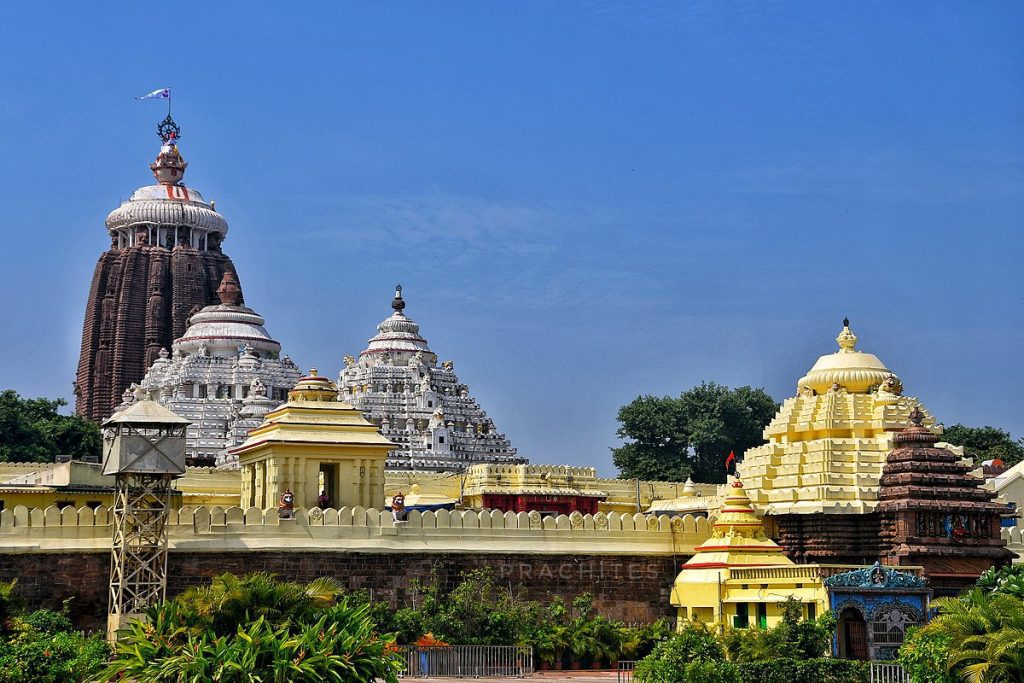
The town is synonymous with Sri Jagannath Puri Temple. It is one of the original four ‘dhams’ in the Char Dham yatra undertaken by many Hindus to attain salvation. Lord Jagannath is a form of Lord Vishnu. While most Hindu temples have idols made from stone or metal, the image of Lord Jagannath is made from wood . This is replaced every twelve or nineteen years through a ceremony called Brahmaparivartan . Three deities are worshipped here – Lord Jagannath, Devi Subhadra, and Lord Balabhadra (elder brother). Sri Jagannath Puri Temple is famous for its annual Rath Yatra or Chariot Festival, where these three deities are pulled on huge decorated chariots. Discover all the essential information about Rath Yatra, the splendid celebration of chariots, by clicking here.
Interesting (Unbelievable) Facts about Sri Puri Jagannath Temple
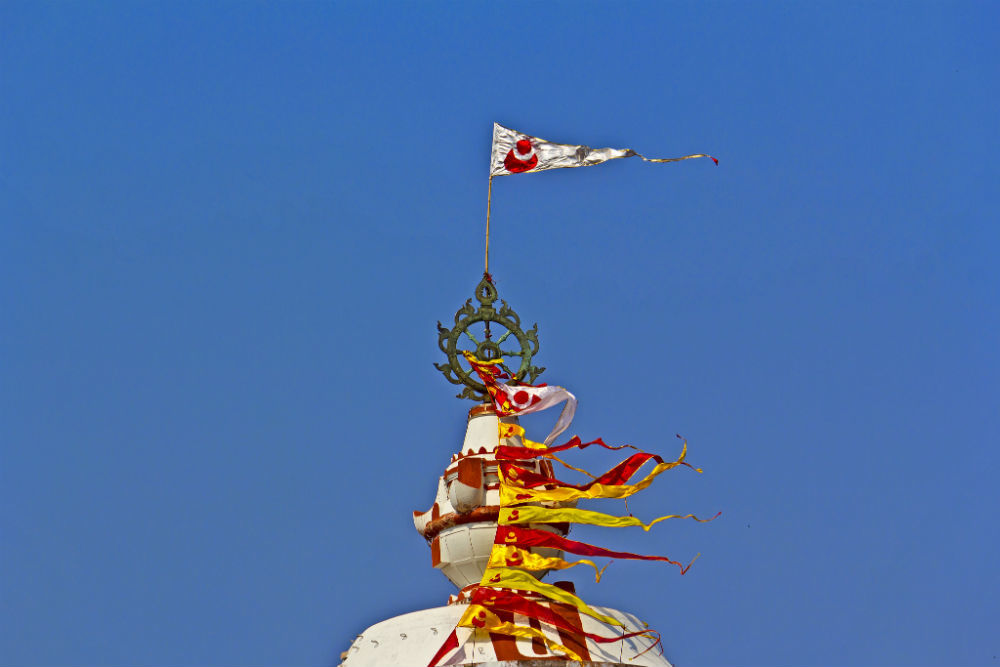
- We all know that a flag flutters in the direction of the wind. However, the flag mounted atop the Jagannath Temple flows in the opposite direction to the wind without any scientific explanation.
- Every day, a priest climbs the walls of the temple to change the flag atop the temple dome. The height is equivalent to that of a 45-storey building. This is done without any protective gear. It is believed that if the ritual is skipped even for a day, the temple will have to be kept closed for 18 years.
- The Jagannath Temple has no shadow at all ! In no direction, at any time of the day.
- There is a Sudarshan Chakra at the dome of the temple weighing about one tonne. Without modern machines, it is a mystery how it was placed there.
- Locals say that they have never encountered a bird above the dome of the temple.
- While the number of people visiting the temple varies between 2,000 and 200,000 every day, the prasadam prepared is never wasted – not even a bite!
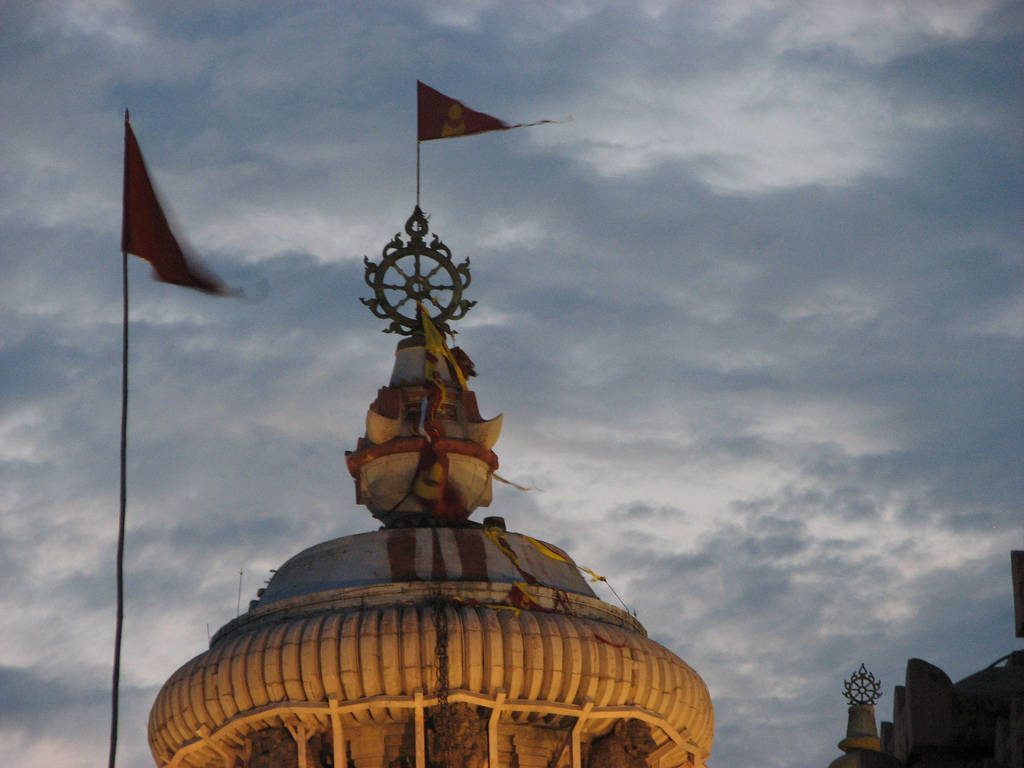
Hotels in Puri
Here are some popular hotels for a memorable stay:
- Mayfair Heritage , Chakra Tirtha Road
- Mayfair Waves, Chakra Tirtha Road
- Pride Ananya Resort, VIP Road
- The Hans Coco Palms, New Marine Drive Road
- NRS Royal Palace, Sipasarubali
- Sterling Puri, Sipasarubali
- Pramod Convention & Beach Resort, C.T. Road
- Toshali Sands Nature Escape, Puri Marine Drive
- Hotel Pramod House of Classics, Station Road
Best Road-trips to Puri
Puri is a mesmerizing destination that offers a perfect blend of spirituality, history, and natural beauty. This travel blog has uncovered the captivating allure of Puri, from the sacred Jagannath Temple to the pristine beaches and the vibrant local culture. Exploring the city’s rich history, immersing in its religious fervour, and indulging in its delicious cuisine have been highlighted as key experiences for any traveller. Whether you seek spiritual enlightenment, cultural exploration, or a relaxing beach getaway, Puri has it all. Plan your trip to this enchanting city and embark on a remarkable journey filled with unforgettable memories. Puri awaits with open arms, ready to captivate your senses and leave an indelible mark on your soul.
Last Updated on February 2, 2024 by
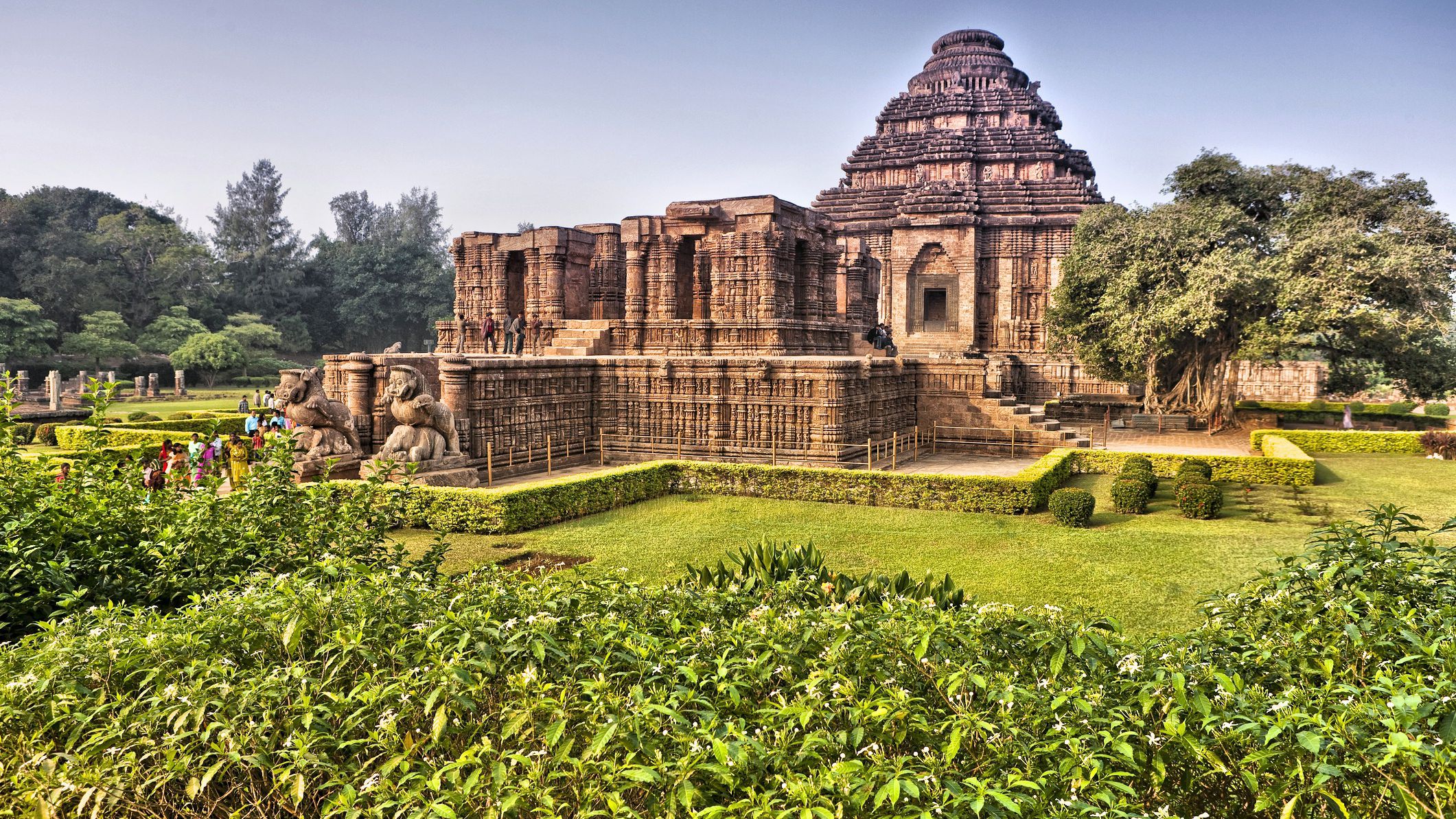
About the author
Related posts.
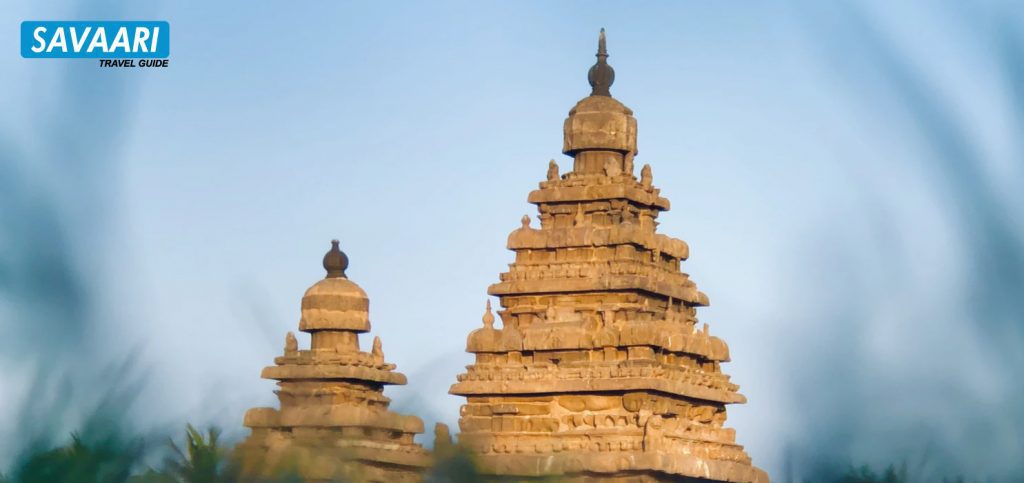
Things to do in Mahabalipuram – A complete Travel guide
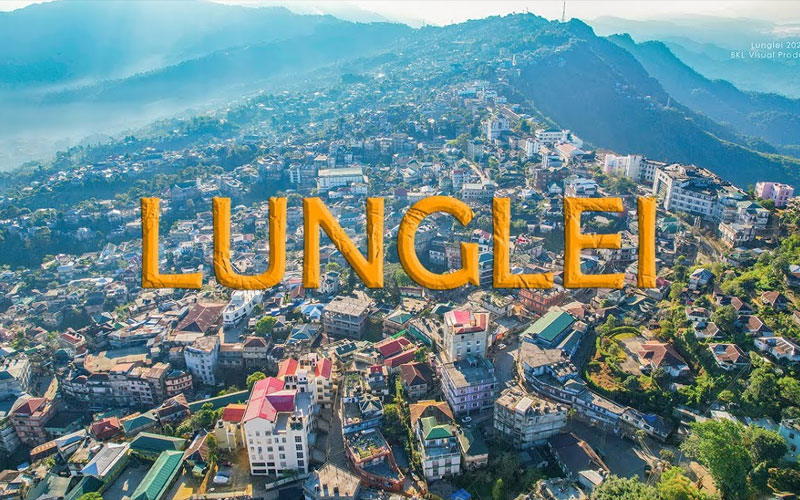
Things to do in Lunglei – A complete travel guide
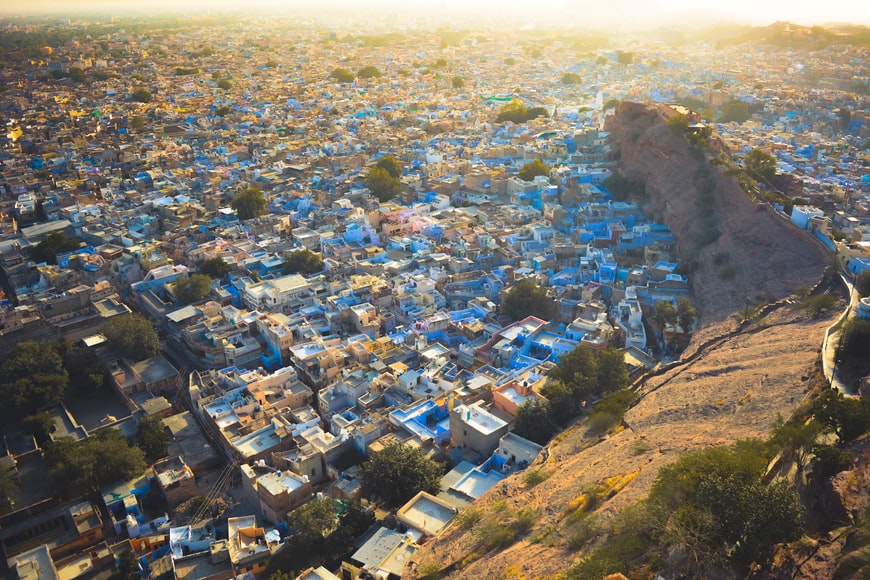
Top Things to Do in Jodhpur – A complete Travel Guide
Leave a reply cancel reply.
Your email address will not be published. Required fields are marked *
Save my name, email, and website in this browser for the next time I comment.
- Book Puja Online
The best guide for travel to Puri Jagannath Temple
- by Pandit Rashmi Ranjan Rath
- Famous Temples travel guide
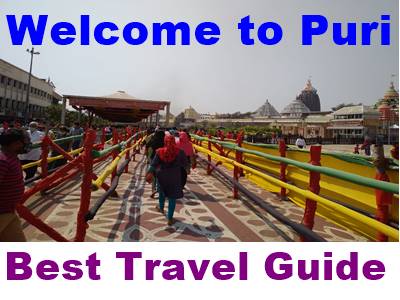
The guide travel to Puri prepared with a view to helping the tourists and pilgrims. They can visit the famous places of the Puri district. It makes his/their travel journey memorable & enjoyable.
The Puri is a coastal district in the eastern part of Odisha which is famous for Lord Jagannath Temple. It is a beautiful tourist place and peoples from all over the world visited this place. It is a 60 km distance from the capital of Odisha.
It is also known as the heritage city of Odisha. The popular names of Puri are Jagannath Dham, Purusottama Kshetra, Shree kshetra, etc.
Which is the best time to travel to Puri Jagannath Temple?
This is a suitable tourist place for all the season. But from October to the end of February is the best time for tourists.
During this period the climate of Puri is very pleasant and the temperature of the climate is 10 0c to 20 0c . The period of Rath Yatra (July to August). It is a great time for pilgrims to take part in the Chariot festival of Lord Jagannath.
How to travel to Puri?
This place is well connecting with the Railway, Bus, and Air, etc.
The NH-356 is connected from Bhubaneswar to Puri. The following communication facility is available for Puri.
It is connected with inter-state through Railway lines. Many trains up/down from Puri to different states of India.
The station code of Puri railway station is “PURI”. The station name of Puri is also called “Puri railway station”.
You can check the train names from your source to destination Puri through the IRCTC website .
Puri station is in the heart of the city and nearest to all hotels. The Jagannath temple is 2km from the station and the Sea beach is 1.5km from the Puri station.
Bus services are available from Kolkata to Puri. But from other states, train communication is better.
The inter-district bus communication to Puri is very good. The bus stand of Puri is at Srigudicha Temple. It is 3km distance from Jagannath temple and also 3km distance from the sea beach.
The nearest airport is Biju Pattanaik International Airport at Bhubaneswar. It is a 60km distance from Puri.
You can travel to Puri by train from Bhubaneswar railway station.
or travel through City bus
or taxi from Bhubaneswar.
Is the lodging facility well in Puri?
Yes, the lodging facility is very well in Puri city. You can find your budget hotel near Sea beach as well as Grand road Puri.
The hotel and Lodges are starts from Rs.500 per day onwards. You can book Lodging through the websites of hotels and also compare the price as per your budget. The check-out time of Puri Hotels is 7 am/8 am morning.
The lodging facilities are also provided by the Puri temple administration. The pilgrims book their accommodation at an affordable price on the following lodging.
1. Neeladri Bhakta Niwas- It is near the town Police station. It is about 500m distance from the temple. It is 2km distance from the railway station and sea Beach.
2. Shree Gundicha Bhakta Niwas- It is about 3km from the Jagannath temple and Sea beach. It is near Gundicha Temple.
3. Nilachal Bhakta and Yatri Niwas- It is Infront of the town Police station. It is about 500m distance from the temple. It is 2km distance from the railway station and sea Beach
You can contact and book these hotels through their Puri temple online website .
Is there any Shoe and mobile stand near Jagannath Temple?
Yes, The temple administration provided this facility to all for free of cost. The stand situated on the right side of the entrance gate as shown in the below picture.
There is a very nice arrangement by the Temple administration for the Pilgrims. All visitors kept their mobile, Belt, Shoe, etc. on the stand.
The stand provided a Bag in which you can put your shoe, Belt, Mobile, etc. in the different packets. Then handover it to the stand authorities. They will check these articles and provide you a ticket. At the time of returning, you can show your ticket at the exit gate and taken back your articles.
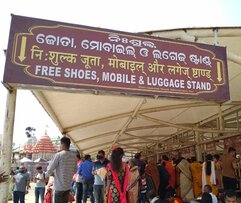
Is there any information center near Jagannath Temple?
Yes, the Shree Jagannath temple information center is on the right side of the entrance. It is next to the mobile stand.
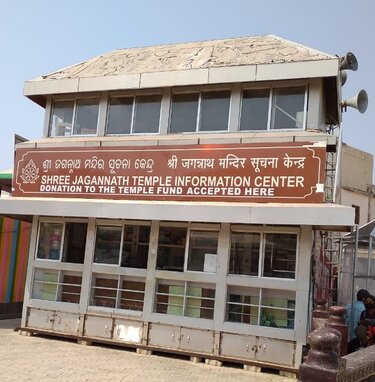
What are the famous places in Puri?
The following places are famous tourist places in the Puri district.
- Shree Jagannath Temple – The world-famous Jagannath temple architecture and traditional engineering is very magnificent.
- Loknath Temple – This is a famous Shiva Temple at a distance of 3.5km from Puri city. Local buses, taxis, and auto are available to visit this temple.
- Puri Sea Beach- The sea beach of Puri is very beautiful. You need to adopt the safety measures during bathing on the Sea beach. You also take the help of Security guards for safety tips of the beach.
- Alarnath Temple- This temple situated in Brahmagiri which is 24km from Puri city. The Lord Vishnu is worshipped in this temple as Alarnath.
- Satapada Dolphin sanctuary – It is a 50km distance from Puri city. Satapada on Chilika is very famous for Dolphins. It is a very nice place for boating.
- Sun Temple Konark & Marine Drive- Sun Temple Konark is 34km distance from Puri town. Bus, Taxi & auto always available to visit the world-famous Konark temple. The road from Puri to Konark known as Marine Drive. The place is very much attractive. It causes most of the filmmakers to love to have scenes for their films here.
- Sakhigopal Temple – This Temple know as Satyabadi Gopinatha Temple. It is an 18 km distance from Puri town. This temple is famous for touching the Radha’s feet on the occasion of the Anla Navami Festival (Odiya Kartika Masa).
- Raghurajpur Artist Village – It is a craft village within 11km of distance from Puri town. This village is famous for Pattachitra painters and Gotipua dance troupes.
- Pipil – Pipili is famous for designing beautiful Applique handicrafts. It is a 37km distance from Puri town.
Smart city Bhubaneswar (Capital of Odisha)
Bhubaneswar is the capital of Odisha and 60km distance from Puri town. It is popularly known as the temple city of Odisha.
There are many beautiful places like Shree Lingaraj Temple & Bindu Sagar lake. Odisha State Museum. Nadankanan Zoological Park. Dhauligiri Baudha Stupa. Khandagiri caves, etc.
How many days are enough to travel to Puri?
Minimum 03 to 04 days is required to visit the above places and enjoy the journey successfully. The following is the day-wise suggestive plan to visit the famous places in Puri and nearer cities.
Visit the Lord Jagannath Temple, Shree Gundicha Temple, Loknath Temple, Sea Beach, Raghurajpur Artist Village, and other temples & Mathas adjacent to Jagannath Temple.
Visited Sun Temple Konark, Enjoy Marine drive and sea beach at Chandrabhaga, Ram Chandi temple on way to Konark, Sakhigopal Temple, Pipili, etc.
Visited Alarnath Temple and Satapada Dolphin sanctuary. Enjoy the boating in Chilika lake.
Visited Temple city Bhubaneswar and Famous Shiv temple Shree Lingaraj, Odisha State museum, etc.
Important Official websites for your reference
1 . Official website of Shree Jagannath Temple Puri.
2. Official website of Puri district administration
3. Official website of Odisha govt. Tourism
Puri is a beautiful heritage city of Odisha. It is famous for Lord Jagannath Temple, Sea beach, Pattachitra painters, Sand Art, and beautiful Applique handicrafts. 3 to 4 days is required to visit famous places in Puri.
The communication and accommodation facility at Puri is very well. I hope this travel guide to Puri will help you to plan your journey successfully in a short period.
Please feel free to contact us at our official mail id-
[email protected]
“Jay Jagannath”
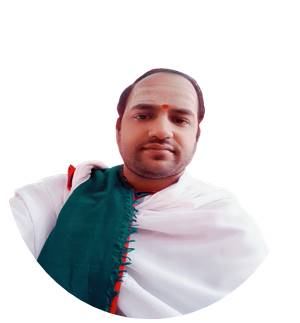
Pandit Rashmi Ranjan Rath is a Vedic researcher and also recognized by the Lord Jagannath Temple administration, Puri as a “Shree Jagannath Sanskruti Pracharak” in the year 2013. He has visited four Dhams of India for creating Lord Jagannath consciousness Worldwide. He is also the founder of “ Baidika Brahamana Parisada Odisha ”.
.widget_search .search-form .search-submit, .widget_search .search-form .search-field { height: auto; } Search
The Economic Times daily newspaper is available online now.
Asi to resume technical survey of jagannath temple 'ratna bhandar' from saturday.
The Archaeological Survey of India will conduct a technical survey of the Ratna Bhandar treasury at the 12th-century Shree Jagannath Temple in Puri from September 21 to 23. Devotees will face restrictions between 1 pm and 6 pm during this period. The survey aims to complete before Dussehra and Kartika month rituals.
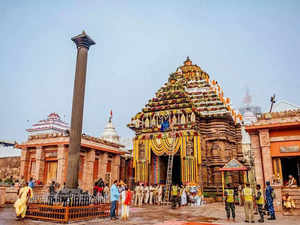
Artificial Intelligence(AI)
Java Programming with ChatGPT: Learn using Generative AI
By - Metla Sudha Sekhar, Developer and Lead Instructor

Basics of Generative AI : Unveiling Tomorrow's Innovations

Generative AI for Dynamic Java Web Applications with ChatGPT

Mastering C++ Fundamentals with Generative AI: A Hands-On

Master in Python Language Quickly Using the ChatGPT Open AI

Office Productivity
Zero to Hero in Microsoft Excel: Complete Excel guide 2024

Vastu Shastra Course
By - Sachenkumar Rai, Vastu Shashtri

Data Science
SQL for Data Science along with Data Analytics and Data Visualization

Web Development
A Comprehensive ASP.NET Core MVC 6 Project Guide for 2024

Mastering Microsoft Office: Word, Excel, PowerPoint, and 365

Digital marketing - Wordpress Website Development
By - Shraddha Somani, Digital Marketing Trainer, Consultant, Strategiest and Subject Matter expert

Mastering Full Stack Development: From Frontend to Backend Excellence

Financial Literacy i.e Lets Crack the Billionaire Code
By - CA Rahul Gupta, CA with 10+ years of domain experience, trainer

Business Storytelling Masterclass
By - Ameen Haque, Founder of Storywallahs

Future of Marketing & Branding Masterclass
By - Dr. David Aaker, Professor at Haas School of Business

Human Potential and the Future of Employment
By - Lynda Gratton, Co-chair of the World Economic Forum Council on Work, Wages and Job Creation, Professor of Management Practice

ESG and Business Sustainability Strategy
By - Vipul Arora, Partner, ESG & Climate Solutions at Sattva Consulting Author I Speaker I Thought Leader

Financial Reporting and Analytics
By - Dr. C.P. Gupta, Professor: Department of Finance and Business Economics, University of Delhi
Read More News on
(Catch all the Business News , Breaking News , Budget 2024 Events and Latest News Updates on The Economic Times .)
Subscribe to The Economic Times Prime and read the ET ePaper online.

A list of 20 fast-growing small-cap stocks, and what makes them multibaggers

No more just top-up shopping, Zepto, Blinkit et al. can now do this to a brand

WFH@Nvidia. It’s partial at Microsoft amid huge M-cap. TCS, with flat margins, wants staff in office.

Bata India sees a flat performance. Is the brand losing its relevance?

Can Mukesh Ambani win the cola battle that Virgin’s Branson lost?

Why InGovern wants Sebi to intervene in CCI’s Amazon, Flipkart probe leaks
Find this comment offensive?
Choose your reason below and click on the Report button. This will alert our moderators to take action
Reason for reporting:
Your Reason has been Reported to the admin.

To post this comment you must
Log In/Connect with:
Fill in your details:
Will be displayed
Will not be displayed
Share this Comment:
Stories you might be interested in
- Ground Reports
- 50-Word Edit
- National Interest
- Campus Voice
- Security Code
- Off The Cuff
- Democracy Wall
- Around Town
- PastForward
- In Pictures
- Last Laughs
- ThePrint Essential


Puri, Sep 21 (PTI) The Archaeological Survey of India (ASI) on Saturday afternoon began the second round of technical survey of the Ratna Bhandar of Puri’s Jagannath temple, officials said.
Shree Jagannath Temple Administration (SJTA) barred devotees from having a ‘darshan’ of the sibling deities from 1 pm to 6 pm during the three-day survey of the treasury. The main gates of the temple will be closed for devotees during the survey.
SJTA chief administrator Arabinda Padhee sought cooperation from devotees in this matter.
Ratna Bhandar Inventory Committee Chairman Justice Biswanath Rath, who also entered the temple to take part in the survey, said, “The ASI will undertake the survey on September 21, 22 and 23 during which it will be ascertained whether there is any hidden chamber or tunnel inside the Ratna Bhandar. They have brought sophisticated radar for this purpose.” The first round of the survey was held on September 18, when a 17-member technical team of ASI led by its Additional Director General Jahnavij Sharma conducted the preliminary inspection of Ratna Bhandar and its laser scanning in the presence of Padhee and Justice Rath.
The team also comprised experts from the Council of Scientific and Industrial Research (CSIR) and National Geophysical Research Institute (NGRI), Hyderabad.
On September 18, the SJTA had written to ASI requesting for completion of the technical survey by September 24 in view of special rituals of the deities during Dussehra and ‘Kartika’ month. The rituals for Durga Puja will commence at the temple on September 24.
The SJTA had also requested ASI to submit the survey report within the stipulated time, sources said.
The temple administration has shifted all valuables and jewellery from the outer and inner chambers of Ratna Bhandar and stored them in a temporary strong room within the temple premises, an official said, adding all the activities are being carried out in accordance with the Standard Operation Procedure (SOP) of the state government. PTI AAM AAM ACD
This report is auto-generated from PTI news service. ThePrint holds no responsibility for its content.
Subscribe to our channels on YouTube , Telegram & WhatsApp
Support Our Journalism
India needs fair, non-hyphenated and questioning journalism, packed with on-ground reporting. ThePrint – with exceptional reporters, columnists and editors – is doing just that.
Sustaining this needs support from wonderful readers like you.
Whether you live in India or overseas, you can take a paid subscription by clicking here .
LEAVE A REPLY Cancel
Save my name, email, and website in this browser for the next time I comment.
Most Popular
Lesson from sri lanka, bangladesh, pakistan: if you have no patience, you don’t deserve democracy, adventure tourism is not accessible for women—sexual harassment, safety risks, hc strikes down reservation of tn panchayat post for dalit women, president-elect vows to continue fight.
Required fields are marked *
Copyright © 2024 Printline Media Pvt. Ltd. All rights reserved.
- Terms of Use
- Privacy Policy

IMAGES
COMMENTS
The best time to visit Puri is between October and February. Not only is the weather a comfortable one, with temperatures which fluctuate between 16 degree Celsius and 28 degree Celsius, but the tourist attractions in this city also have an ethereal aura during this season. The best places to visit in this season are the tranquil Chilika Lake ...
The Jagannath temple in Puri, Odisha, is one of the holy char dham abodes of God that are considered to be extremely auspicious for Hindus to visit (the others are Badrinath, Dwarka, and Rameshwaram).If you don't let money-hungry Hindu priests (locally known as pandas) mar your experience, you'll find that this massive temple complex is a remarkable place.
The Jagannath Temple, located in Puri, Odisha, is one of the most revered Hindu temples in India. Devotees from all over the world visit this sacred shrine to seek the blessings of Lord Jagannath, Balabhadra, and Subhadra. The temple, known for its intricate architecture and rich religious history, is a must-visit destination for those ...
10 PM. High. Sunday. 6 AM. 10 PM. Very High. Strictly following timetable is quite impossible in practical day to day activities & the timetable also changed On festive days due to special pujas. Ratha Yatra is the best time in a year to visit Srikhetra Puri. There is no entry fee charged for entering into the temple.
The best time to visit Jagannath Puri for budget travelers is during the shoulder seasons of October to March. During this period, the weather is pleasant. It avoids the extreme heat of summer and the heavy monsoon rains. Additionally, costs for accommodation and travel are often lower during these months. Travelers can take advantage of off ...
The Shree Jagannath Puri Temple is a must-see for any traveller, since it is both a Dham and a major tourist site. Check out Puri's divinity! Skip to content. September 20, 2024 ... Brace yourselves as we proceed to the most exciting part of Shree Jagannath Puri Temple, "Rath Yatra"! The Rathyatra Puri, also referred to as the Chariot ...
The Jagannath Temple in Puri is a sacred Hindu temple dedicated to Lord Jagannath, a form of Lord Vishnu. The temple is a part of the Char Dham pilgrimages that a Hindu is expected to make in one's lifetime. It stands tall in the coastal town of Puri in the state of Odisha, India, and its towering structure dominates the skyline.
The Puri Jagannath Temple is open to devotees and visitors from 5:00 AM to midnight. To avoid large crowds, it is advisable to visit early in the morning around 7:00 AM or after 9:00 PM. The serene ambiance during these hours enhances the spiritual experience. There are no entry fees to visit the temple.
How much time it will take to visit the Jagannath Temple, Puri? If you want to receive a comprehensive darshan, it will take about 1.5 to 2 hours. The optimum time to go and get the ticket for darshan is on or before 7:00 AM the morning. The ticket distribution process begins at 7:00 AM and lasts until 7:20-7:25 AM.
Puri Jagannath Temple Accommodation: Yatri Niwas & Nilachal Bhakta Niwas Every year, millions of tourists from all over the world visit for recreation, pleasure, and devotion. Keeping the needs of the devotees in mind, the Jagannatha Temple Administration has created " Nilachal Bhakta Niwas & Nilachal Yatri Niwas ," a brand new guesthouse ...
2. Sri Jagannath Puri Temple. Top Attraction 3.6 /5. 2 km. from city center 2 out of 29. Places To Visit in Puri. Shree Jagannath Puri temple, one of the most majestic monuments of Odisha, was built by a famous king of Ganga Dynasty Ananta Varman Chodaganga Deva.
Puri Beaches are a great place to swim about or simply even lie around enjoying the lashing waves. Water lovers and pilgrims alike visit and relax at the tempting beaches in Puri.There are around five beaches of great prominence in Puri namely Balighai beach, Beleswar beach, Swargadwar beach, Puri beach, and the Chandrabhaga beach.
June to March is the best time to visit Jagannath Puri. The first and most important reason is that the world famous Rath Yatra is mostly celebrated in the month of July. Other festivals are also celebrated with great reverence at this time of the year. Apart from this, the weather also remains fine. The is from October to March.
We reached in Puri at around 12 and waited in long queue to visit famous Shri Jagannath Puri temple. It is one of the 'four abodes' in India famous for pilgrimage. Lakhs of people from India and all around world comes to see and learn about the rich history of Shri Jagannath Puri Mandir. There is very famous public procession called "Rath Yatra ...
Know the best time to visit Puri to plan a memorable trip. October to February- It is the winter season and has the most favorable weather. The temperature fluctuates between 15 to 27 degree Celsius. For tourists, it is the best season to visit Puri. The weather is breezy - ideal for beach walks and sightseeing visits.
Puri Jagannath, Konark Sun temple, Pattachitra art in best of Odisha in 2 days. from. ₹23,670. per adult (price varies by group size) Private Excursion to Puri from Bhubaneswar. from. ₹16,784. per adult (price varies by group size) Konark and Chilika Lake: A Private Day Tour from Bhubaneshwar.
Jagannath Temple: Best times to visit. The most famous festival at the temple is the annual Rath Yatra, also known as the Gundicha Yatra. During the Yatra, which is carried out on the second day ...
The best time to visit Jagannath Puri is between August and February when the weather is pleasant and the temperature ranges between 16°C and 28°C. This is a good time to enjoy the beach and visit temples. The summer season from March to May is not a very good time to visit Jagannath Puri as the weather is very hot and humid with temperatures ...
By Tusk Travel Team - March 18, 2023 - Odisha. Odisha is referred to as the Land of Lord Jagannath because of its association with the Hindu god (literally the Lord of the Universe). Since its construction in the 12th century AD, the temple at Puri has served as the spiritual hub of the Jagannath cult, drawing devotees from all over the globe.
The preparations for constructing the majestic chariots for the holy trinity 'Lord Jagannath', 'Devi Subhadra', and 'Lord Balabhadra' are going in full swing. This is indeed the best time to travel to Puri to enjoy a lovely beach vacation and witness the famous Jagannath Rath Yatra and offer your prayers to the holy trinity.
This is located just beside Jatiya Baba samadhi Mandir in Jagannath Puri. Narendra Sarovar is quite renowned and one can avail cabs to reach here directly. Featured Book on Jagannath Puri Dham Darsana. Jagannath Puri, Cuttack & Balasore - Holy dhams, History & Travel guide; Jagannath Puri - Airport, Railway Station & Accommodations
Visit the Sri Jagannath Temple - Apart from the religious significance, visiting the Sri Jagannath Temple is an experience one must not miss. Try to go there early in the morning and soak in the atmosphere as people throng to the temple for 'darshan'. Explore the numerous east coast beaches - There are many beaches in Puri, including one of the cleanest beaches in India - the Puri ...
What are the famous places in Puri? The following places are famous tourist places in the Puri district. Shree Jagannath Temple - The world-famous Jagannath temple architecture and traditional engineering is very magnificent.; Loknath Temple - This is a famous Shiva Temple at a distance of 3.5km from Puri city. Local buses, taxis, and auto are available to visit this temple.
Puri Jagannadh was born on 28 September 1966 in Pithapuram, Andhra Pradesh. [10] [11] [2] His native place is Bapiraju Kothapalli village of Anakapalli district in Andhra Pradesh.He was schooled at St. Theresa High School, Pedda Boddapalli and graduated from A. M. A. L. College, Anakapalle in 1986. [11] [12]His first younger brother, Petla Uma Sankara Ganesh, is an MLA from Narsipatnam, YSR ...
The Archaeological Survey of India will conduct a technical survey of the Ratna Bhandar treasury at the 12th-century Shree Jagannath Temple in Puri from September 21 to 23. Devotees will face restrictions between 1 pm and 6 pm during this period. The survey aims to complete before Dussehra and Kartika month rituals.
Puri: Are there 'hidden chambers' inside Jagannath temple's treasury? Survey goes on As the Archaeological Survey of India conducts a three-day survey of the 'Ratna Bhandar' to discover 'hidden chambers' if any, devotees are barred from visiting the temple deities from 1 pm to 6 pm
Puri, Sep 21 (PTI) The Archaeological Survey of India (ASI) on Saturday afternoon began the second round of technical survey of the Ratna Bhandar of Puri's Jagannath temple, officials said. Shree Jagannath Temple Administration (SJTA) barred devotees from having a 'darshan' of the sibling deities from 1 pm to 6 pm during the three-day survey […]